Table of Content
Sequoia National Park | Introduction
Sequoia National Park is located in central California. Established in 1890, it is the fourth national park in the United States and preserves a large grove of giant sequoia trees. It is a five-and-a-half-hour drive from both San Francisco and Los Angeles.
The ideal time to visit Redwood National and State Parks is from late spring to early fall, as some attractions are only open during the summer. Since Redwood National Park is adjacent to Kings Canyon National Park and managed together, the roads within the parks are directly connected. Redwood National Park is located to the south, while Kings Canyon National Park is to the north. It's common to include both parks in the same trip. You can enter Redwood National Park via Highway 198 and exit Kings Canyon National Park via Highway 180.
For the recommended duration, plan at least 1 day for Redwood National Park and 1 day for Kings Canyon National Park. Factoring in travel time to and from the national parks, we recommend to allocate a minimum of 4 days and 3 nights for the entire trip.Kings Canyon National ParkRedwood National and State Parks are located to the south, while Kings Canyon National Park is situated to the north. It's common to include both parks in the same itinerary. You can take Highway 198 to enter Redwood National Park and Highway 180 to exit Kings Canyon National Park.
For a recommended visit, plan at least 1 day for Redwood National Park and 1 day for Kings Canyon National Park. Considering travel time to and from the national parks, it's advised to allocate a minimum of 4 days and 3 nights for the entire trip.Sequoia National Park has three areas: Foothill, Giant Forest, and Mineral King. Most of the main attractions are in the Giant Forest area, so if you only have one day, stay in the Giant Forest. Although the attractions are quite concentrated, there are a lot of scenic spots, if you are into hiking, you may want to spend a day and a half here.
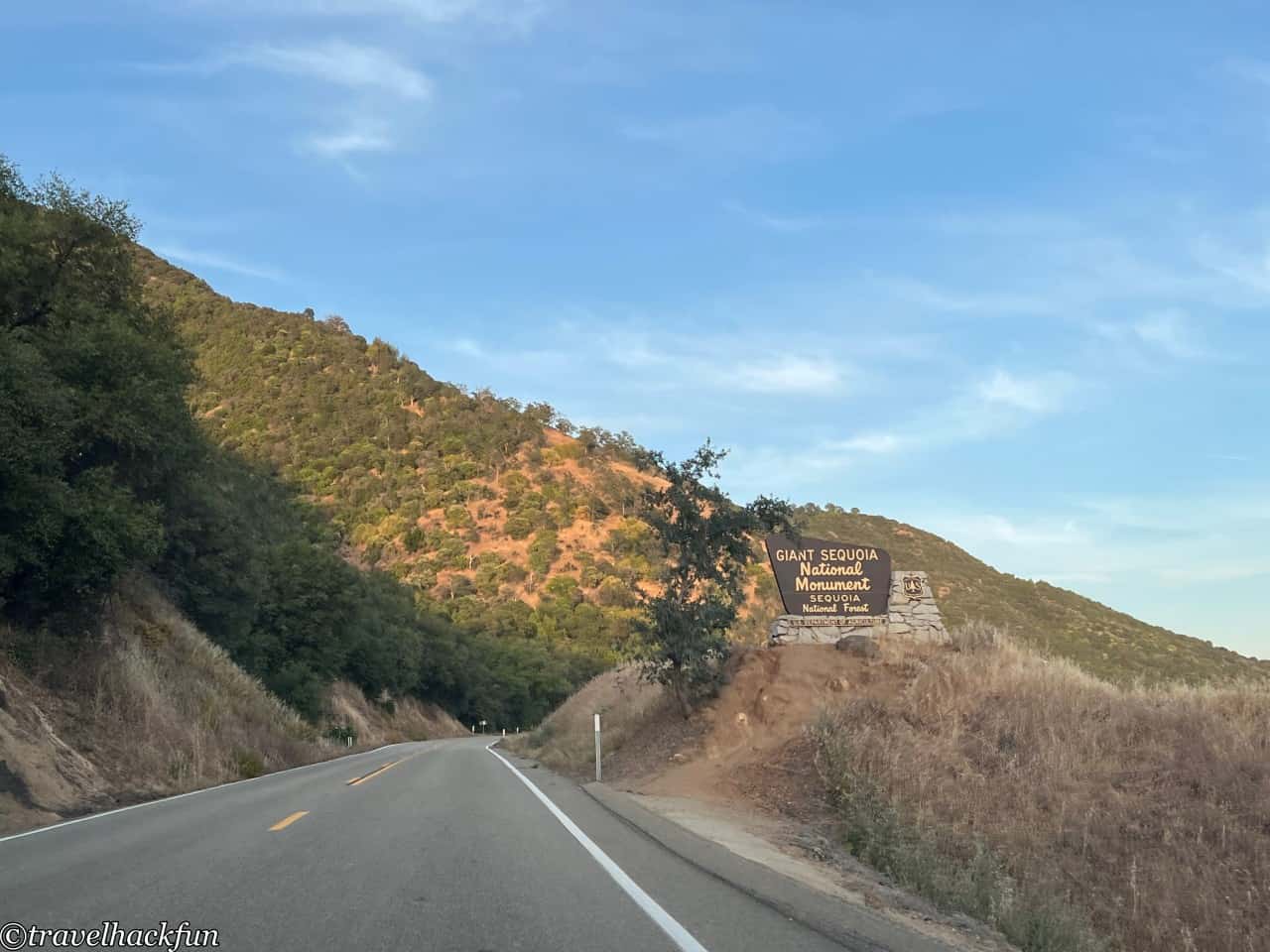

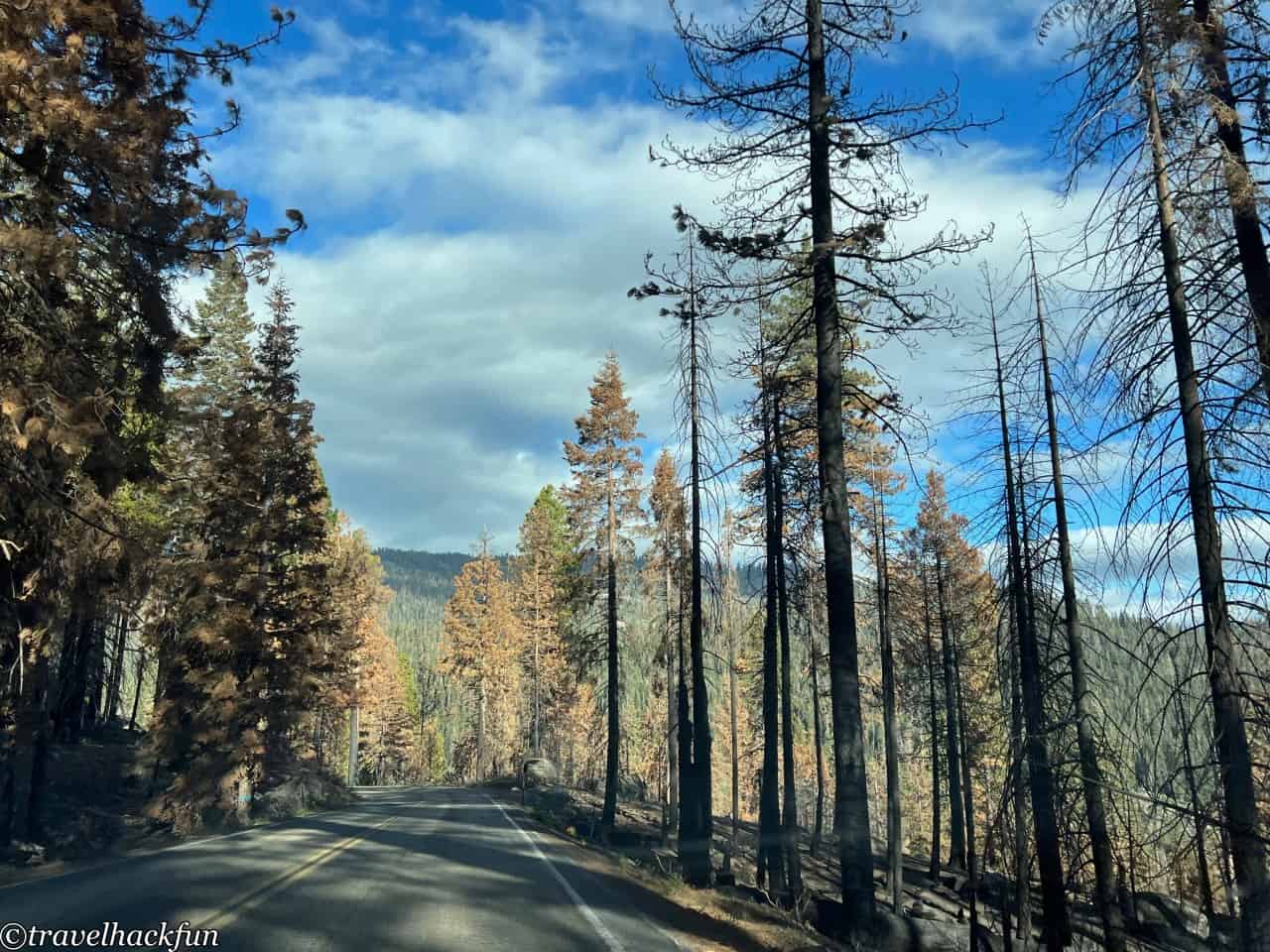
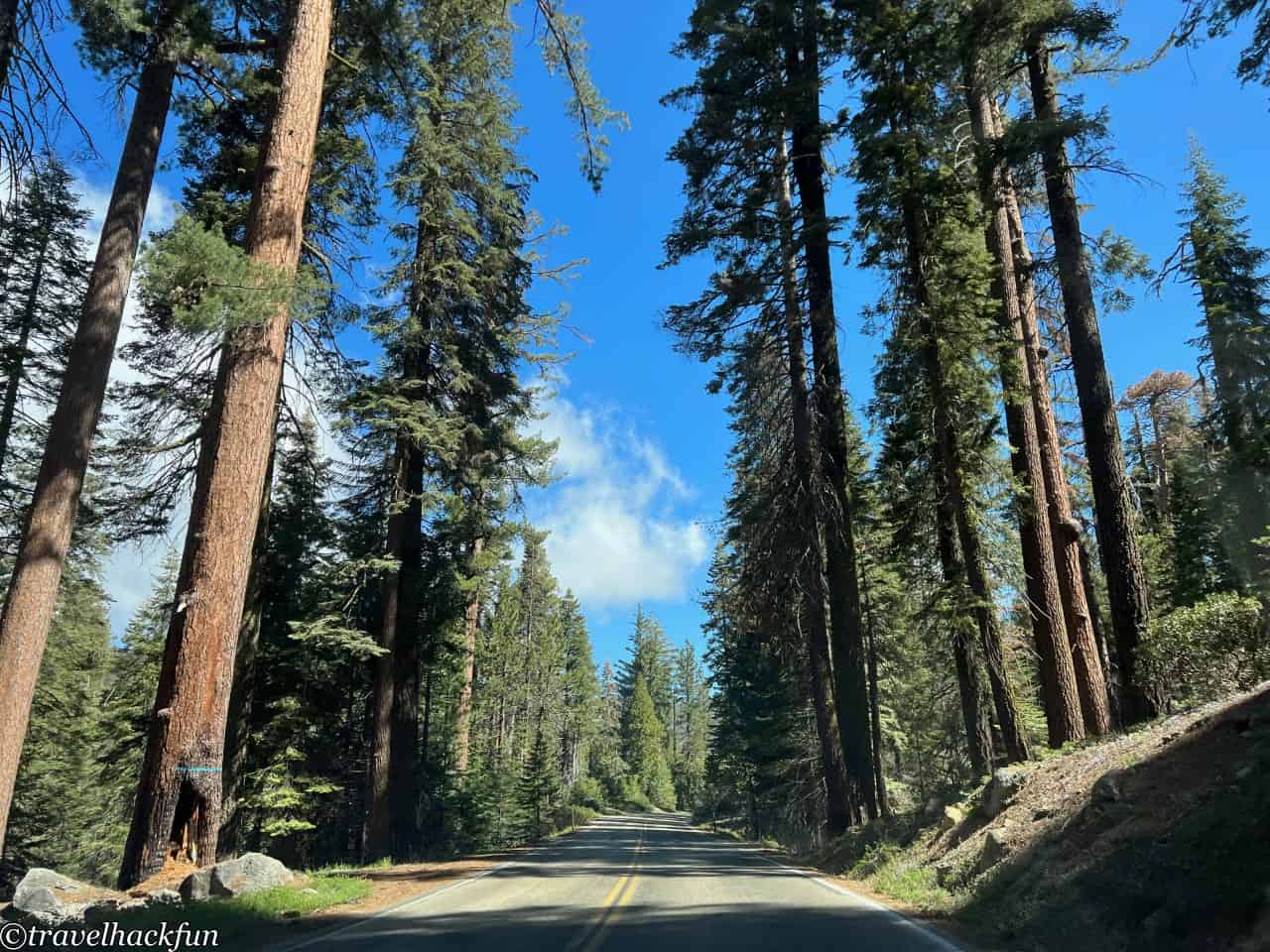
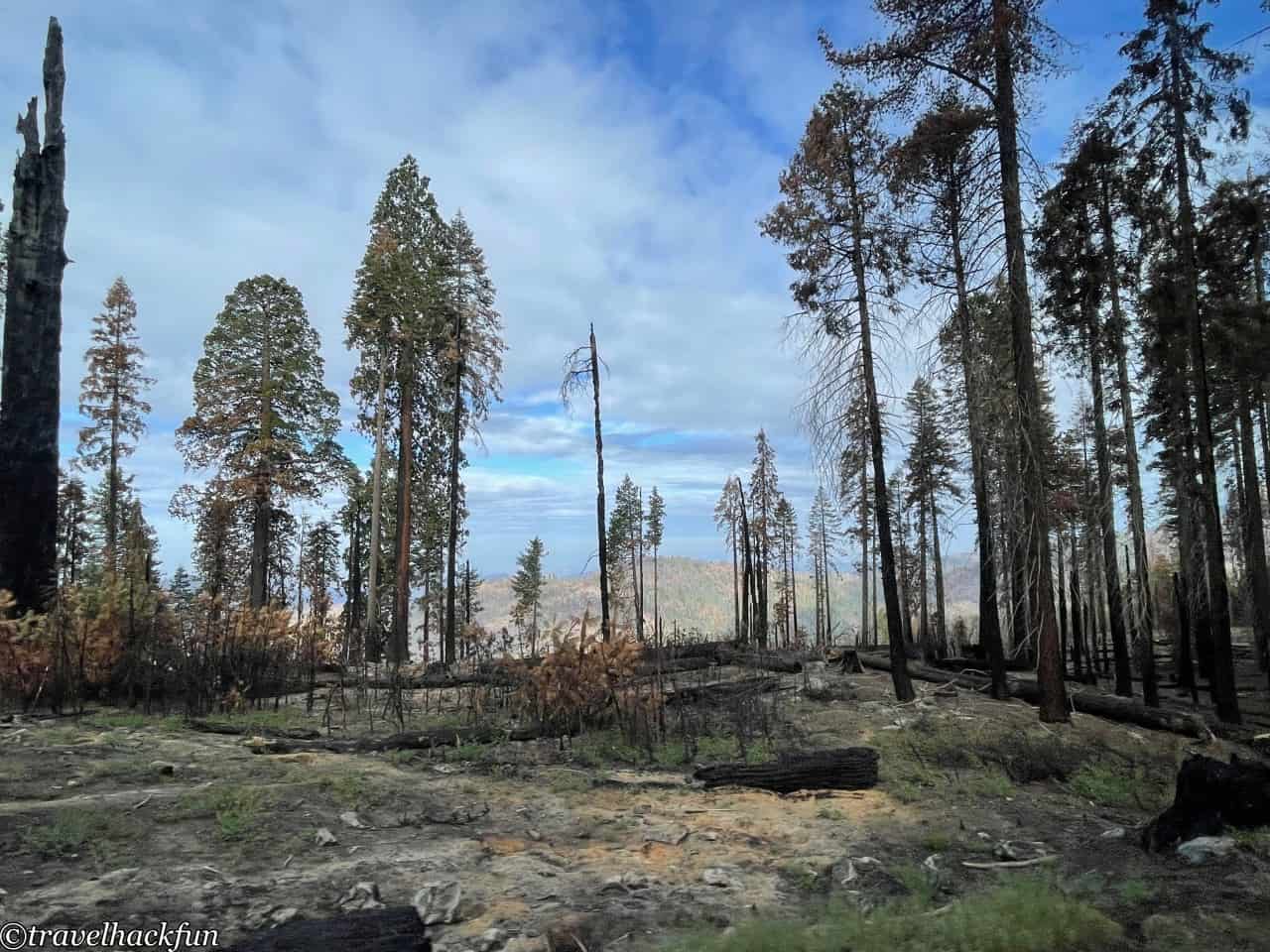
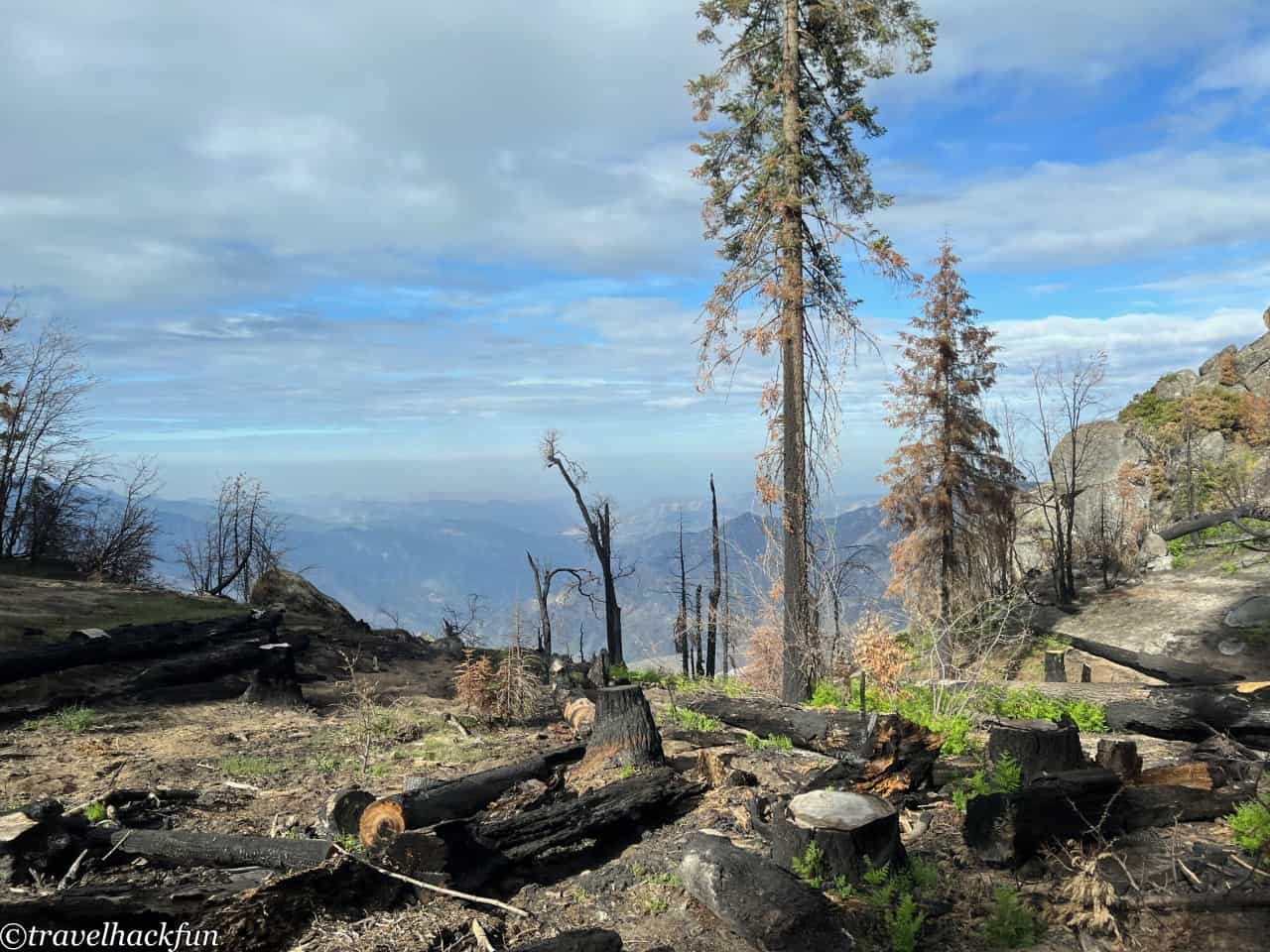
Sequoia National Park | Transportation
The main road in Sequoia National Park is Highway 198. The relative locations of most of the attractions are shown in the map below.
General Sherman Tree, Giant Forest Museum, Moro Rock, and Crescent Meadow are the major attractions in the Giant Forest area and they all have their own shuttle bus stops. Moro Rock is only accessible by shuttle bus on weekends during peak season due to the narrow road. Most of the other attractions can be accessed by car, but during the peak season, the traffic is very congested. Therefore, it is best to know the shuttle bus routes.
Up-to-date shuttle information can be found at the national park's the official website(Check here). Shuttle buses run about every 15 minutes. The most important routes are the Green Line and the Gray Line, which pass through all the major attractions.
The Green Line passes through Sherman Tree and the Giant Forest Museum, and the Gray Line goes from Giant Forest Musem to Crescent Meadow via Moro Rock, and on weekends it makes an extra stop at Tunnel Log. You can transfer between the two at the Giant Forest Museum. If you are staying at an on-site hotel, use the Purple Line to transfer to the Green Line.
During holidays, it is best to get up early and go straight to the Giant Forest Museum, then take a shuttle bus to start from Mono Rock, otherwise you will spend a lot of time waiting for the shuttle bus later on.
Sequoia National Park | Where to Stay & Eat
Recommended Campsites | Lodgepole Campground
- Comfort: ⭐️⭐️⭐️⭐️
- Space: ⭐️⭐️⭐️
- Cleanliness: ⭐️⭐️⭐️⭐️
- Convenience: ⭐️⭐️⭐️⭐️⭐️
- Overall: ⭐️⭐️⭐️⭐️
Lodgepole Campground is the most convenient place to stay in Sequoia National Park . It has the advantage of one less transfer than the Wuksachi Lodge in the park, since the green line shuttle station is just next to the campground,
Lodgepole campground has about 200 campsites. The terrain reminds me of Yosemite's Tuolumne Meadows Campground The campground is next to the river, with a lot of boulders on the ground. The surrounding forest and river scenery is quite beautiful. Tokopah Falls Trail is nearby.
Sequoia National Park is famous for its bears. Look at the complicated design of the bear boxes and garbage cans in the campground,, you can imagine how rampant the bears should be,. Be sure to store your food away in the bear box.
The campground is only open in the summer and can be quite cold at night.
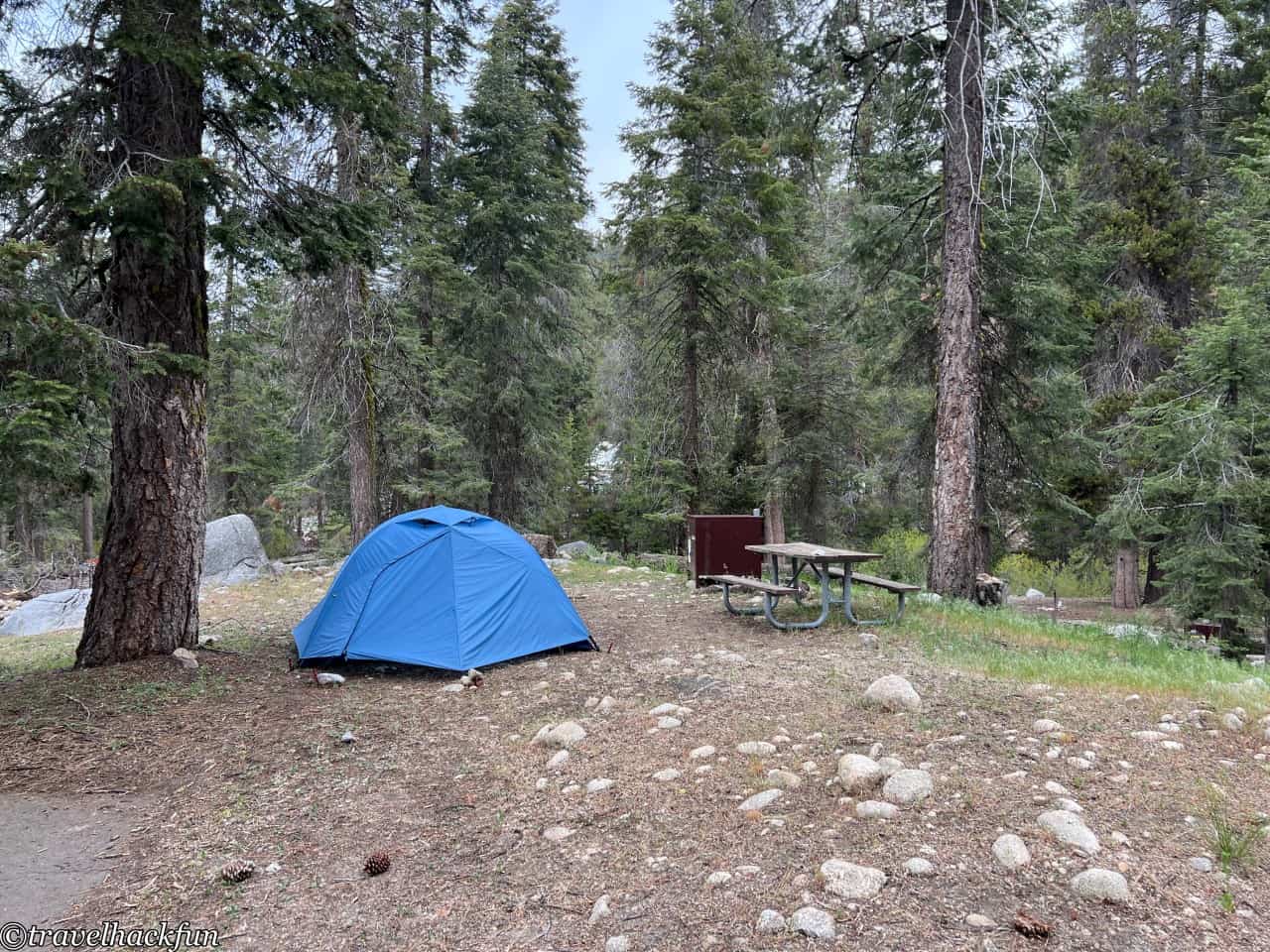
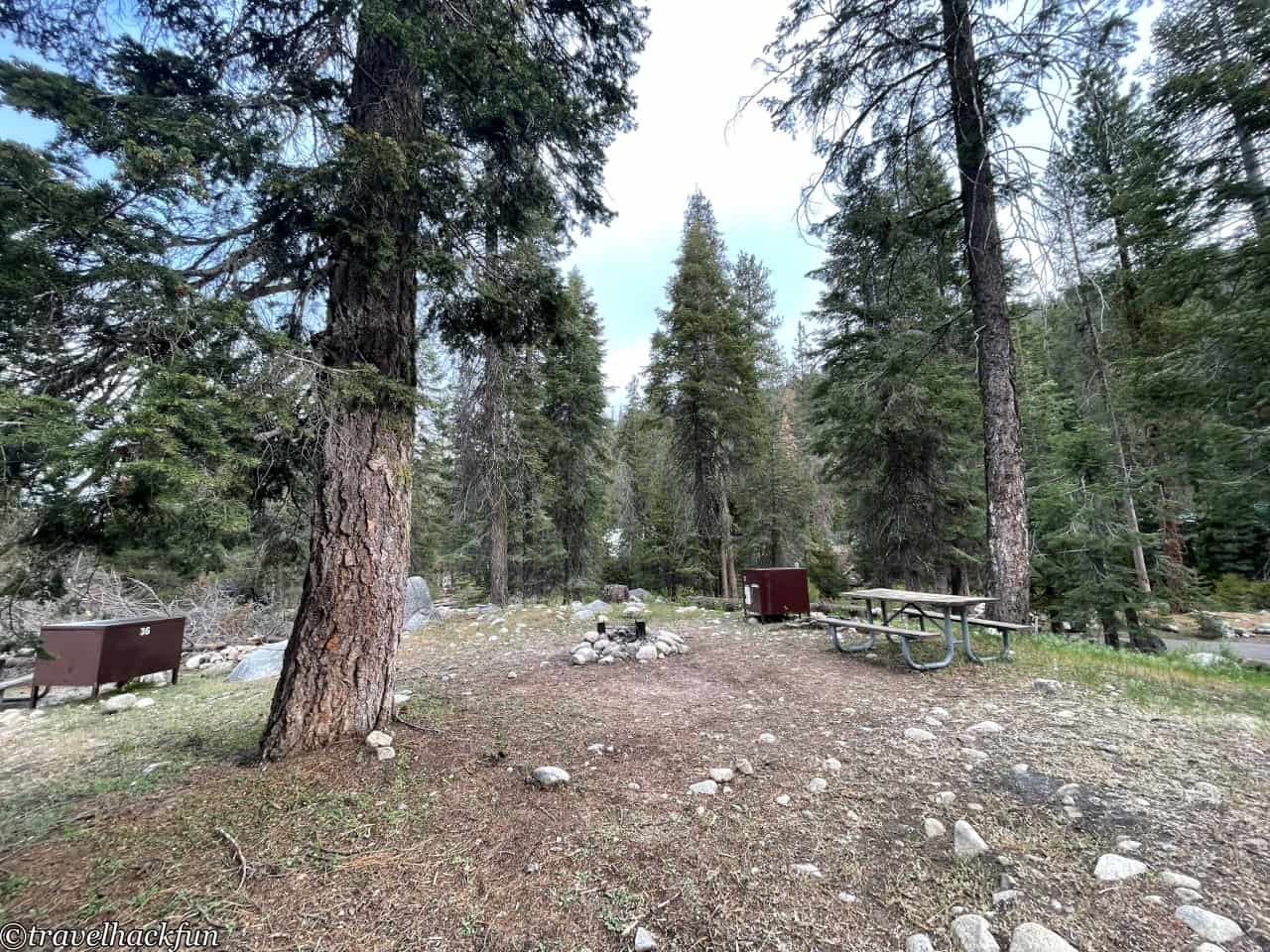
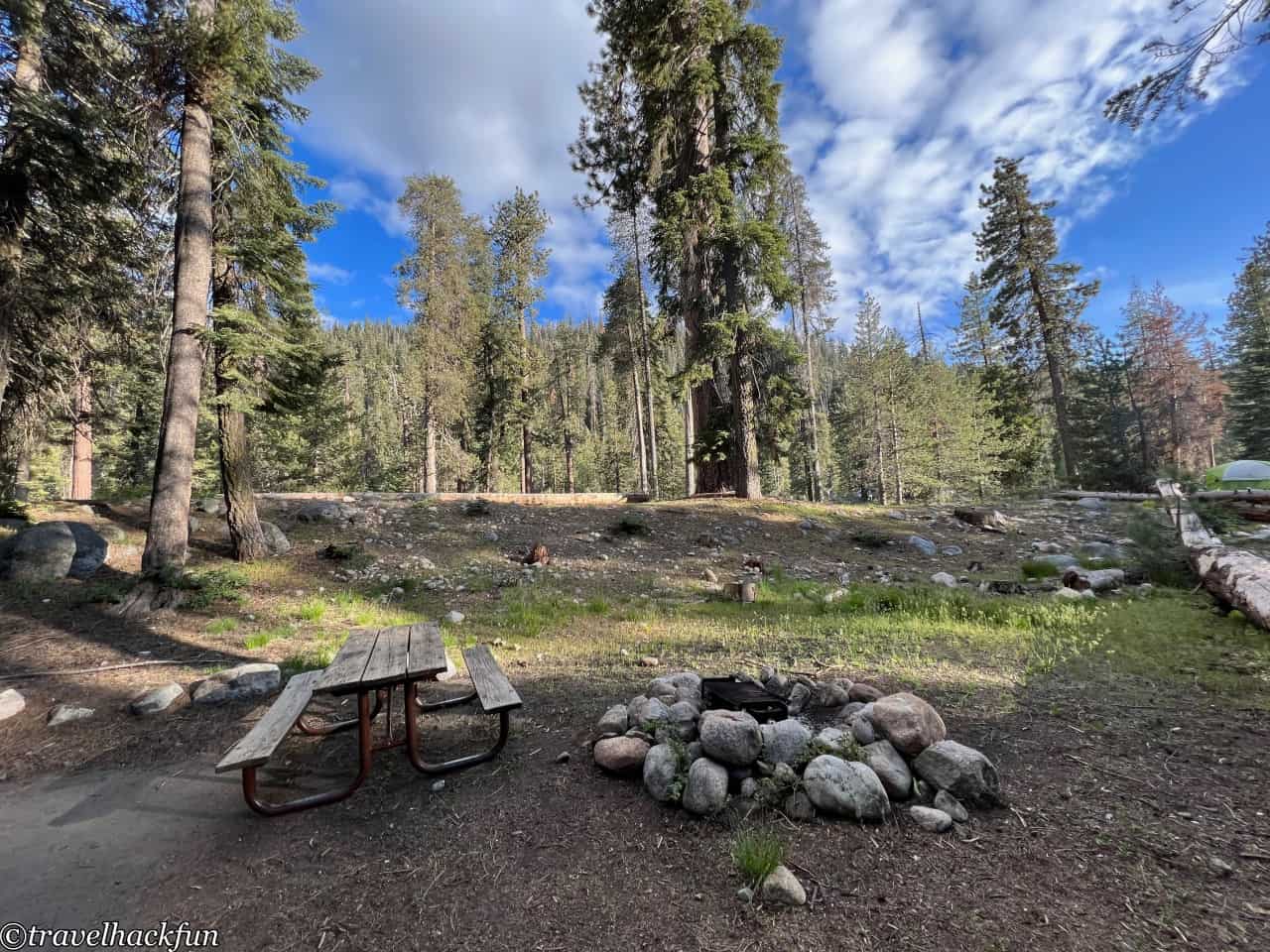
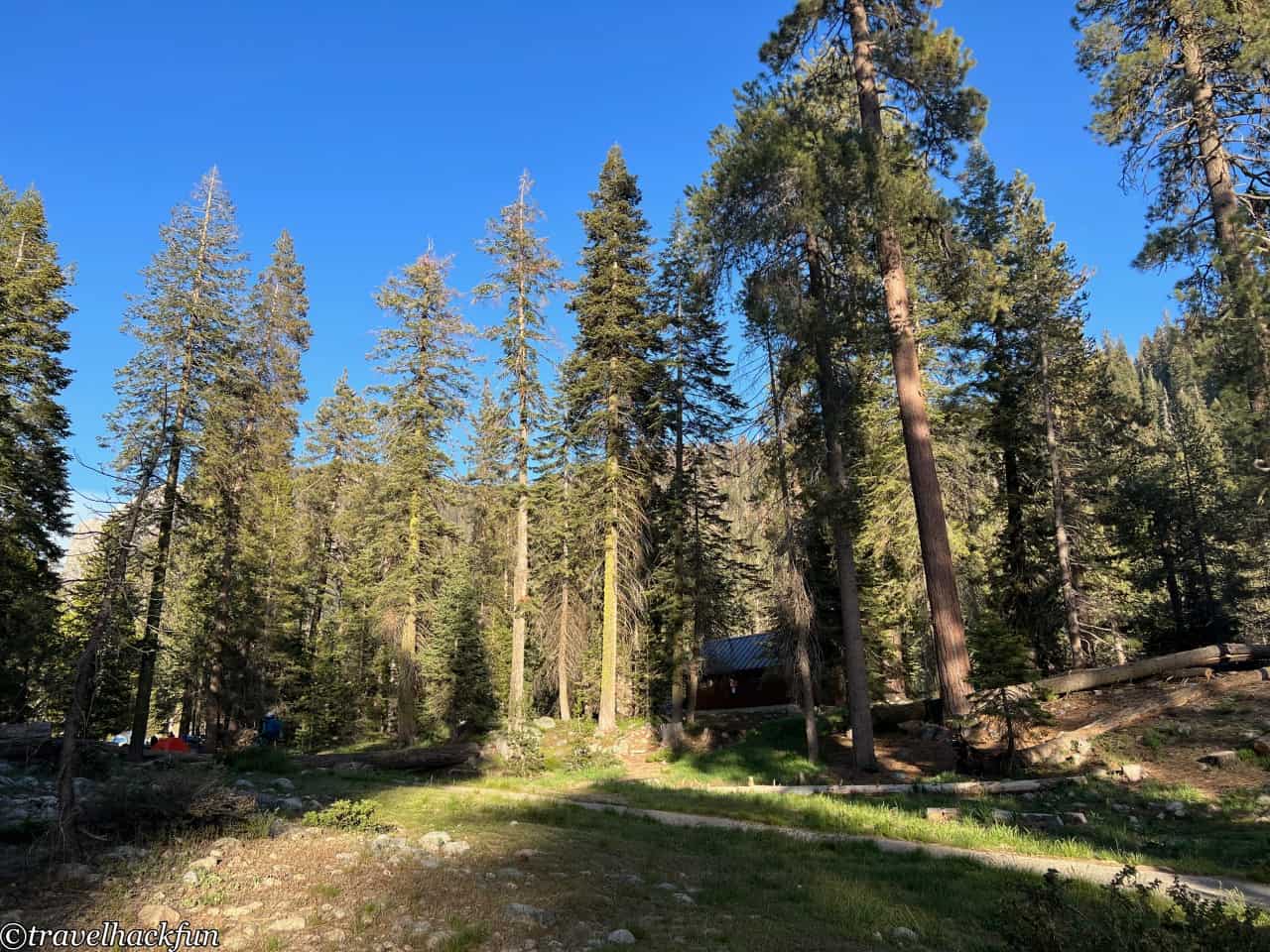
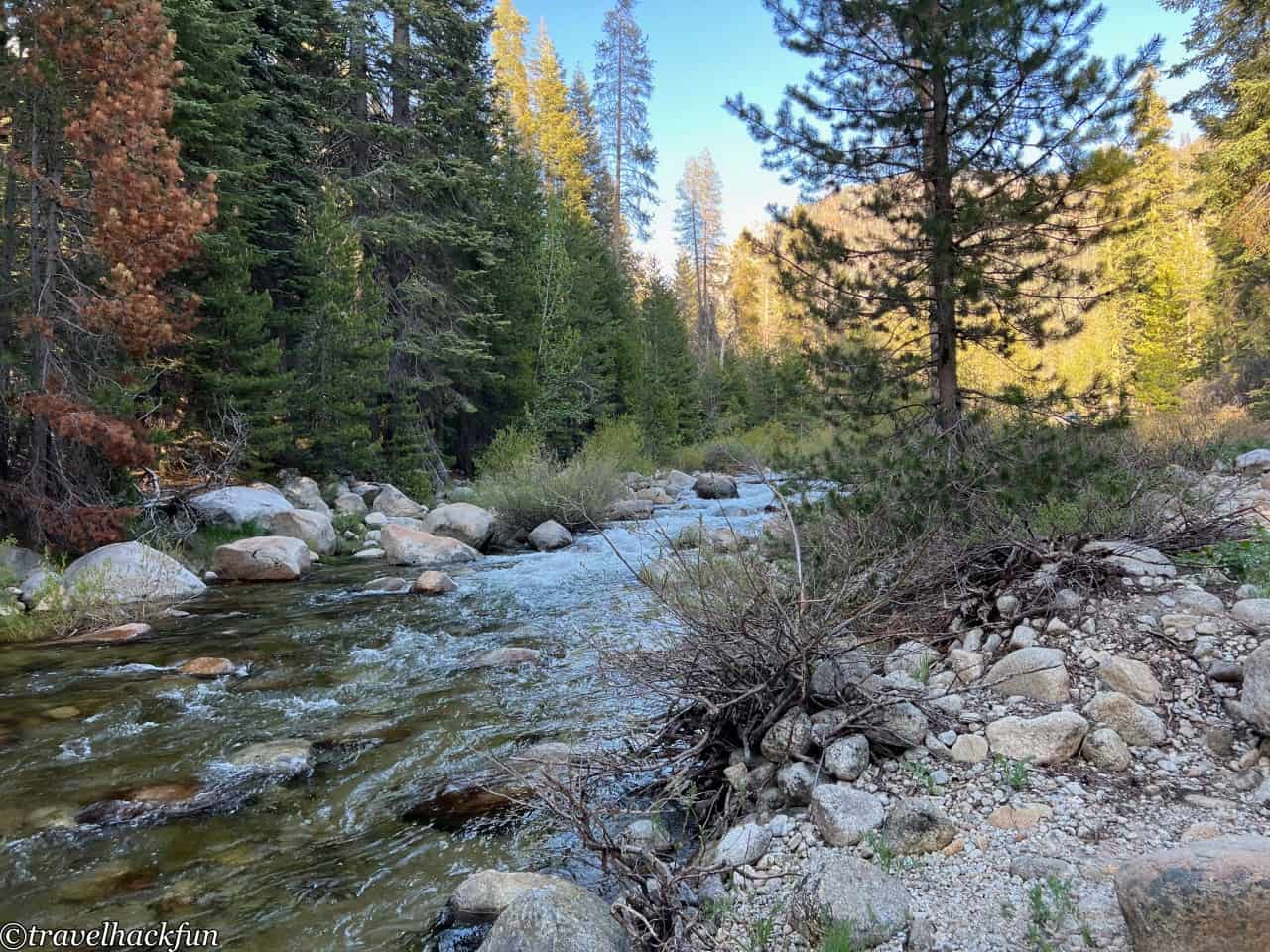
The Lodgepole market center is nearby, where you can find food and souvenirs.
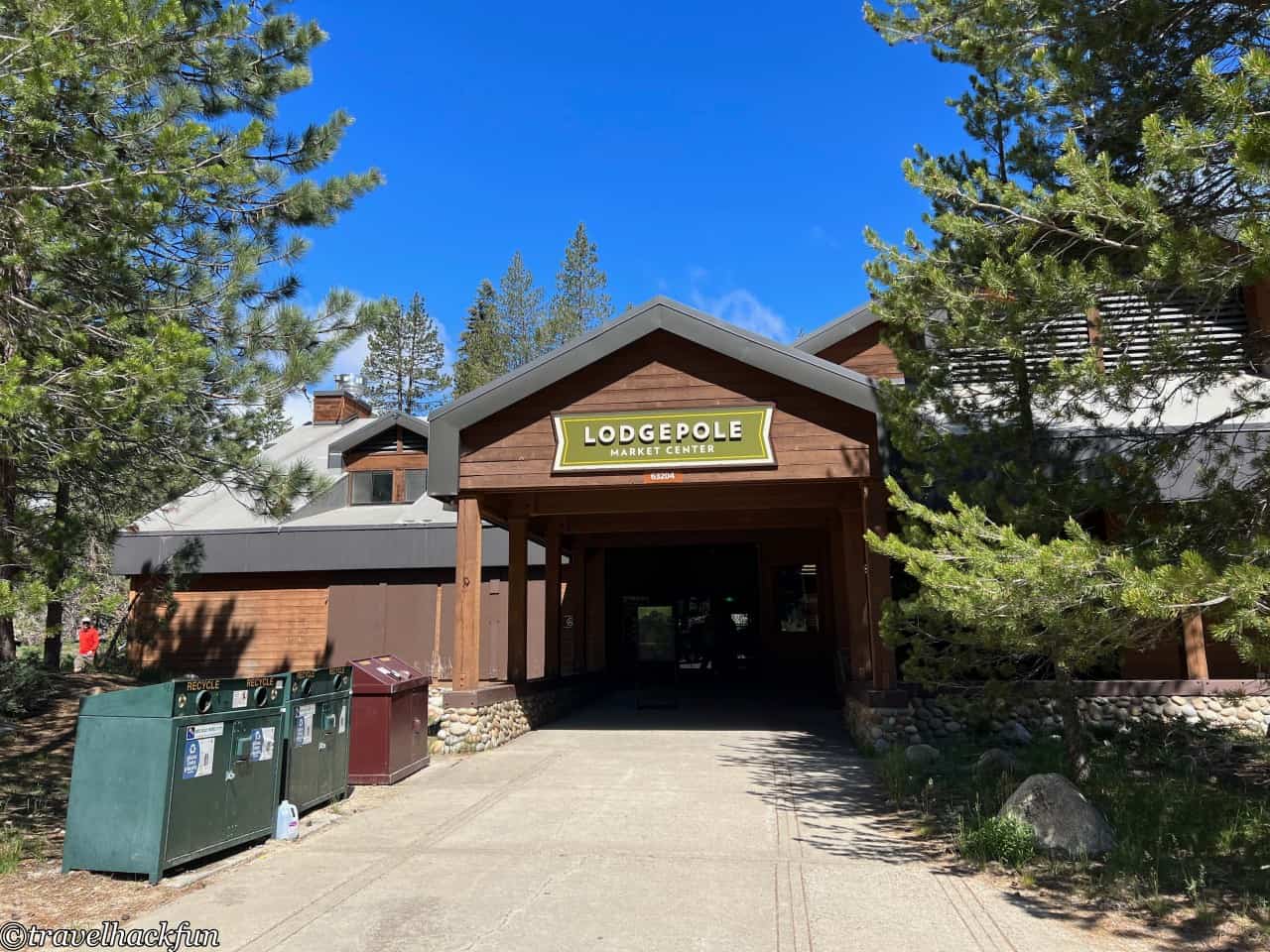

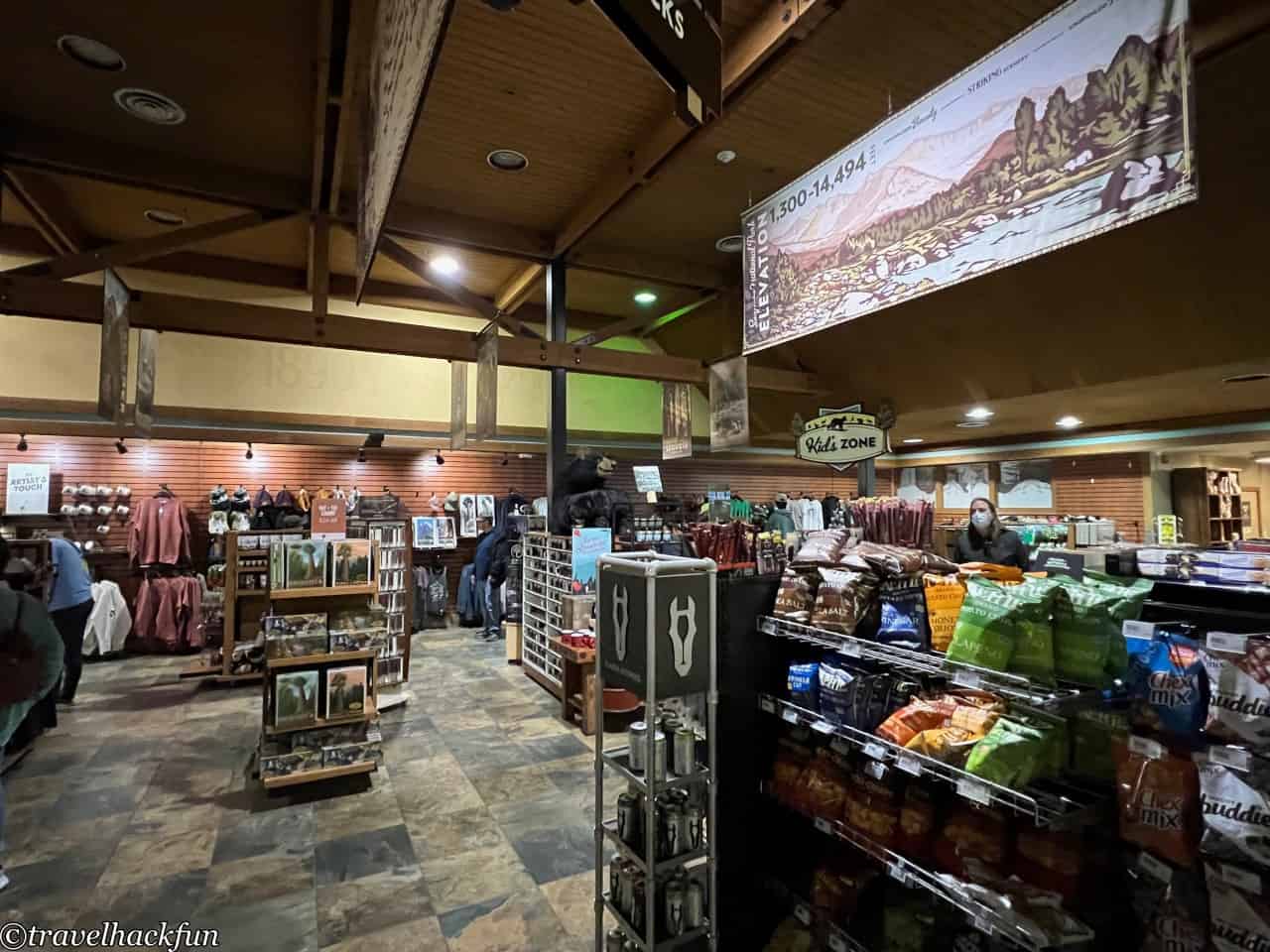
Wuksachi Lodge
If you are looking for a hotel, the most convenient location is Wuksachi lodge. It has a shuttle stop and a restaurant. The restaurant is the best dining choice inside the park. Surrounded by redwood forests, the view is wonderful.
Wuksachi Lodge Booking


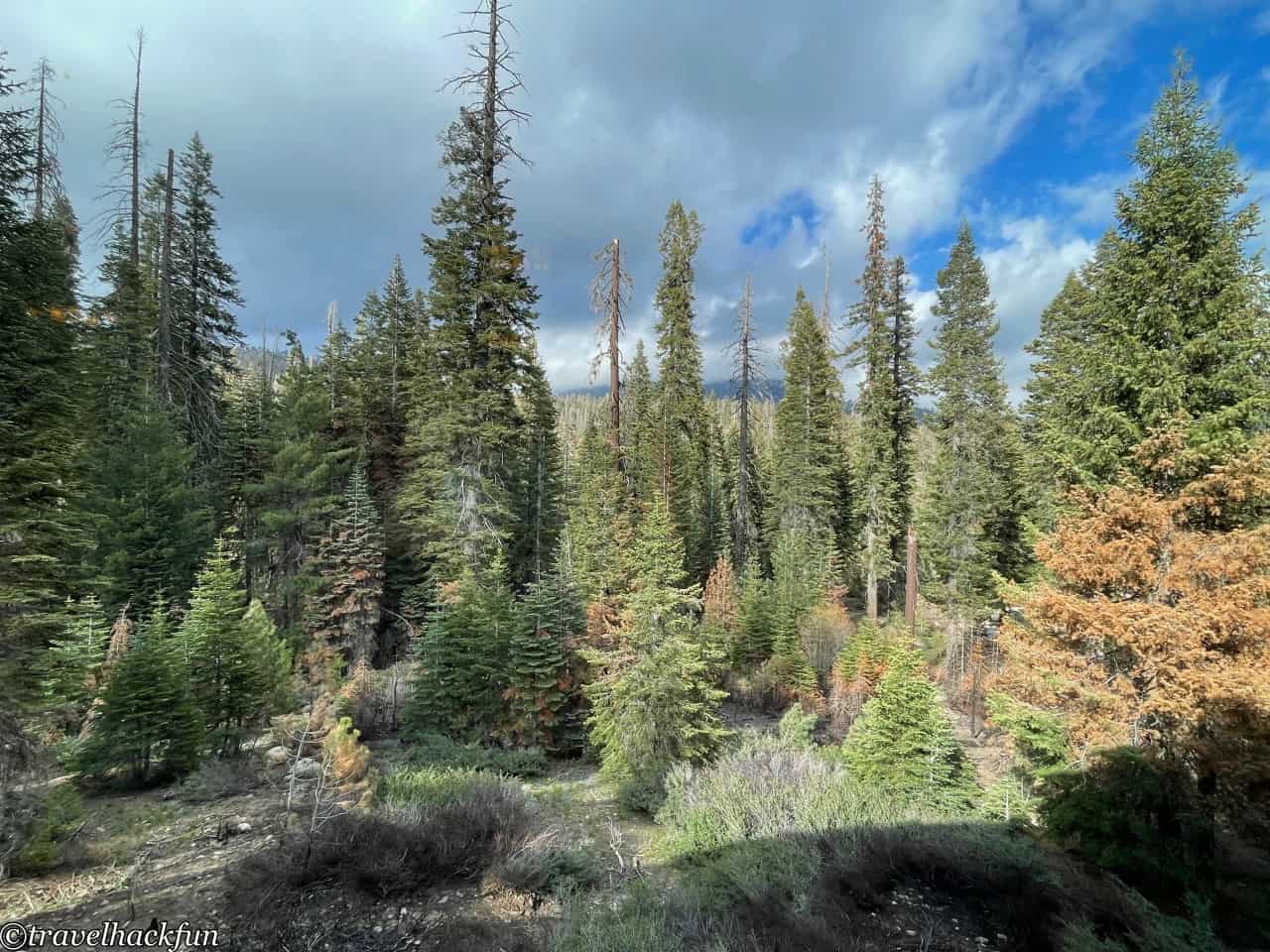





Off-site Accommodation
If you can't stay in the park, the closest towns are Three Rivers and Visalia, but both are more than an hour's drive from Sequoia National Park. If you are looking for a bigger and more convenient town, consider staying in Fresno, which is two hours away.
Stay in Three Rivers
Stay in Visalia
Stay in Fresno
Sequoia National Park | Attractions and Trails
General Sherman Region
Must-Do | Sherman Tree Trail
Sherman Tree is the most famous attraction in Sequoia National Park. It is the largest tree in the world and an icon of Giant Sequoia. Take the green line shuttle to the Sherman Tree Trail trailhead. Sherman Tree Trail is always busy, it is best to come in the morning.
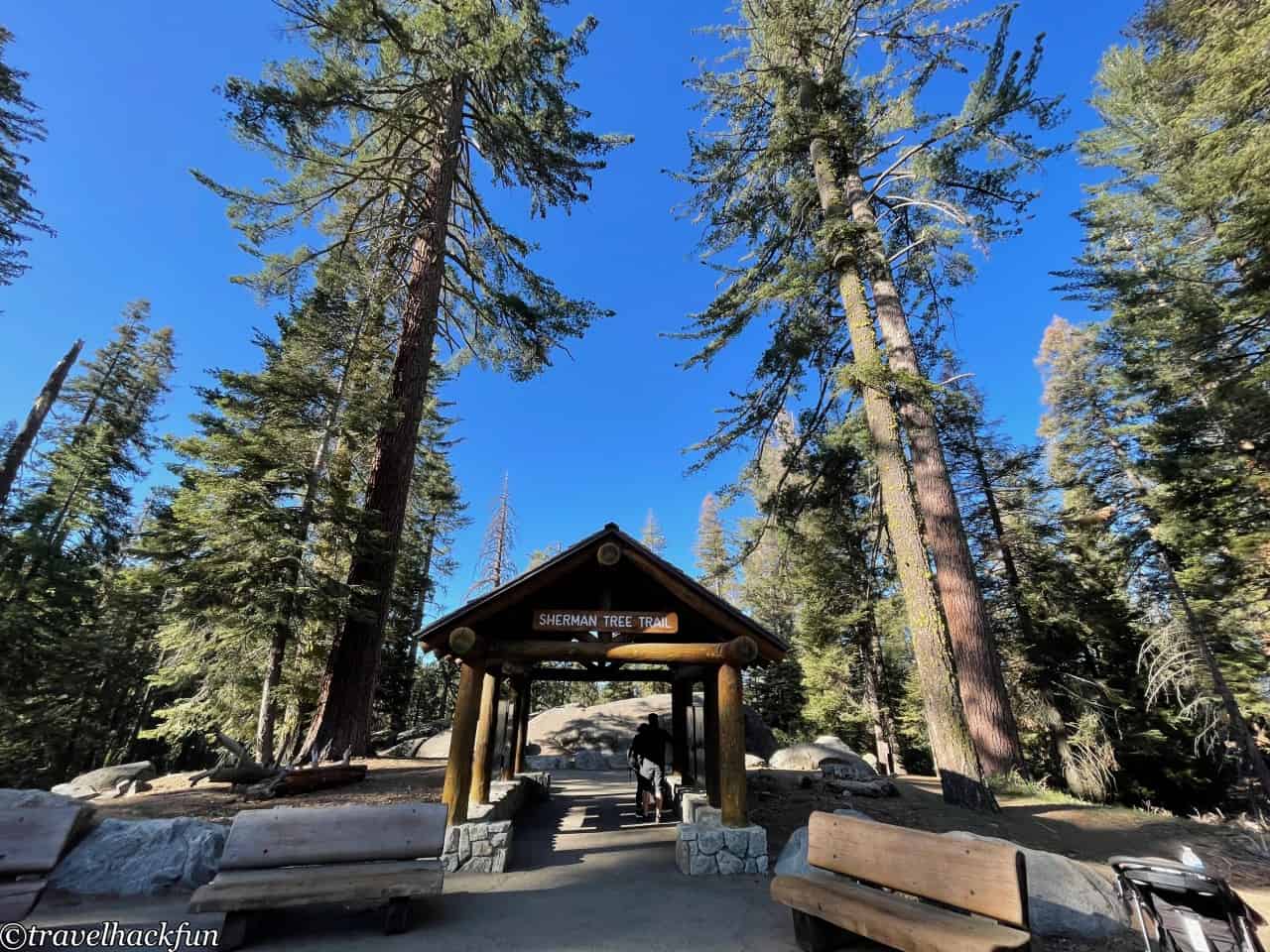
The trail itself reminds me of Muir Woods. It's very easy to walk on and surrender by the forest. The elevation here is high, so you may feel a bit breathless. Don't miss the viewing platform in the middle of the trail, where you can see the whole Sherman Tree. Once you reach the bottom, the tree will be too big to see as a whole.
The General Sherman Tree is 2,200 years old. It got the name of the world's largest tree due to the fact that it has the thickest trunk, but in fact, it is not the oldest nor the tallest. Why does it grow so big? I think it is because it occupies a unique and good location.
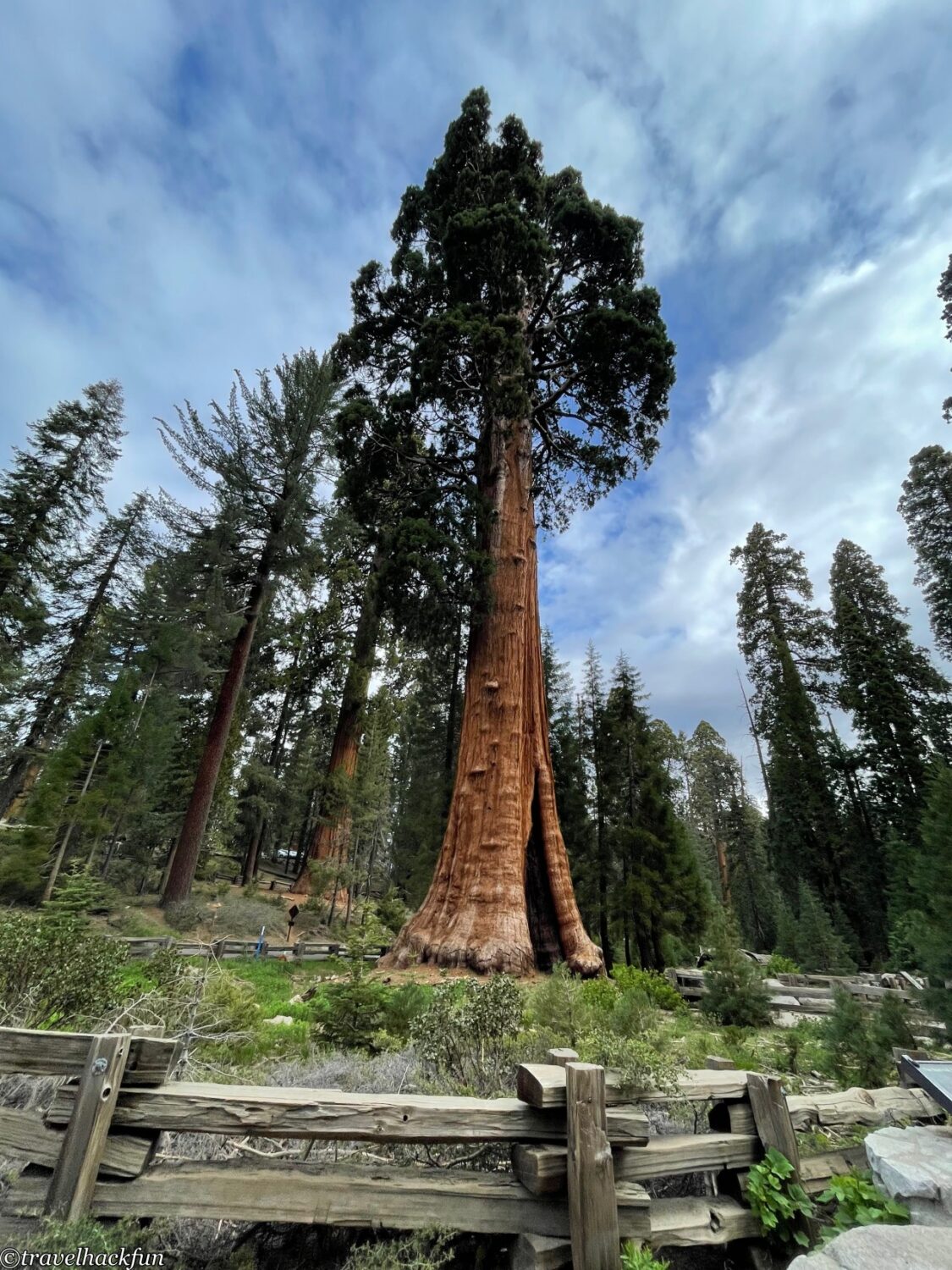
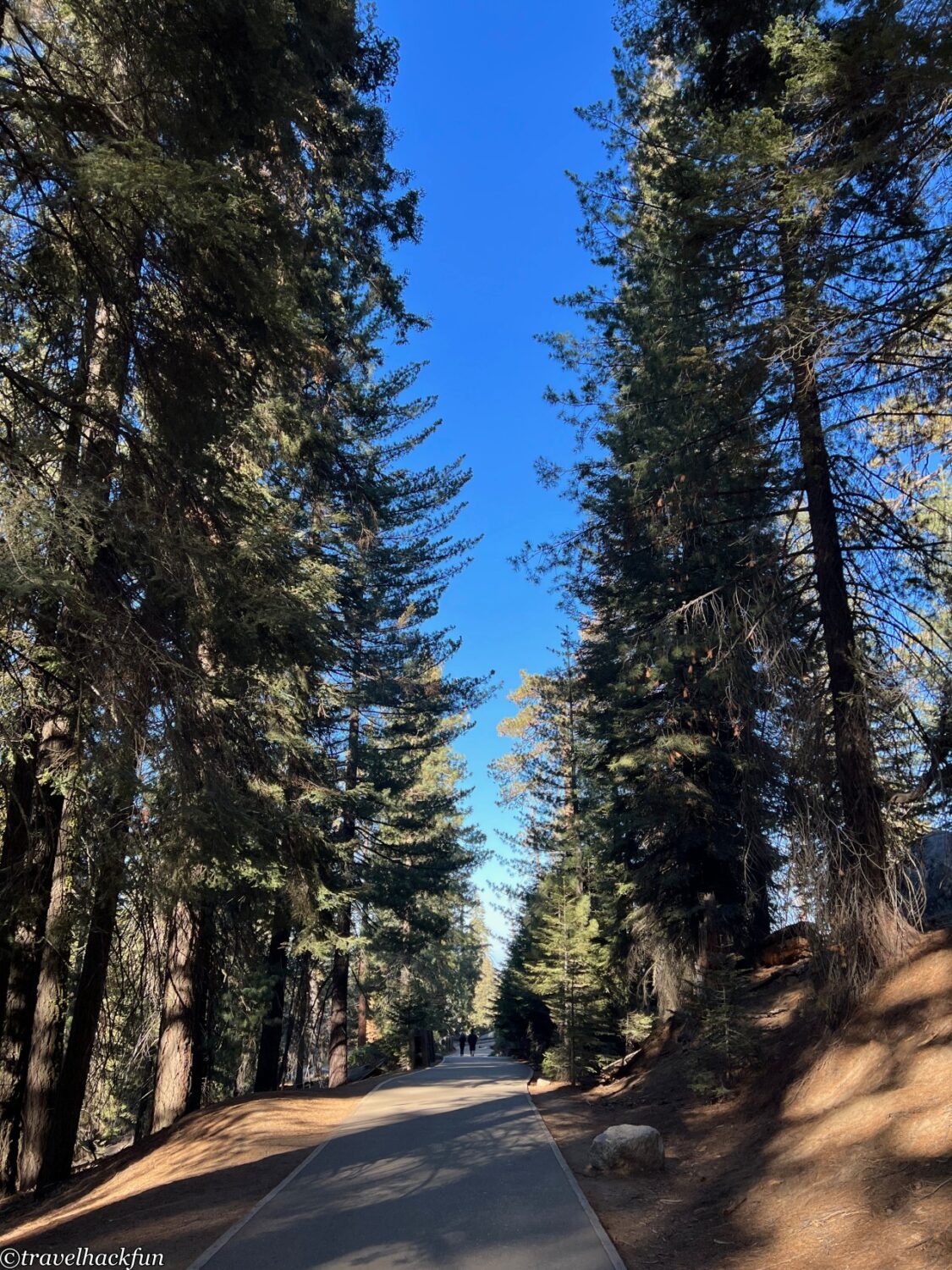
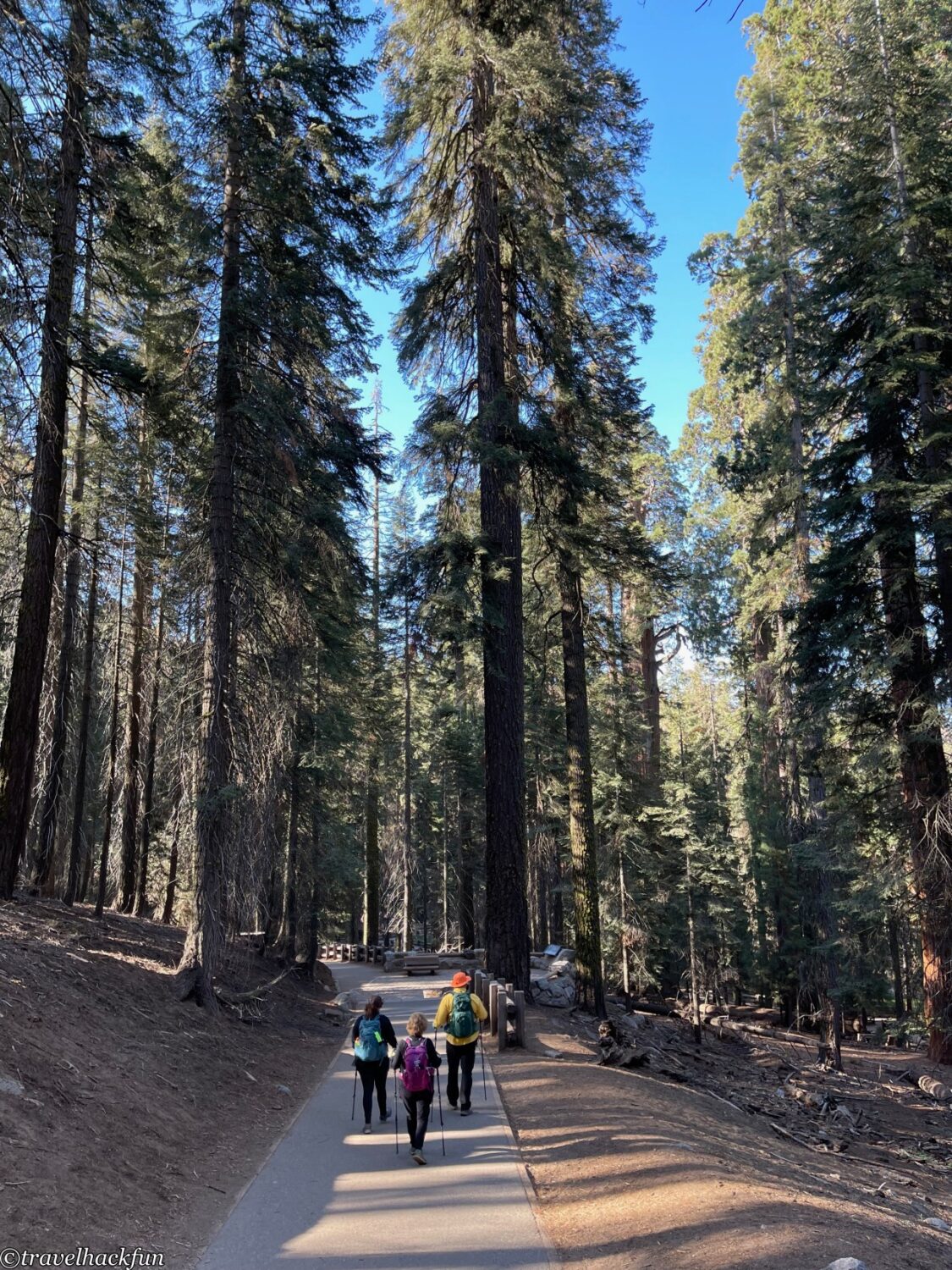

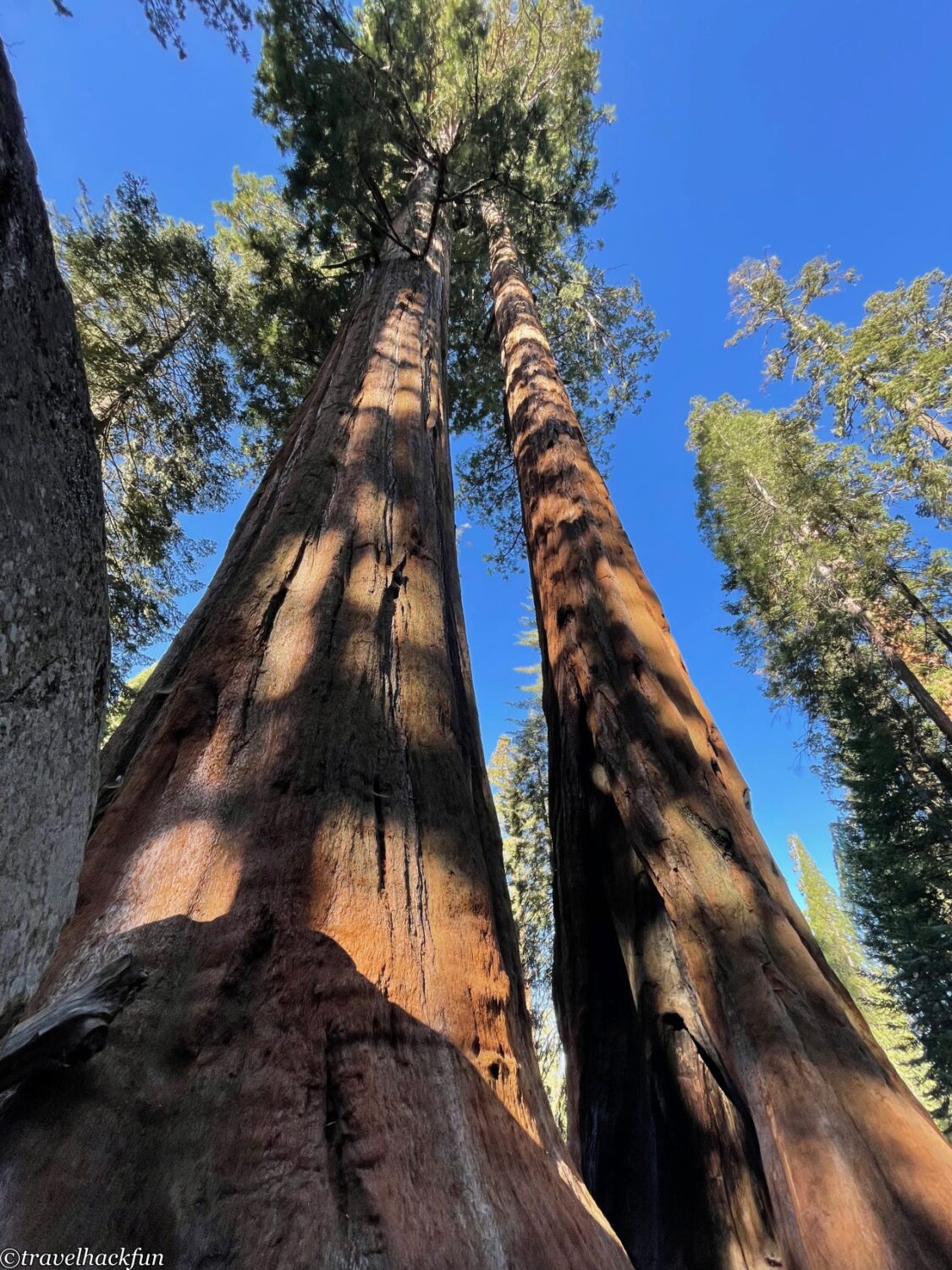
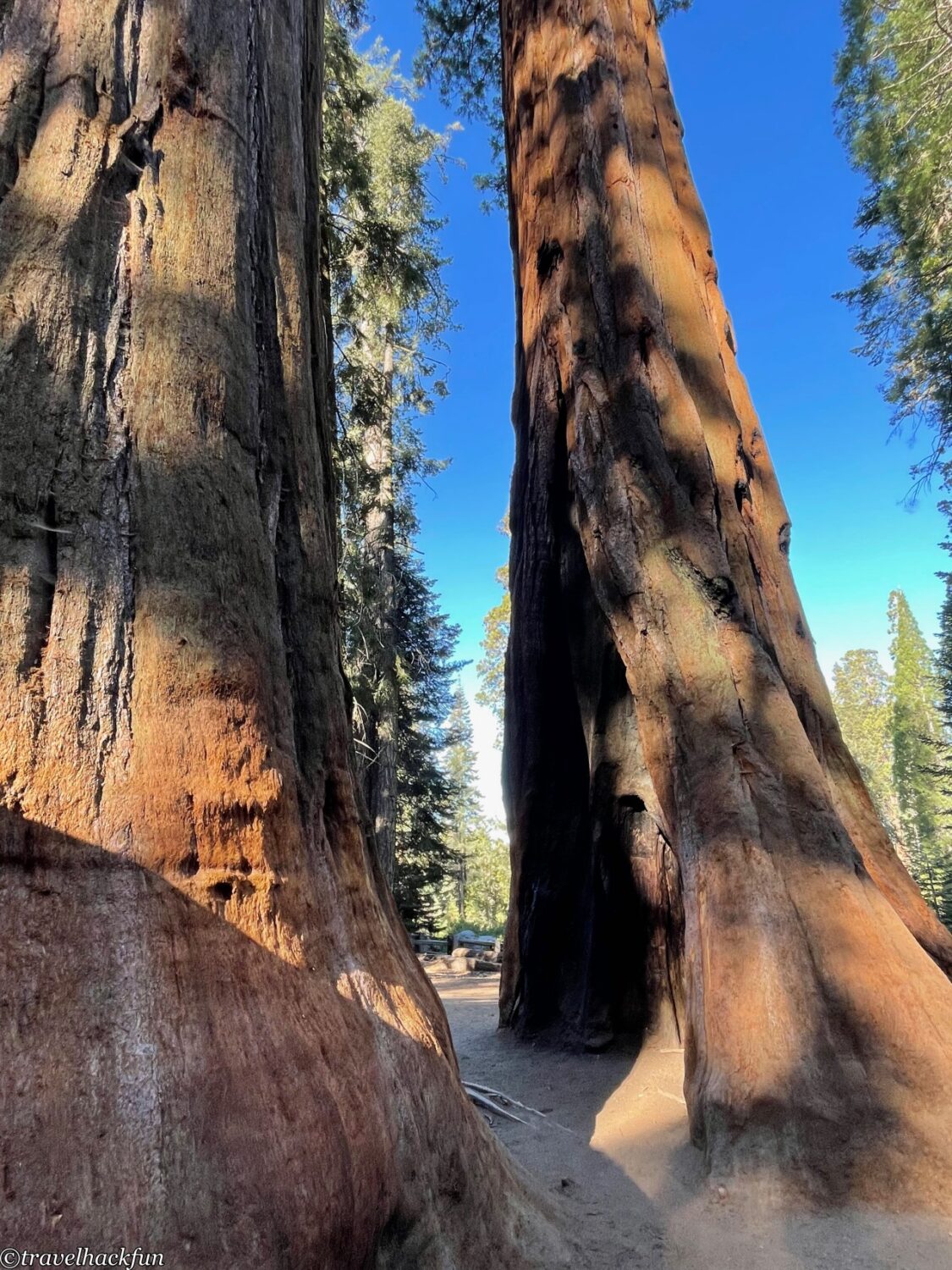
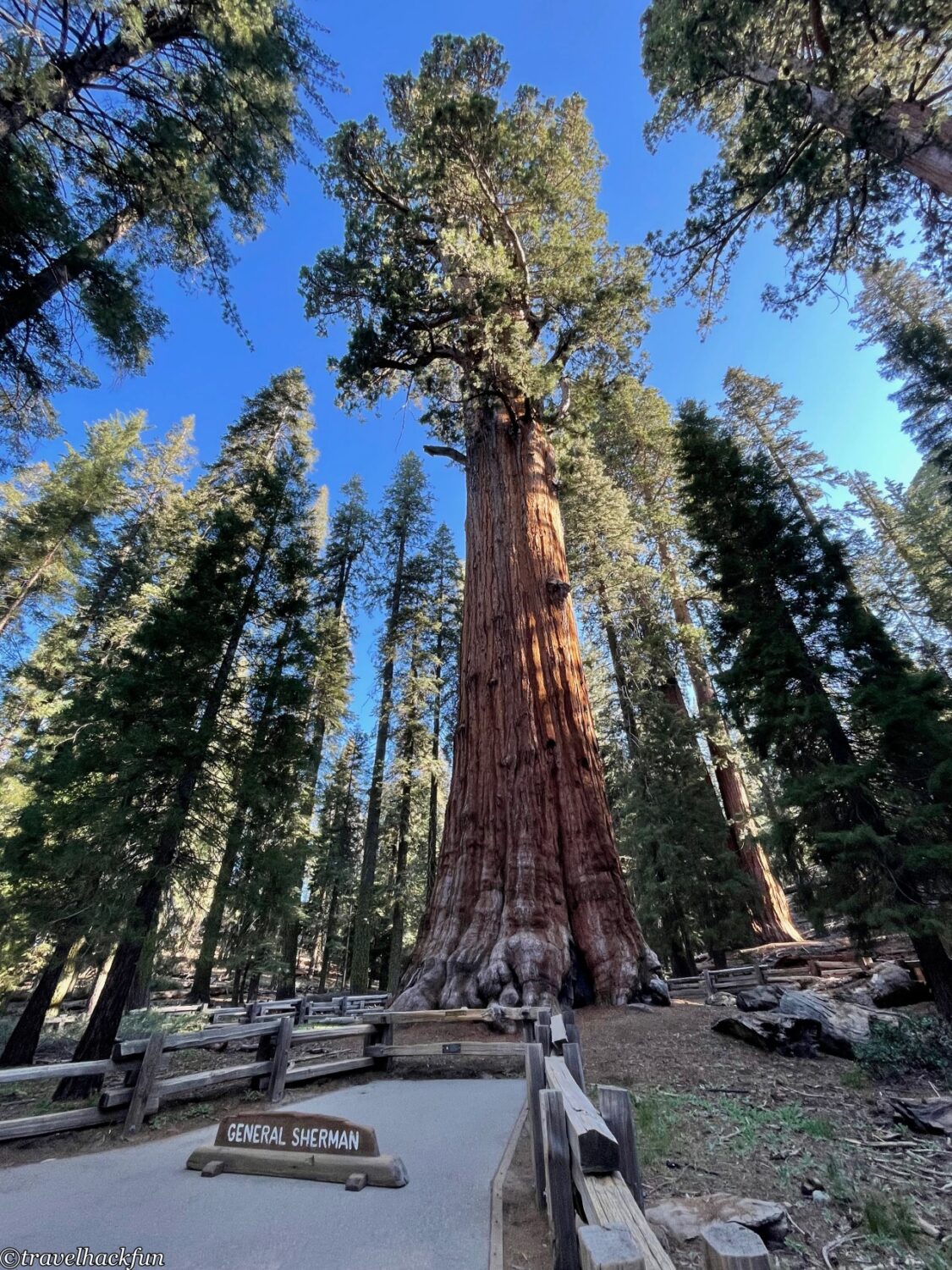
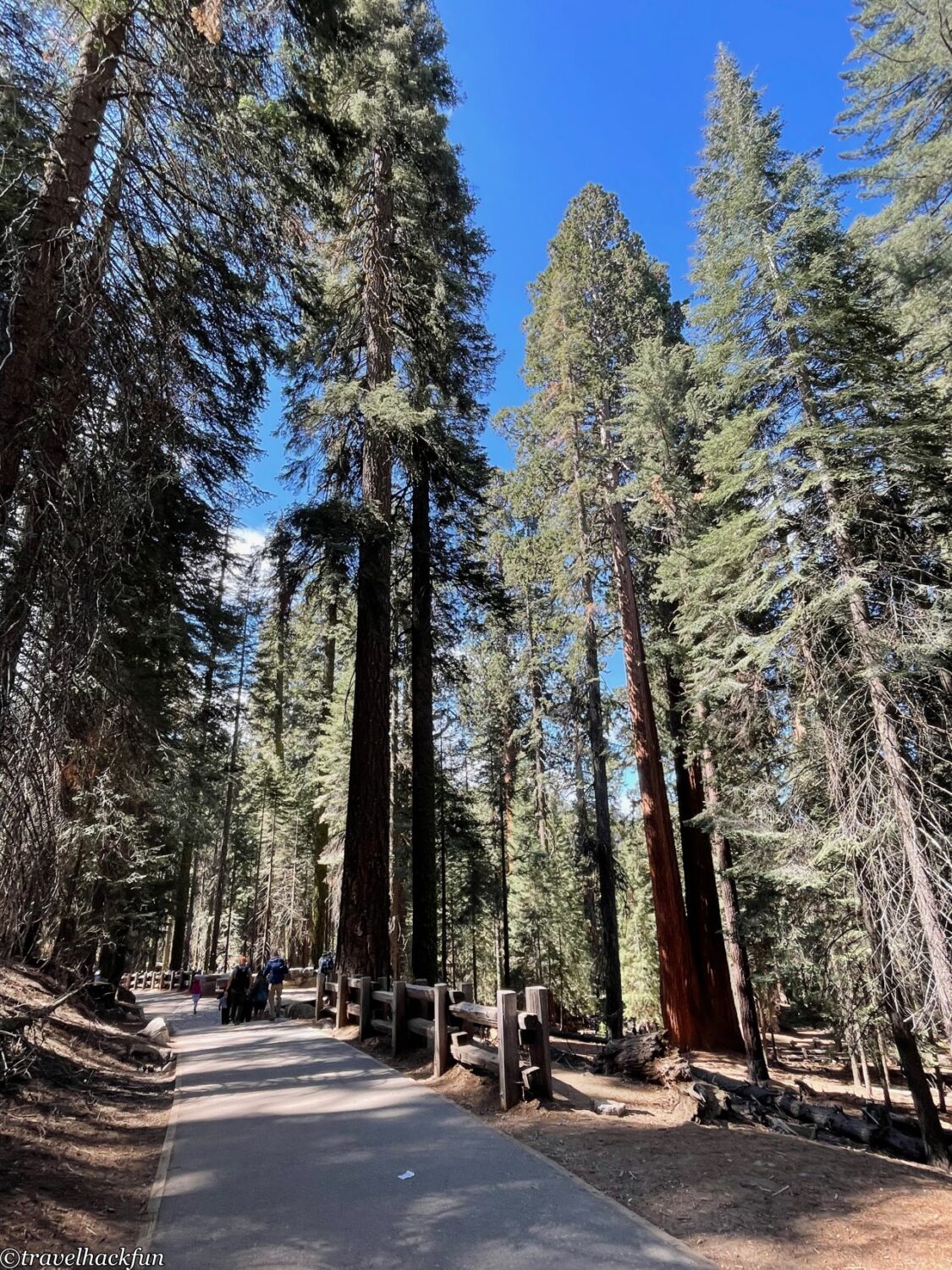
Must-do | Congress Trail
Congress Trail is one of the most popular trails in Sequoia National Park. It is 2.5 miles long and has many large old-growth redwood trees. The entrance of Congress Trail is near General Sherman Tree, so you can turn into this trail after visiting General Sherman.
The Congress Trail was named after the members of the U.S. Congress who came here in 1903. It is said that they were so impressed by the giant redwoods that they named the trees after Congress and political figures. Here we can see the President's Tree, the Senate and the House.

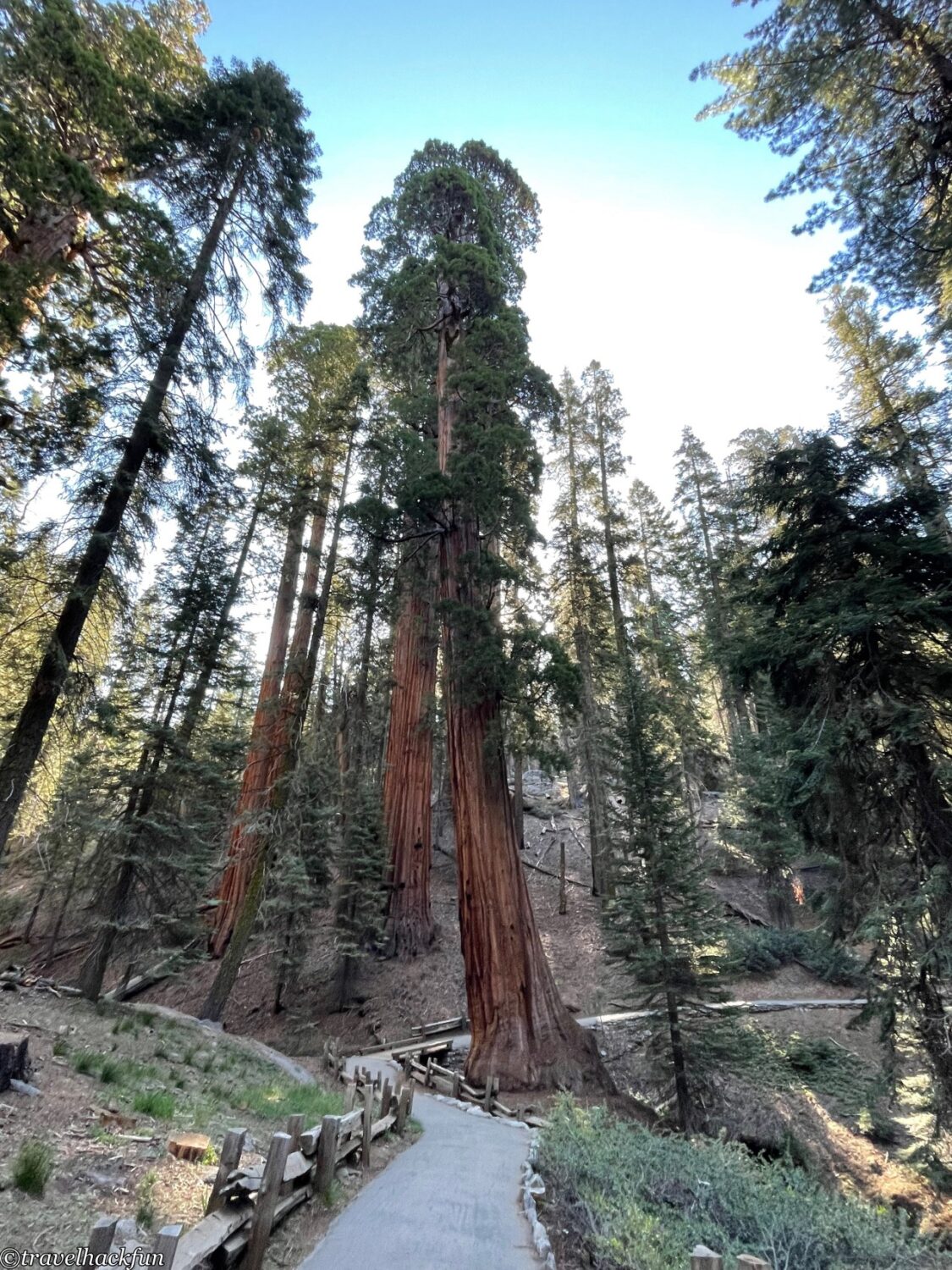
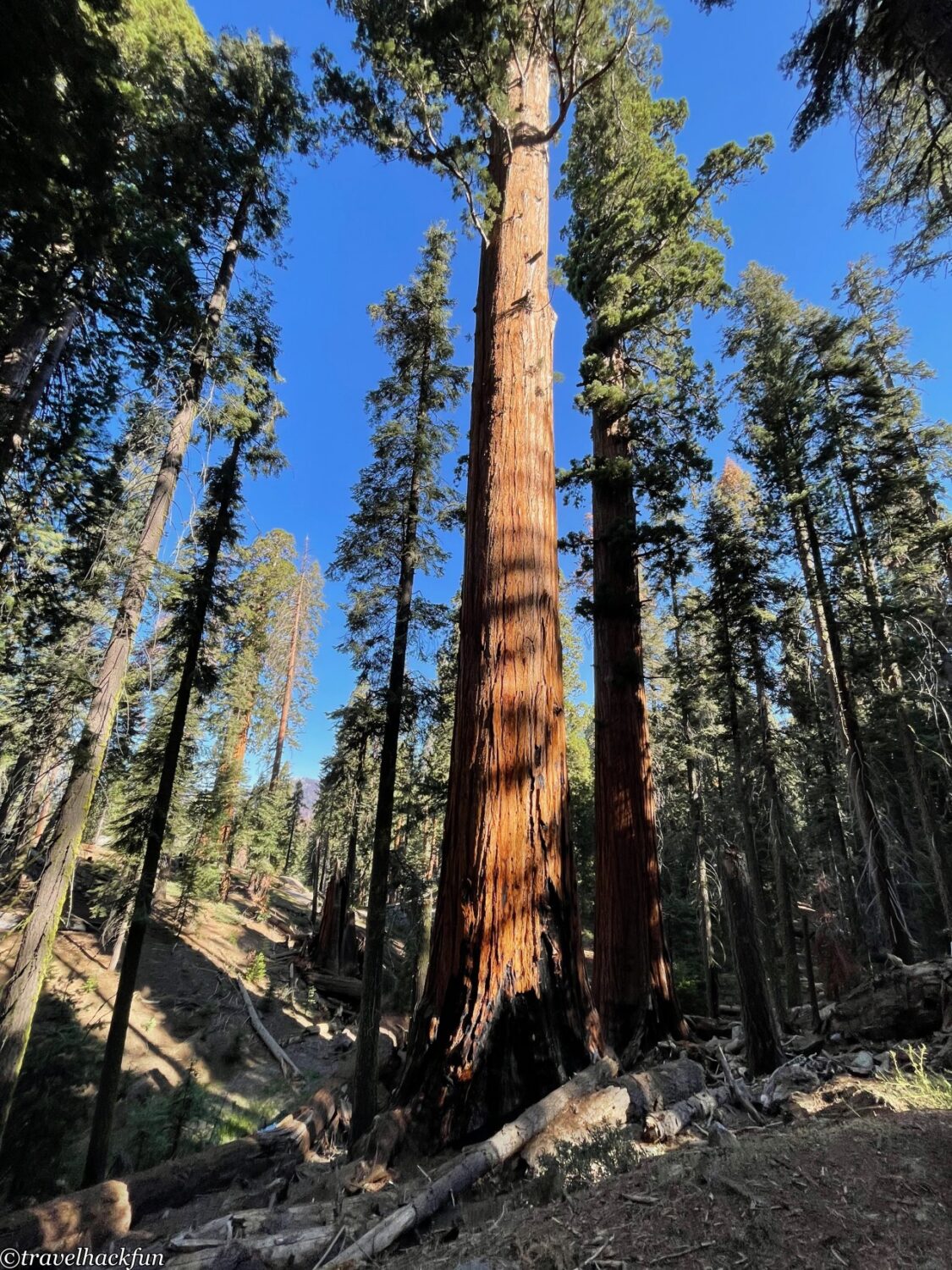
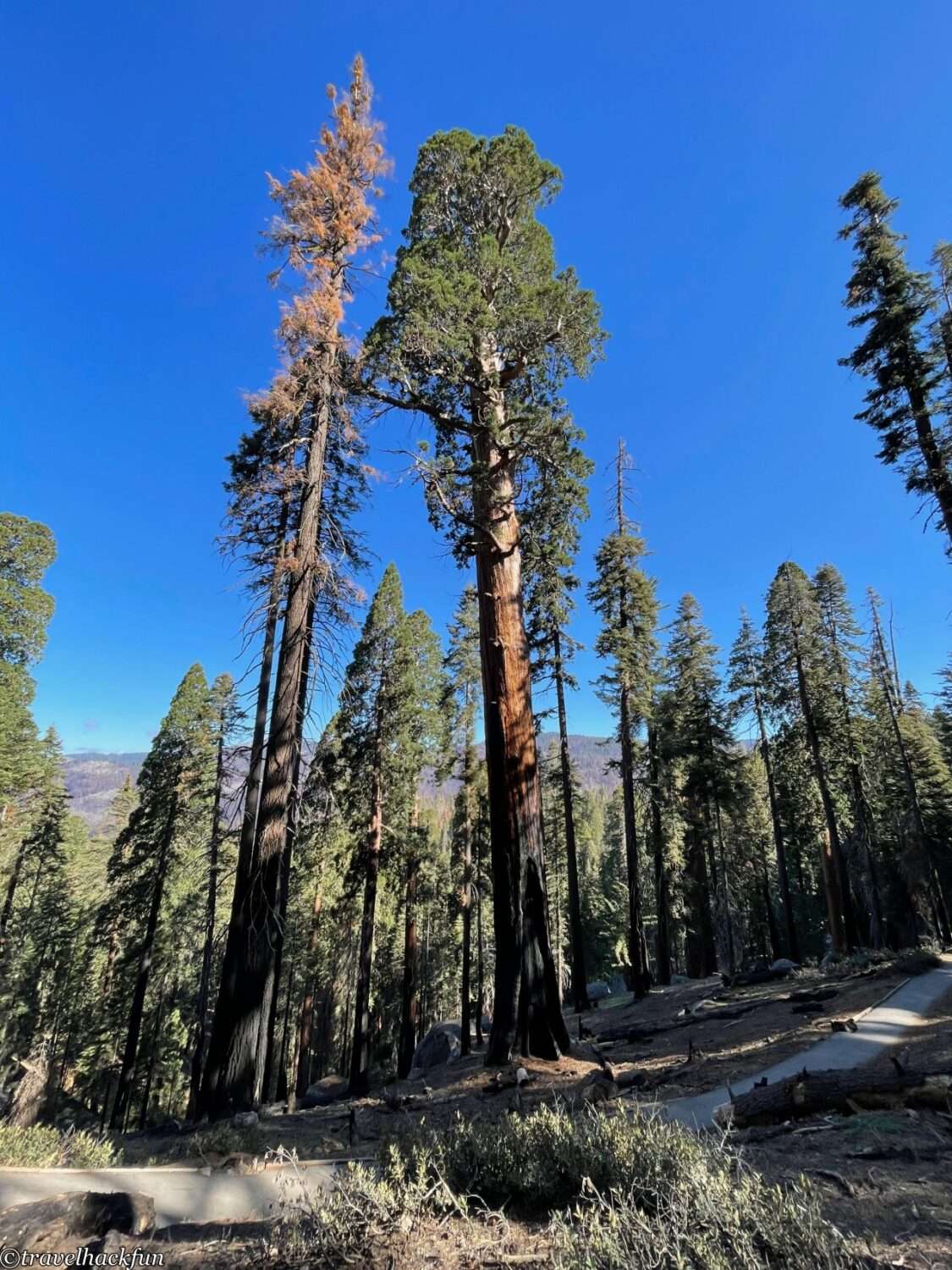
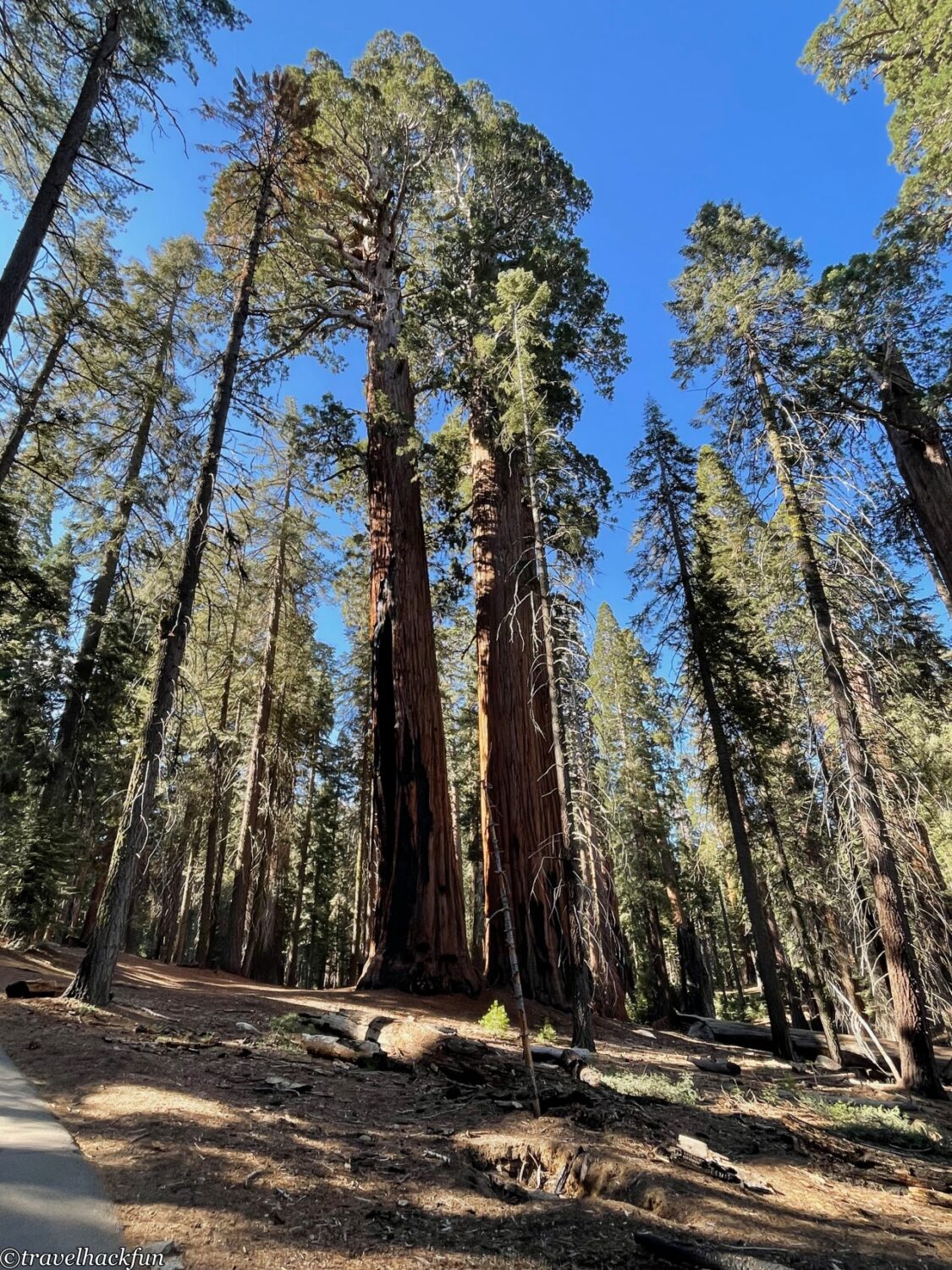


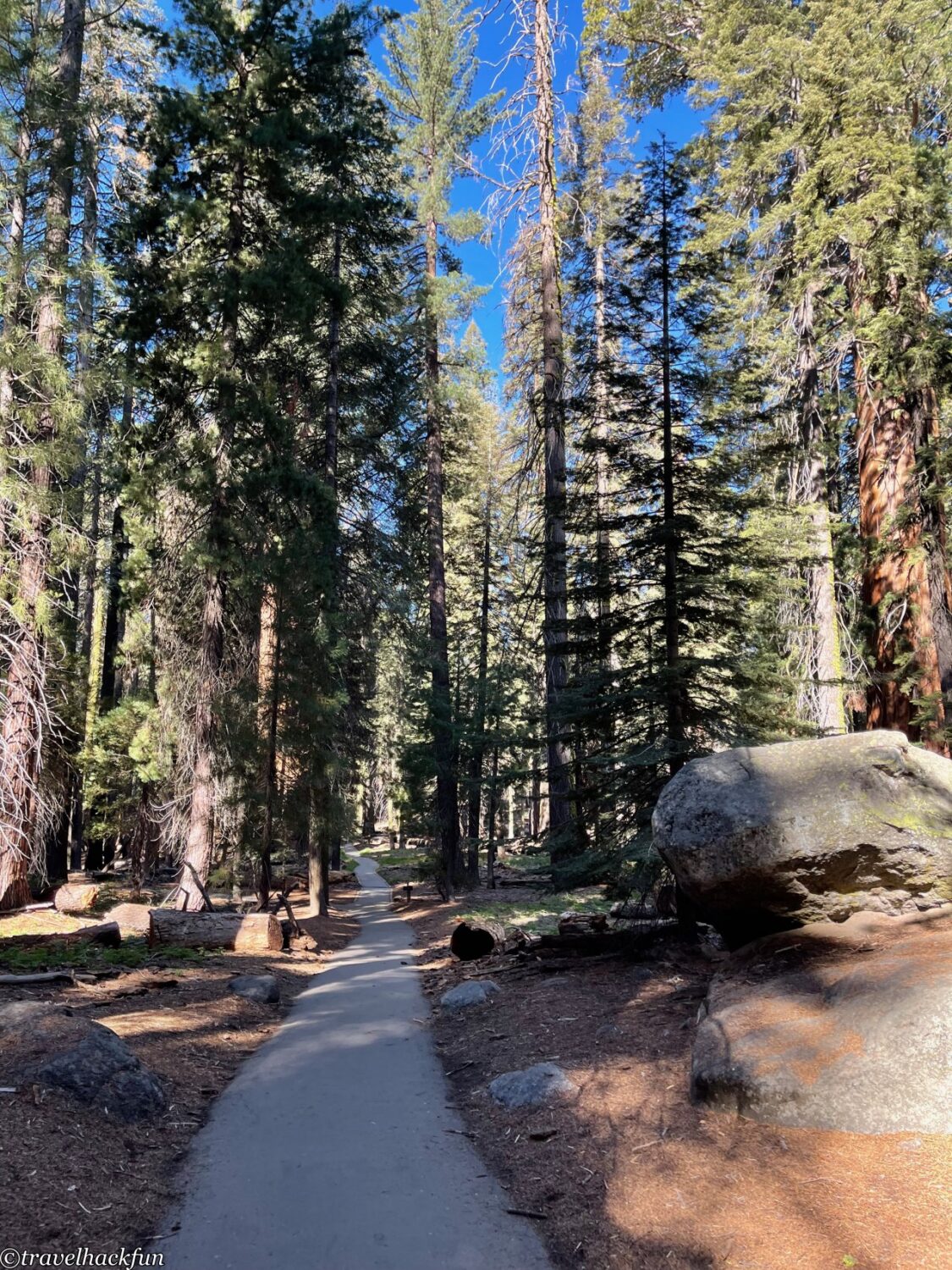
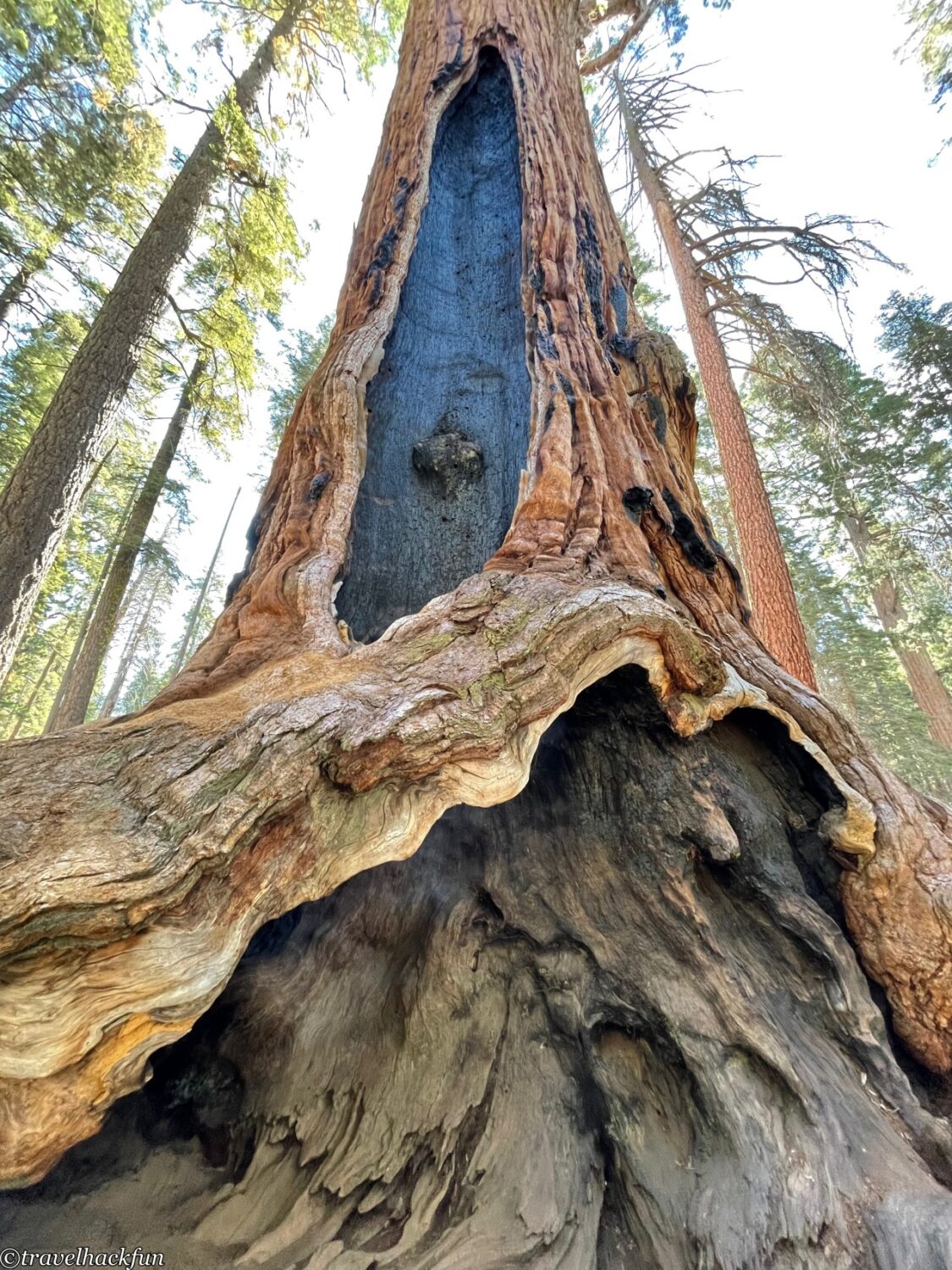
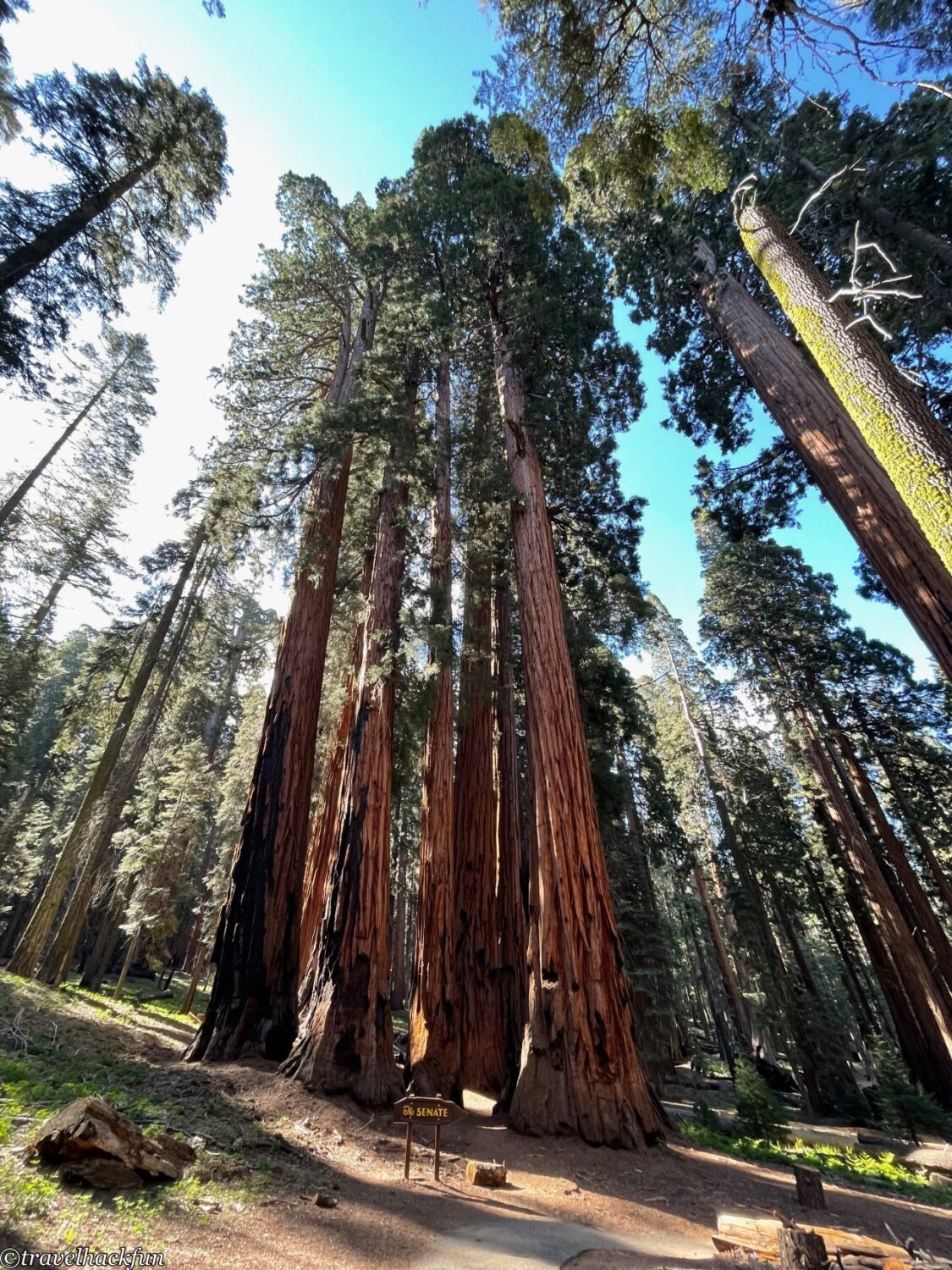



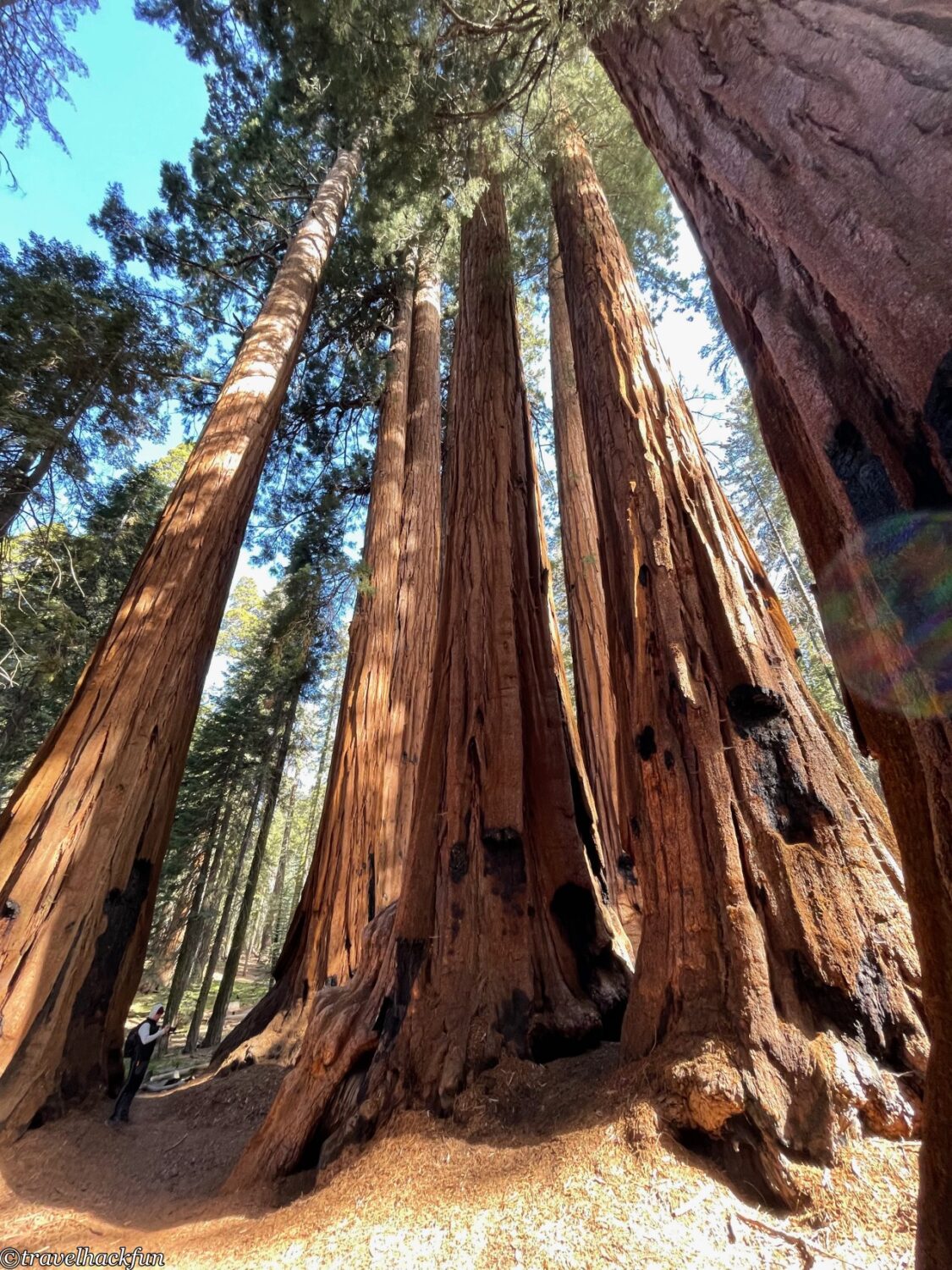
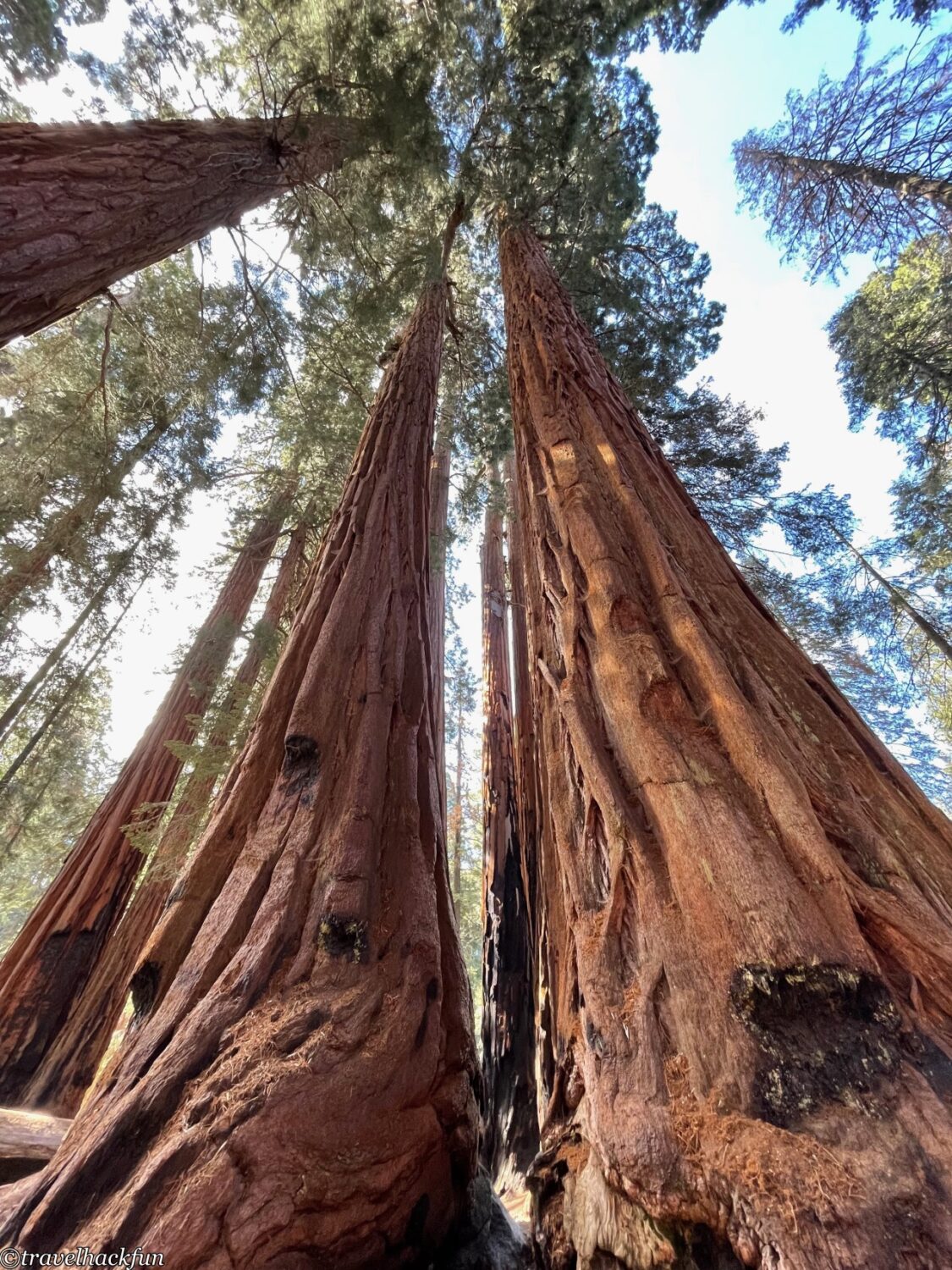
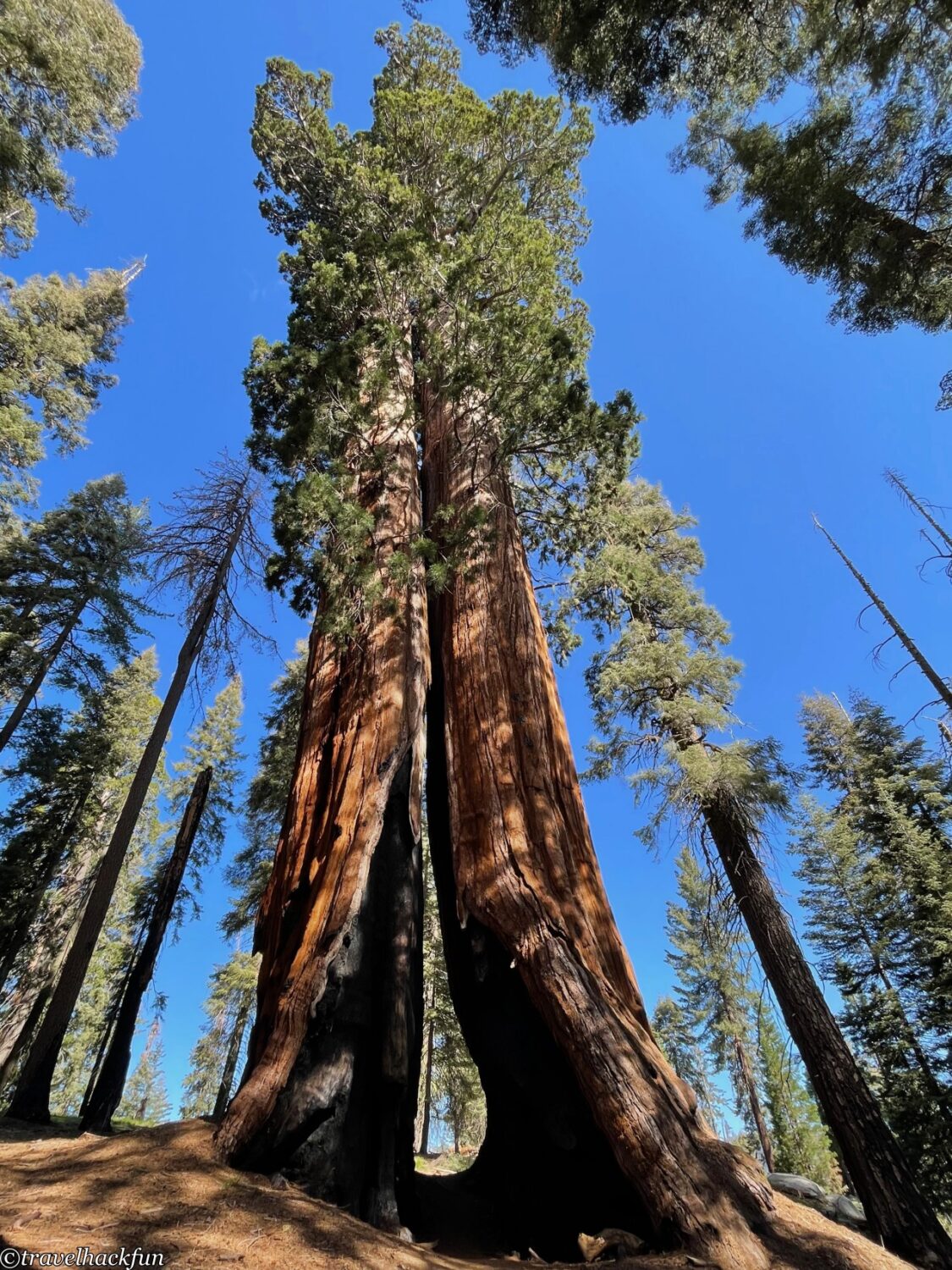



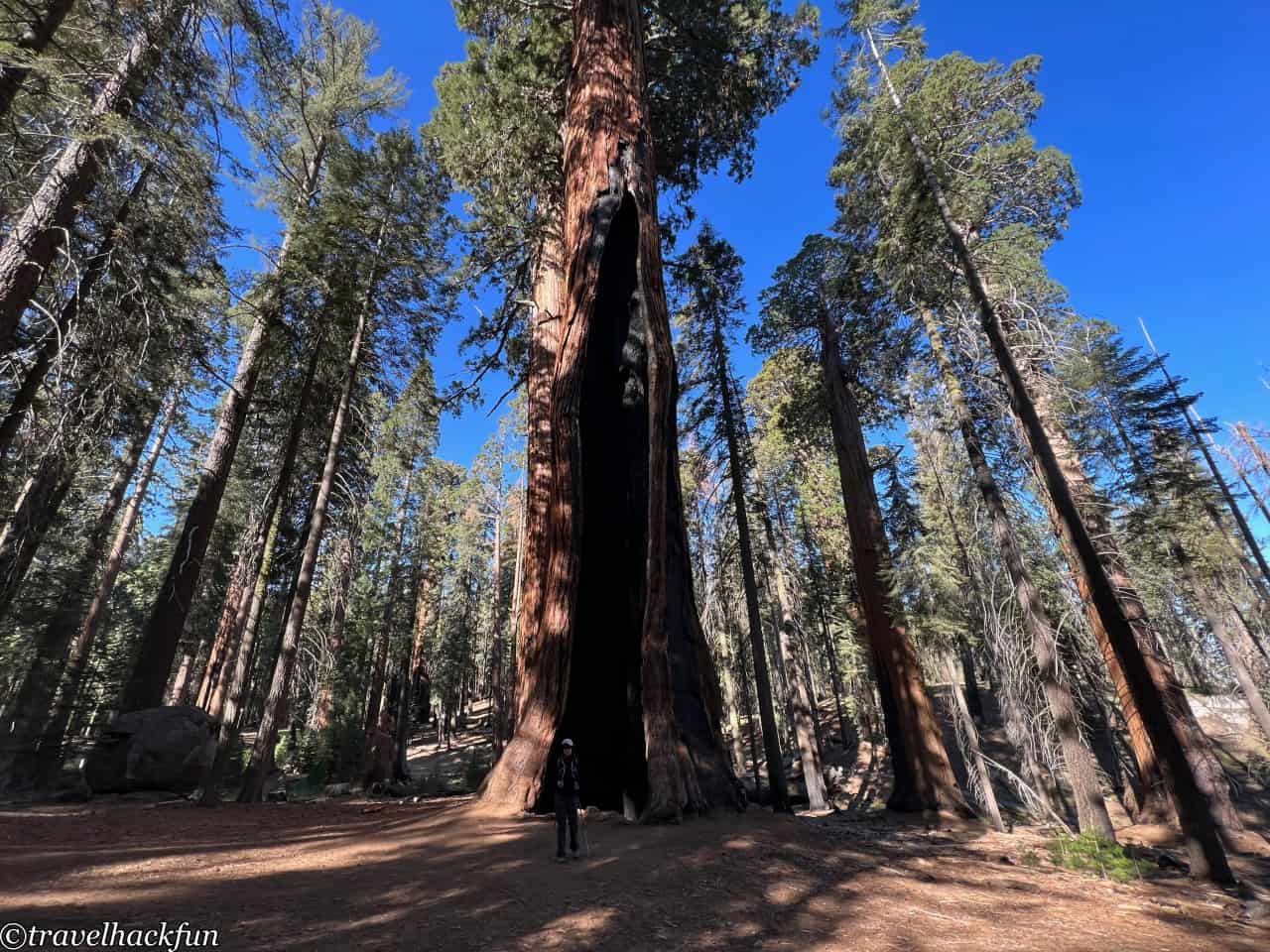
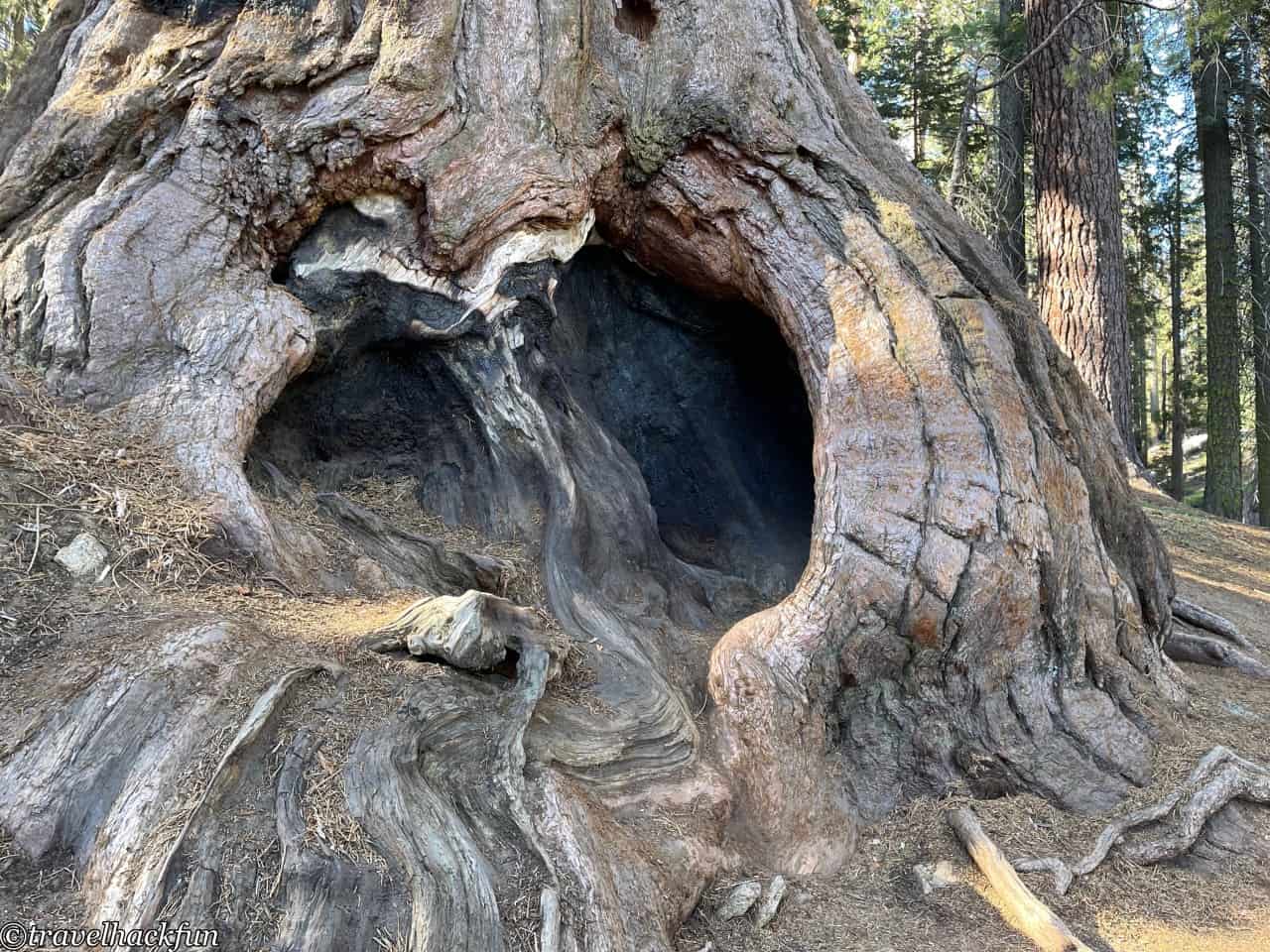
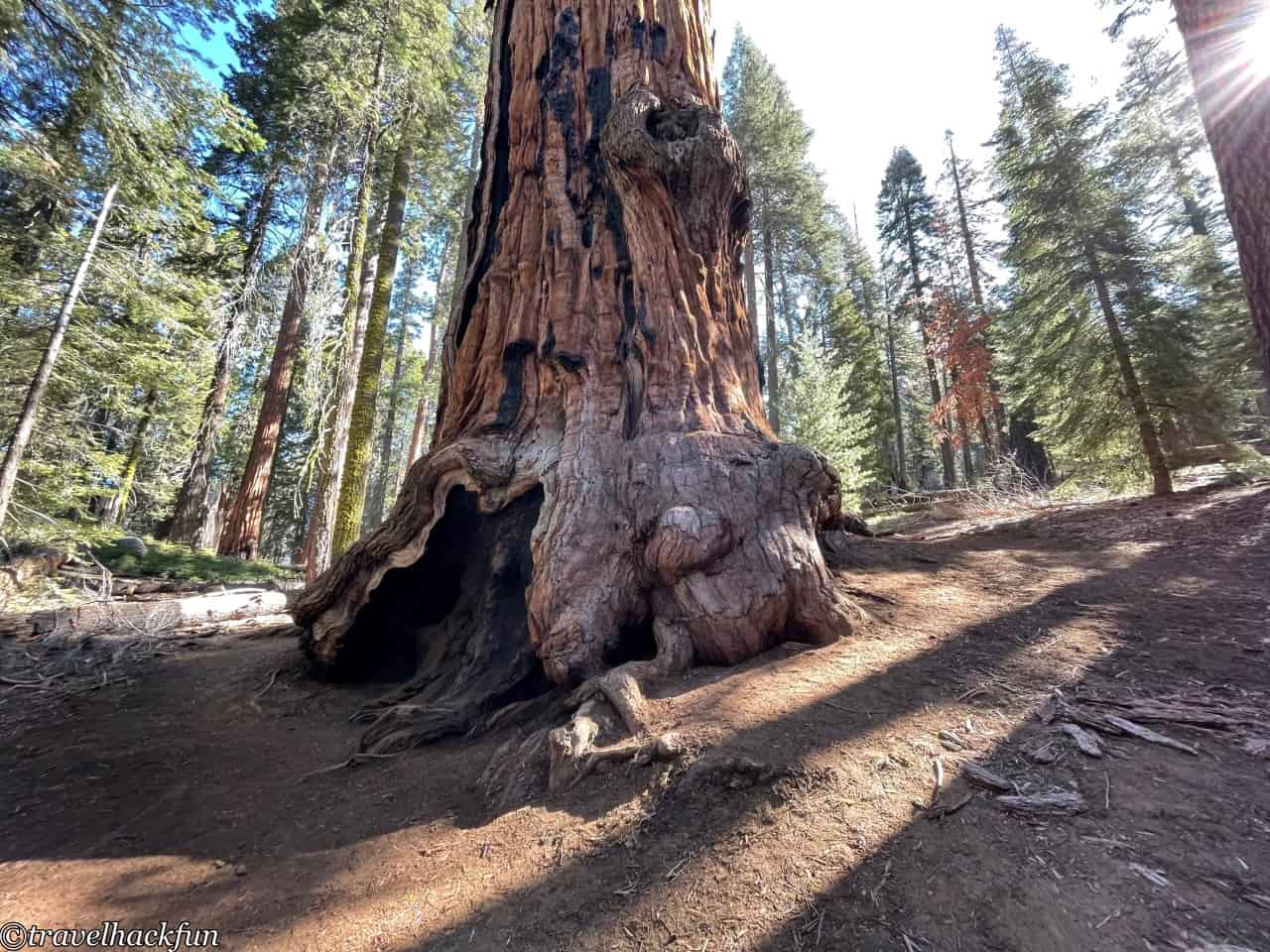
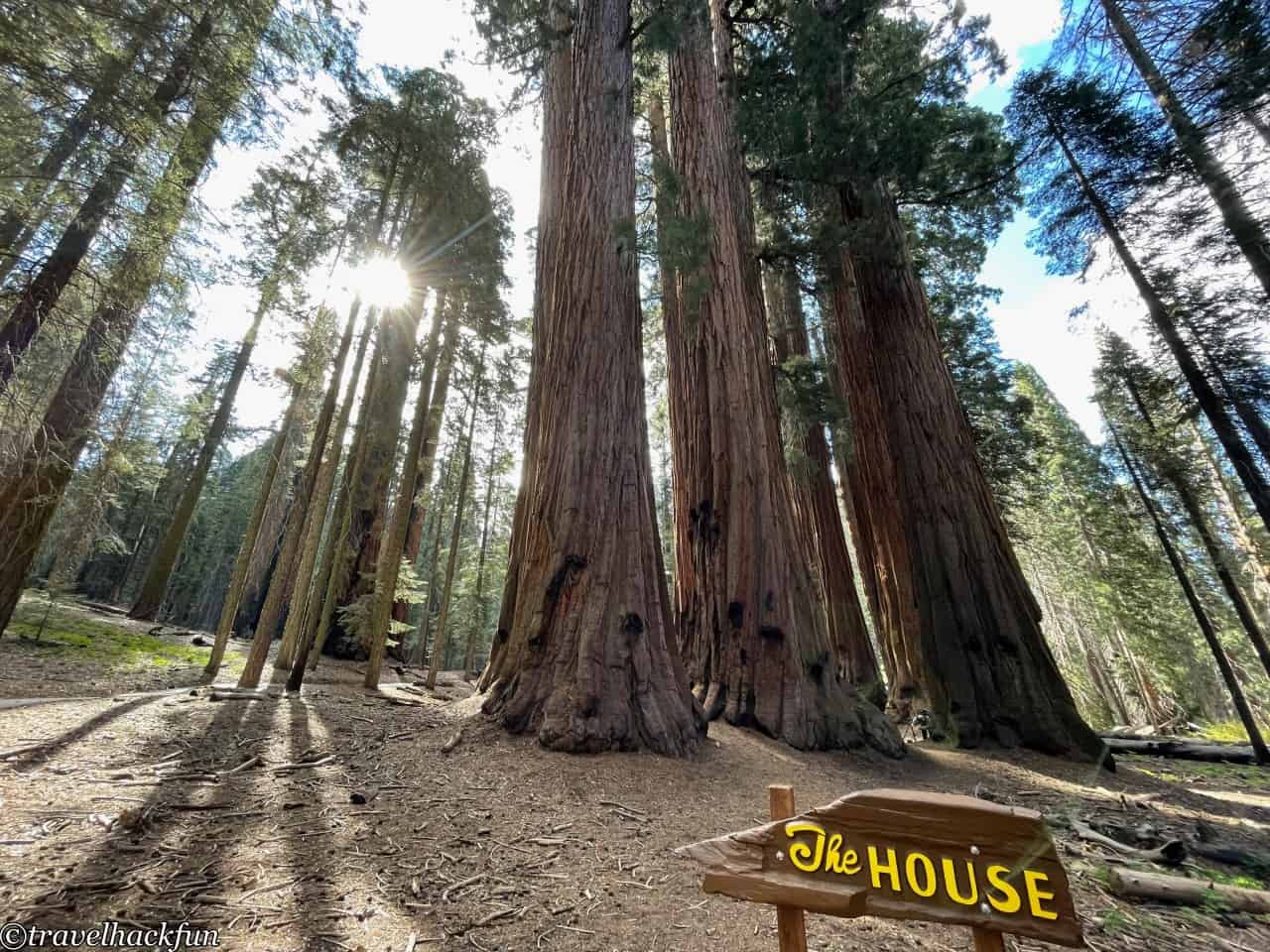
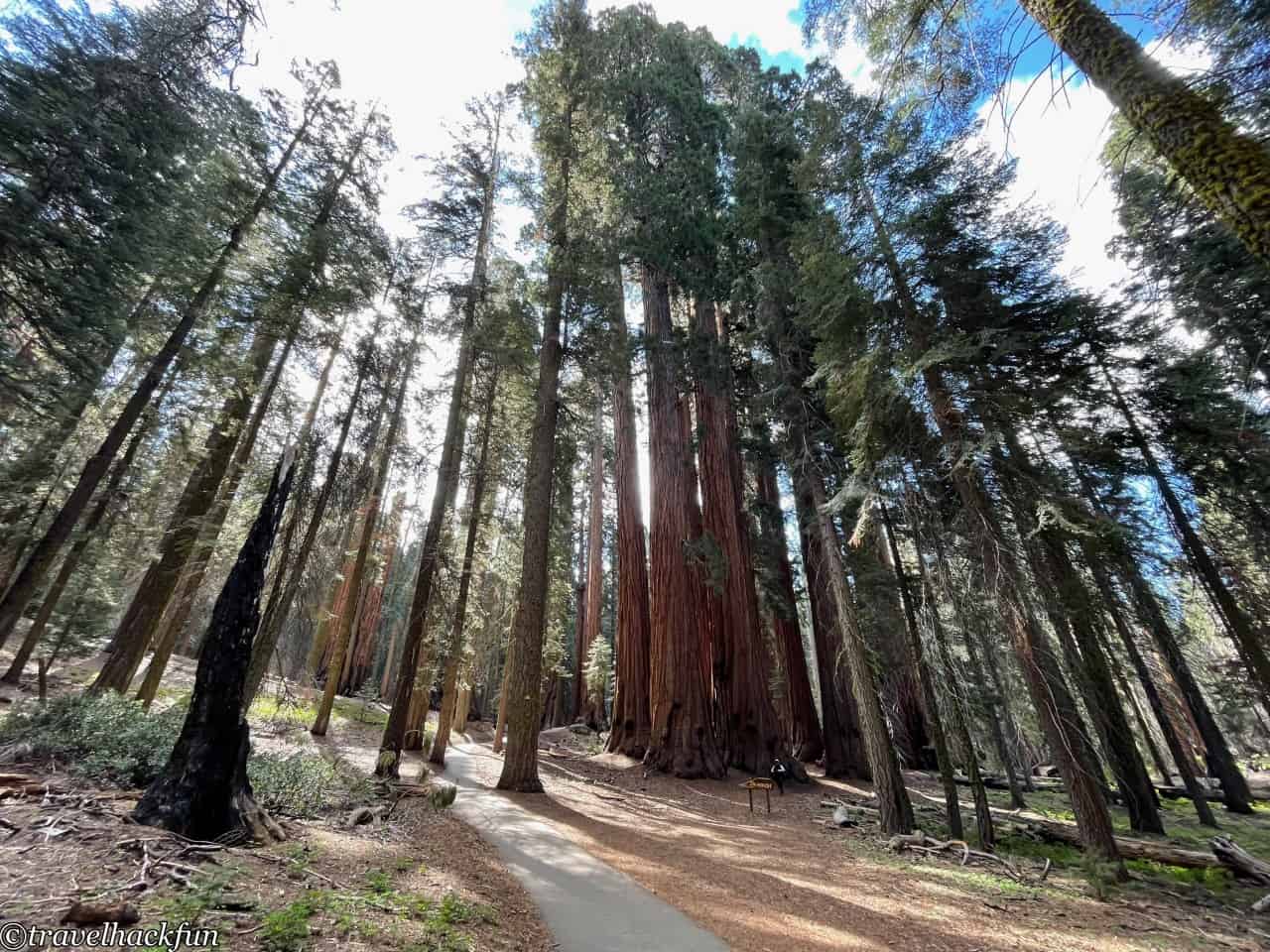
You can pass by the Circle Meadow Trail, where you can see a nice view of the canyon and pass through a tunnel of fallen trees and get back to the Congess trailhead. If you are more ambitious, you can continue to the back of the trail to join the Trail of Sequoia.
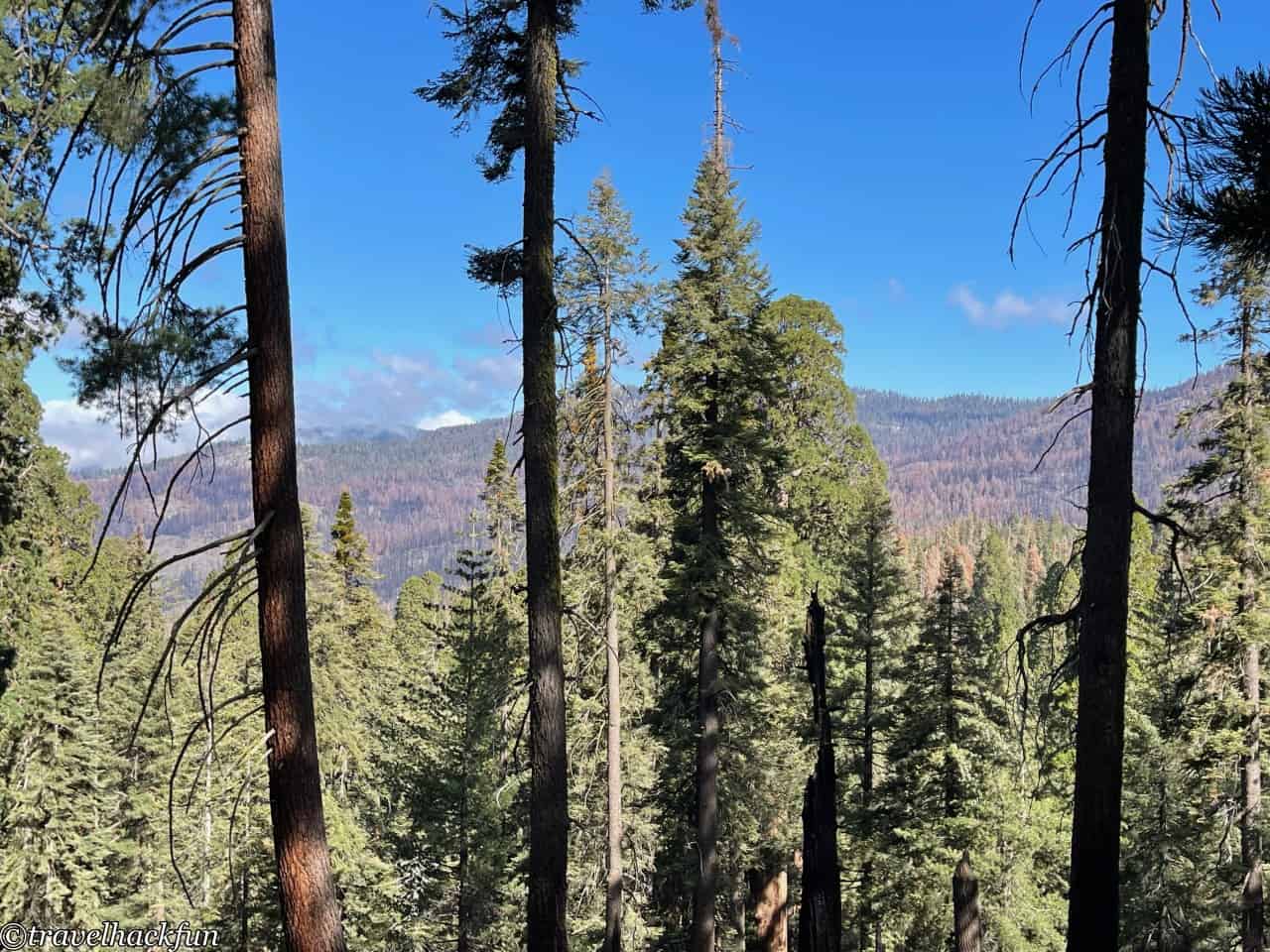
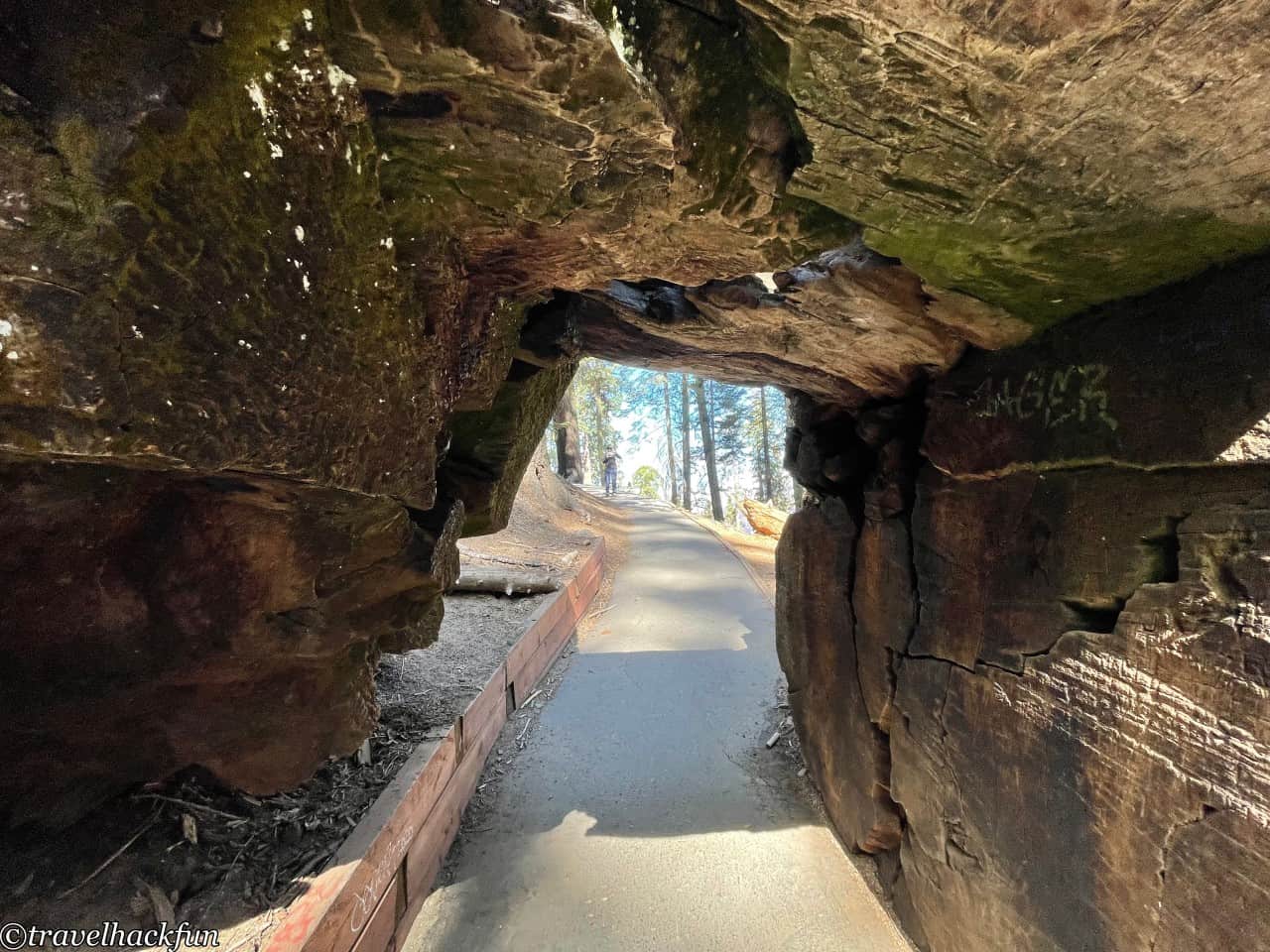
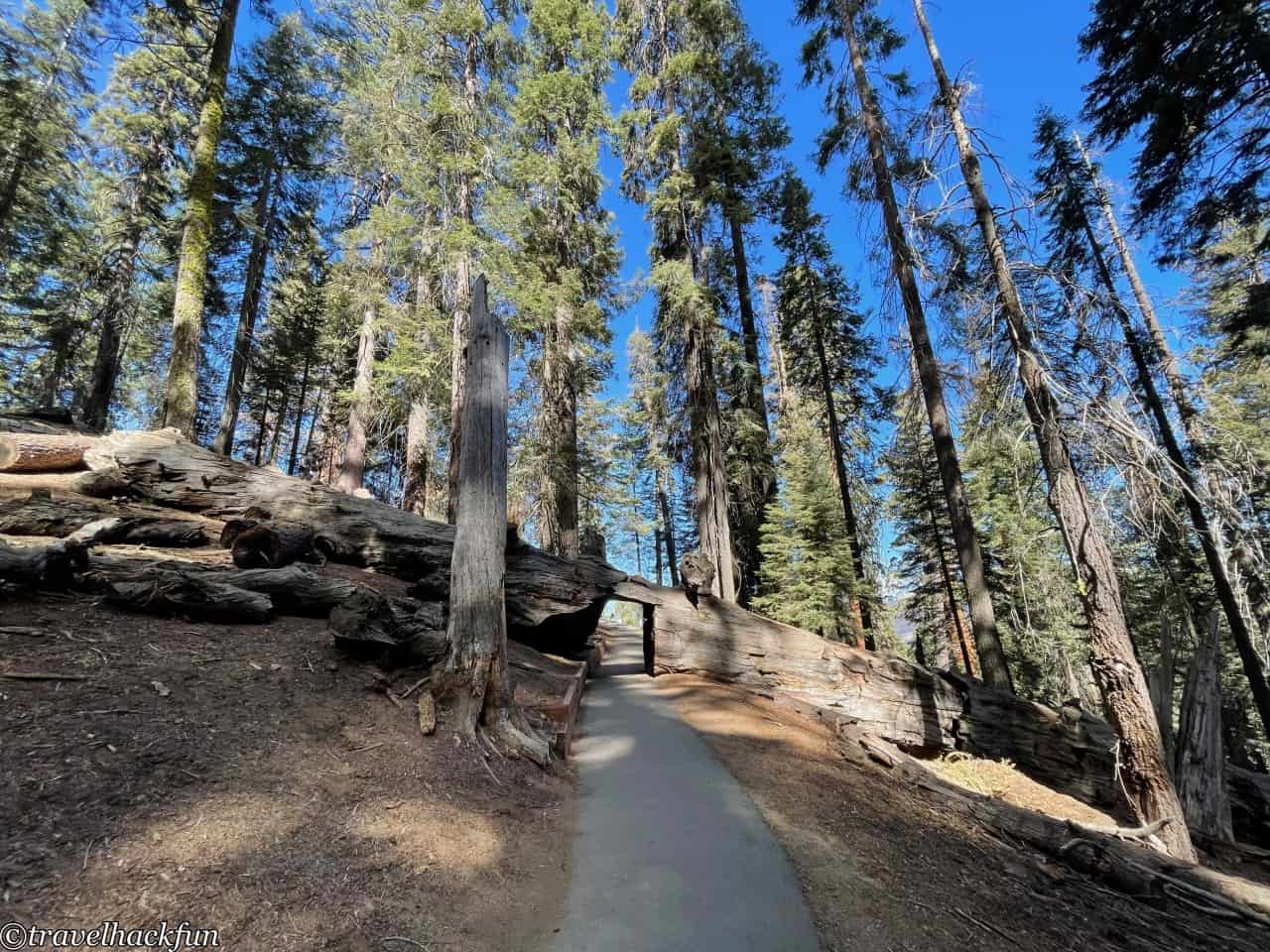
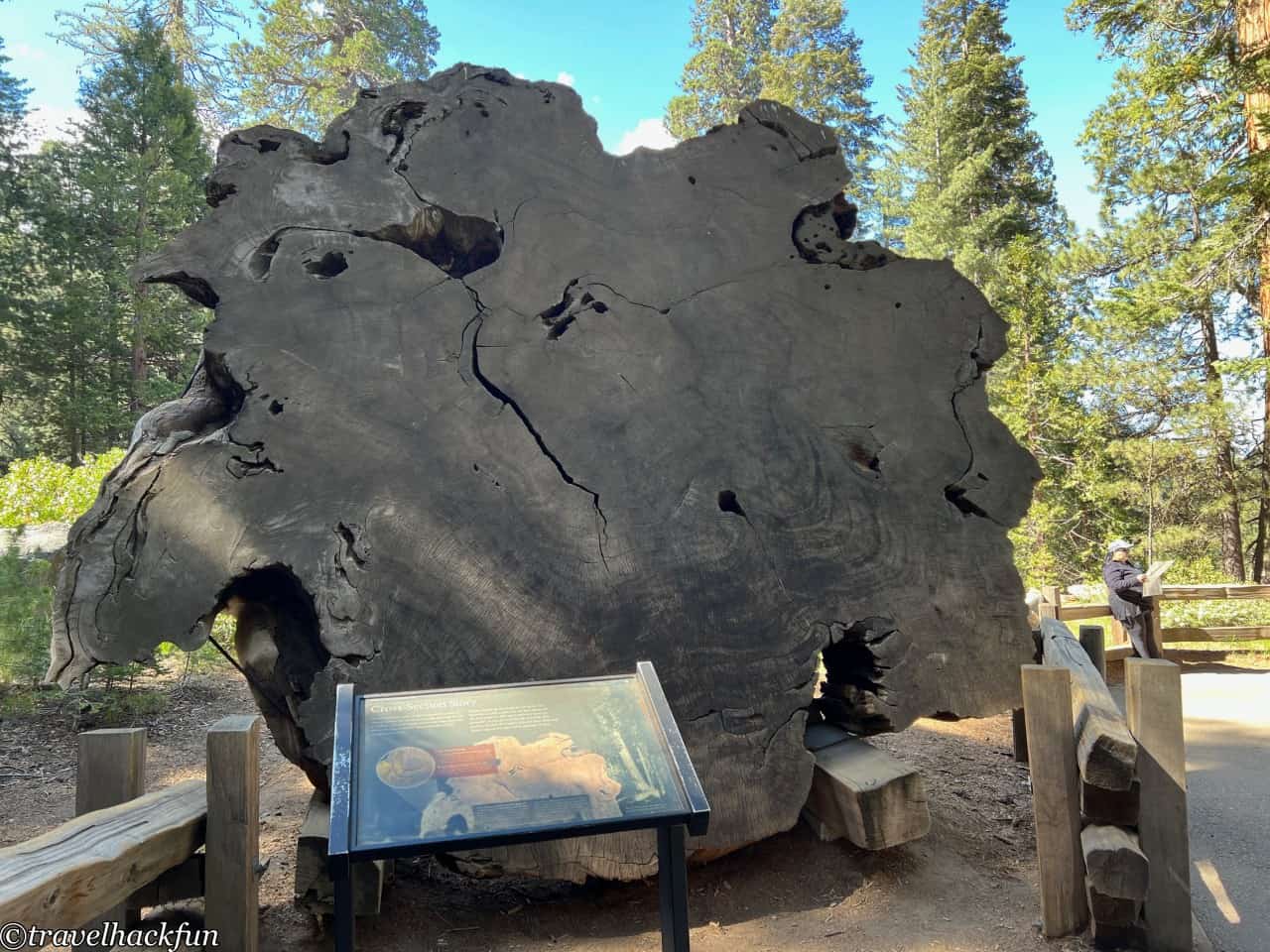
Giant Forest Museum Area
Sentinel tree and Giant Forest Museum
The Giant Forest Museum is the centerpiece of the area. There is a lot of information about the Sequoias in the museum that you can visit.
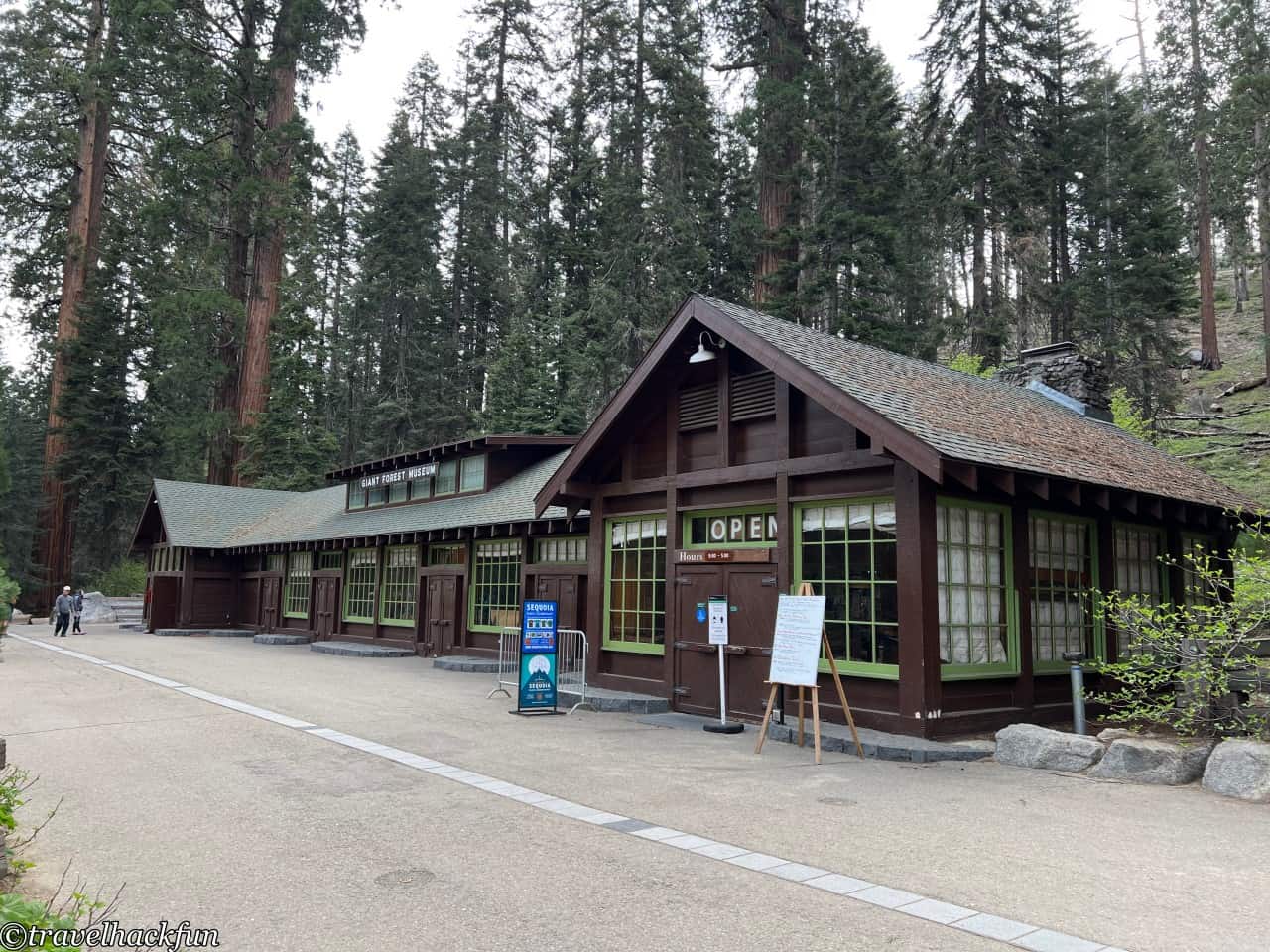
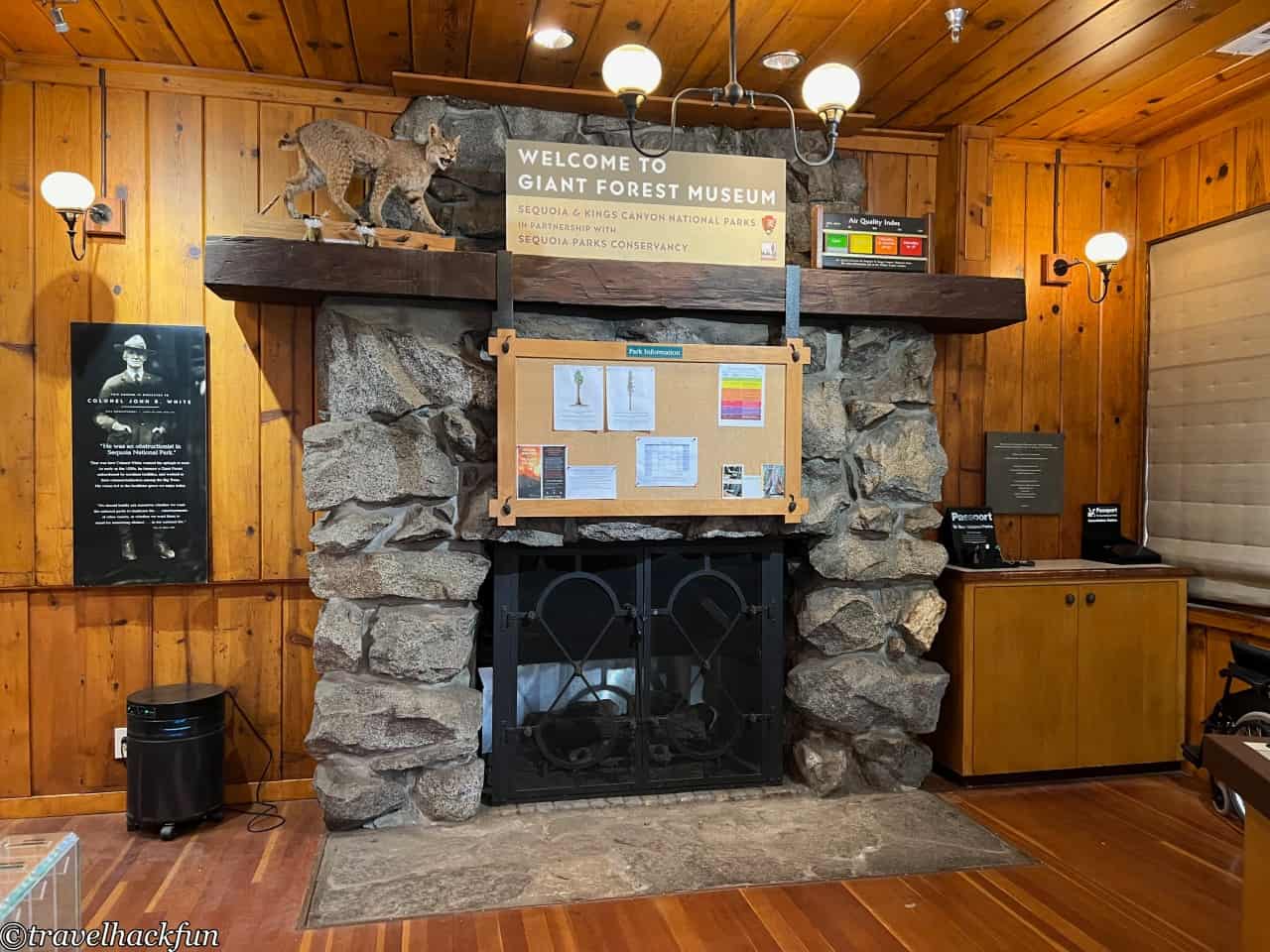
The main attraction of the Giant Forest Museum is the Sentinel tree in front of it, which is a very large Giant Sequoia, over 250 feet tall, making it very, very conspicuous.
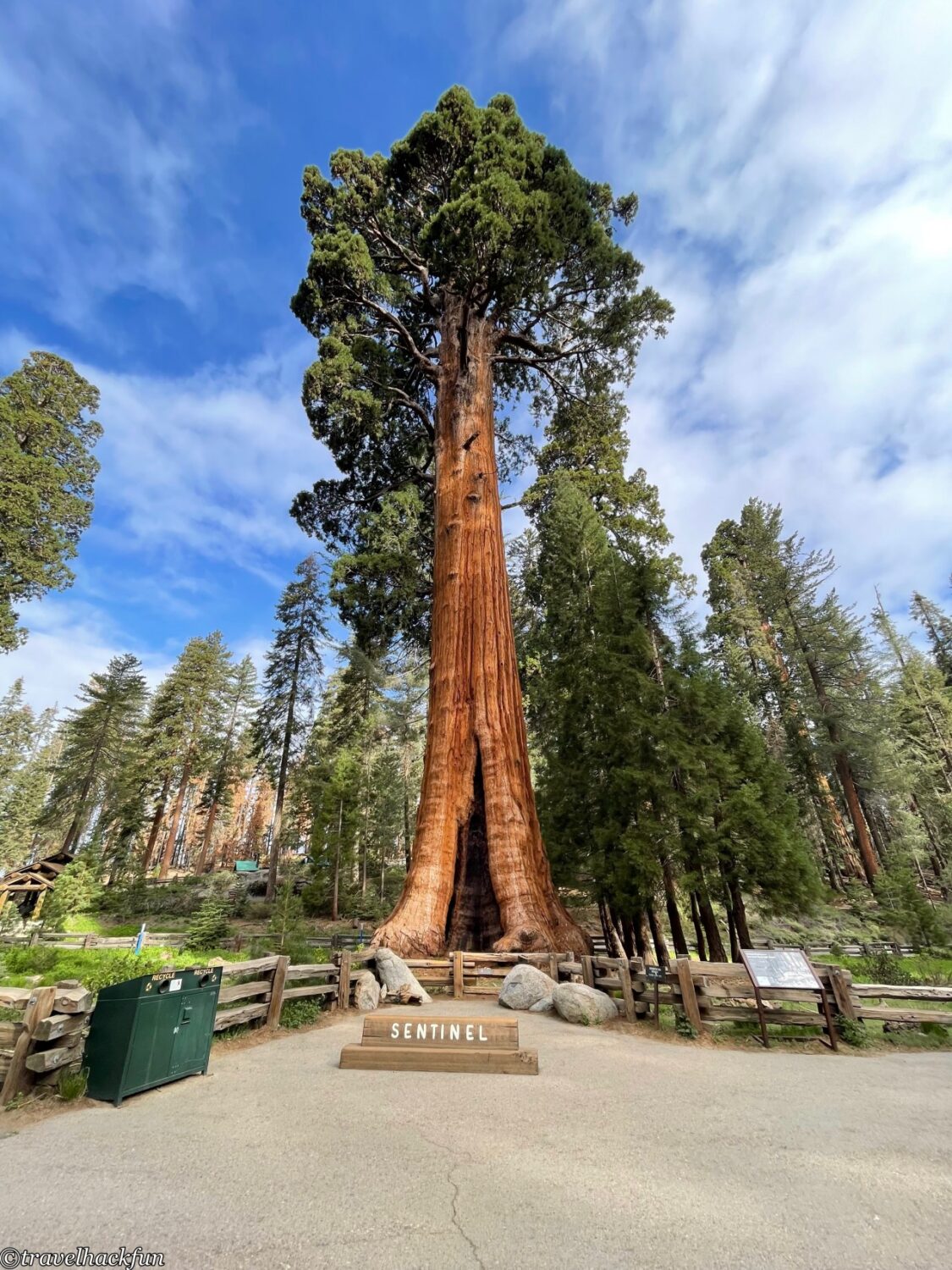

Beetle Rock
Beetle Rock is a huge marble platform located not far from the Giant Forest Museum, and the view of the mountains from here is spectacular.
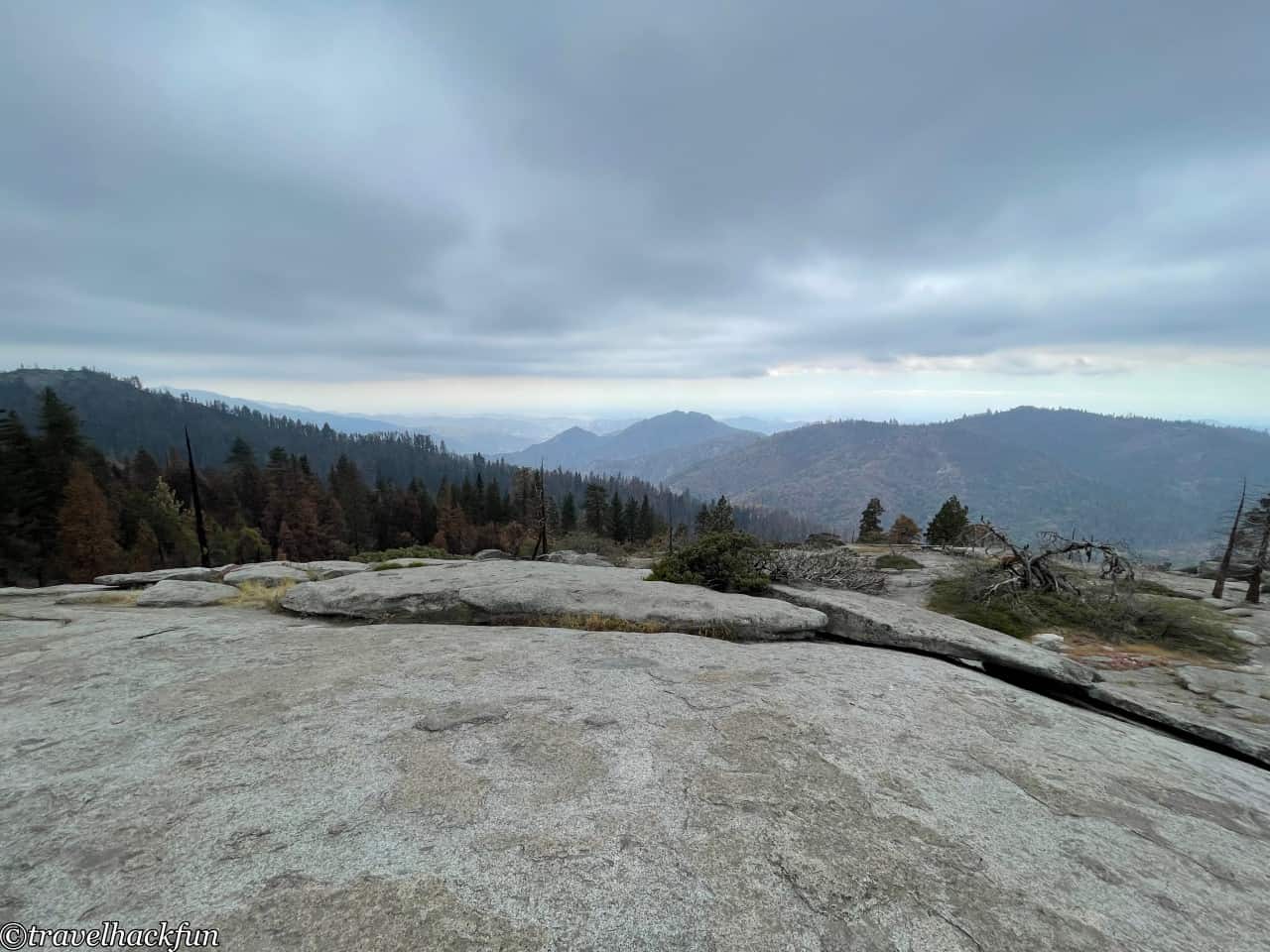

Beetle Rock Trail
From Beetle Rock, follow the Beetle Rock Trail to Big Tree Trail. The redwood forest in this area had a forest fire in 2021, so the whole redwood forest looks charred and black. However, the redwoods are actually very resistant to burning. The fire only left burn scars and ashes on the ground.
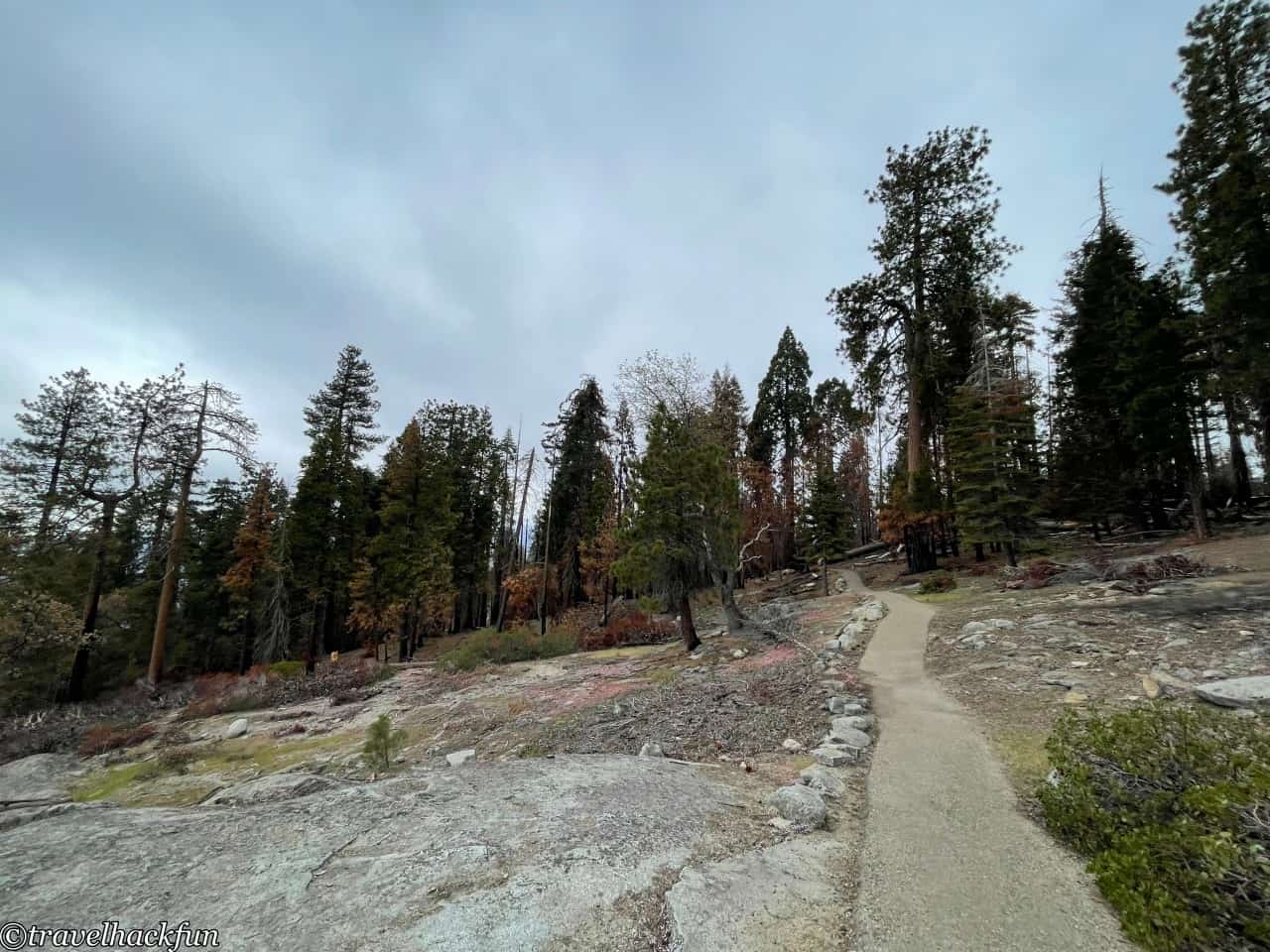
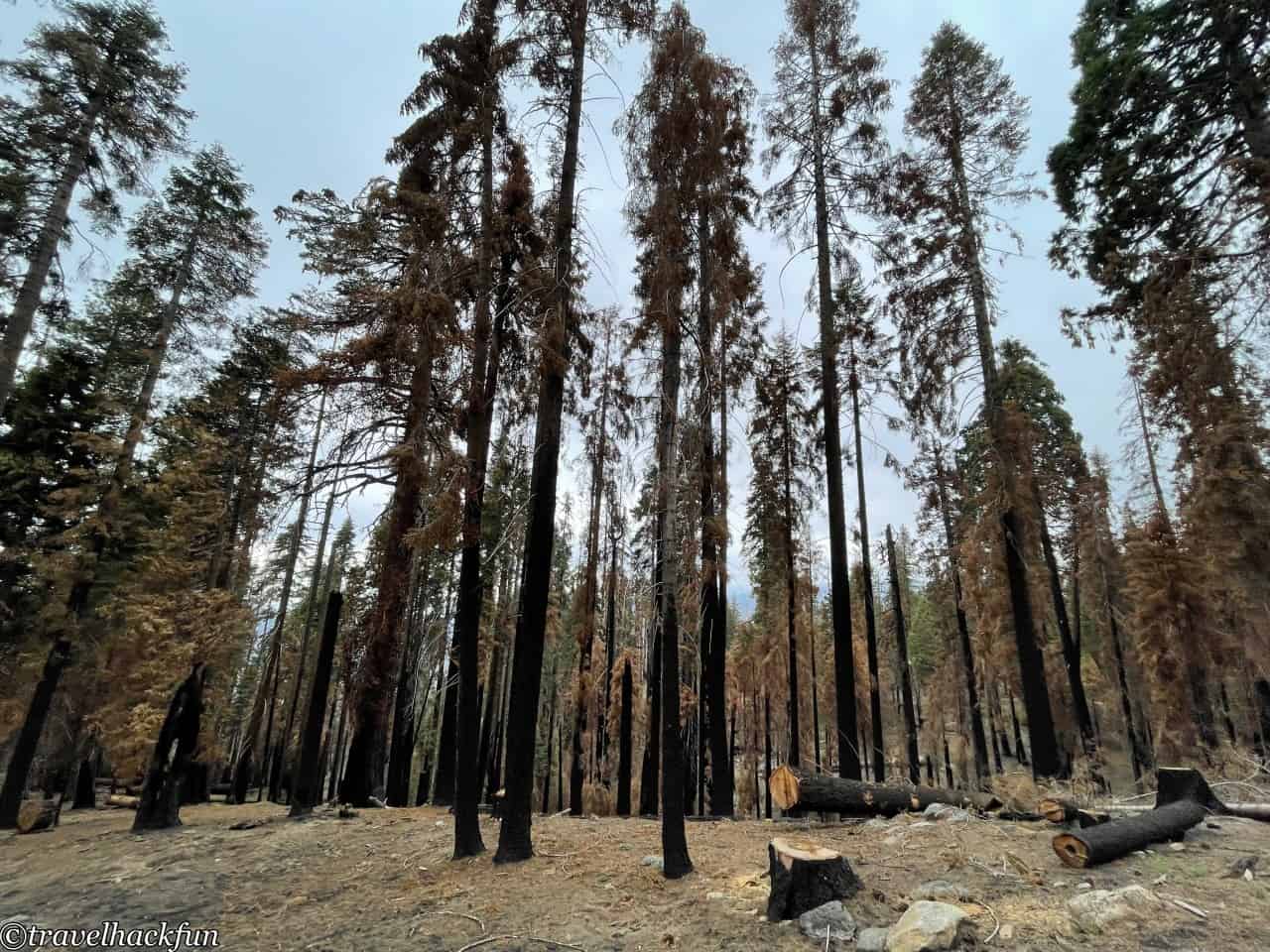
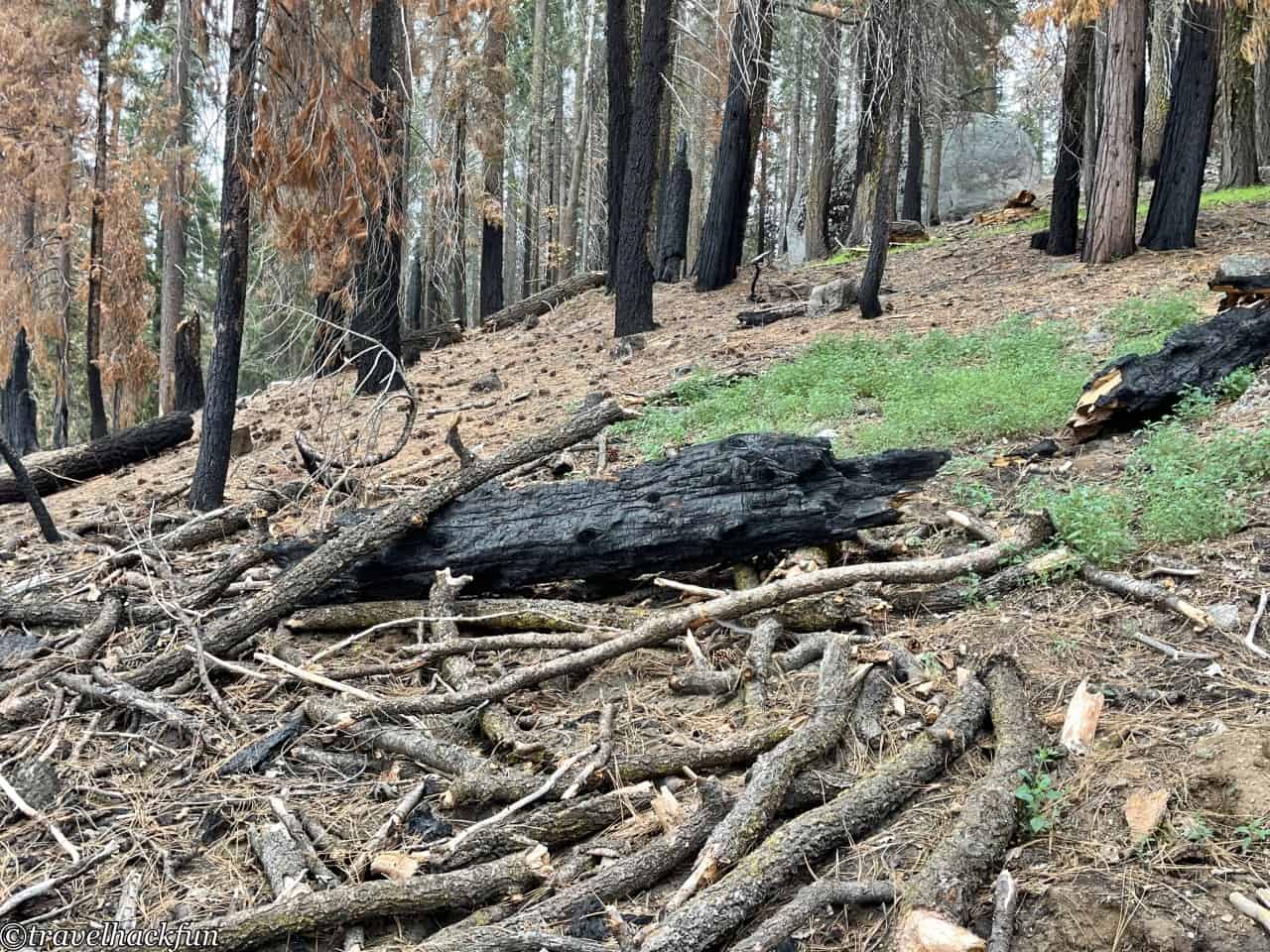
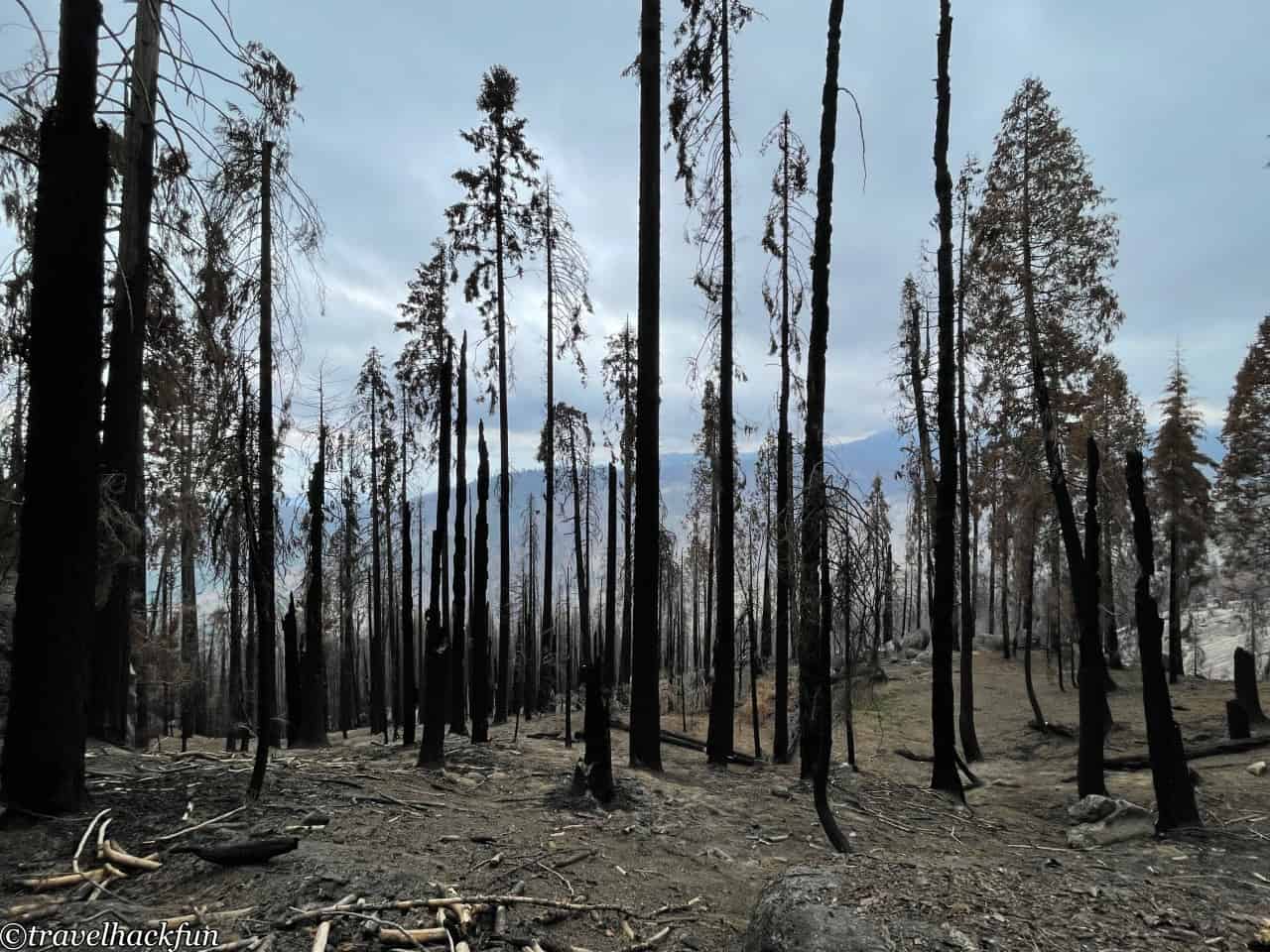
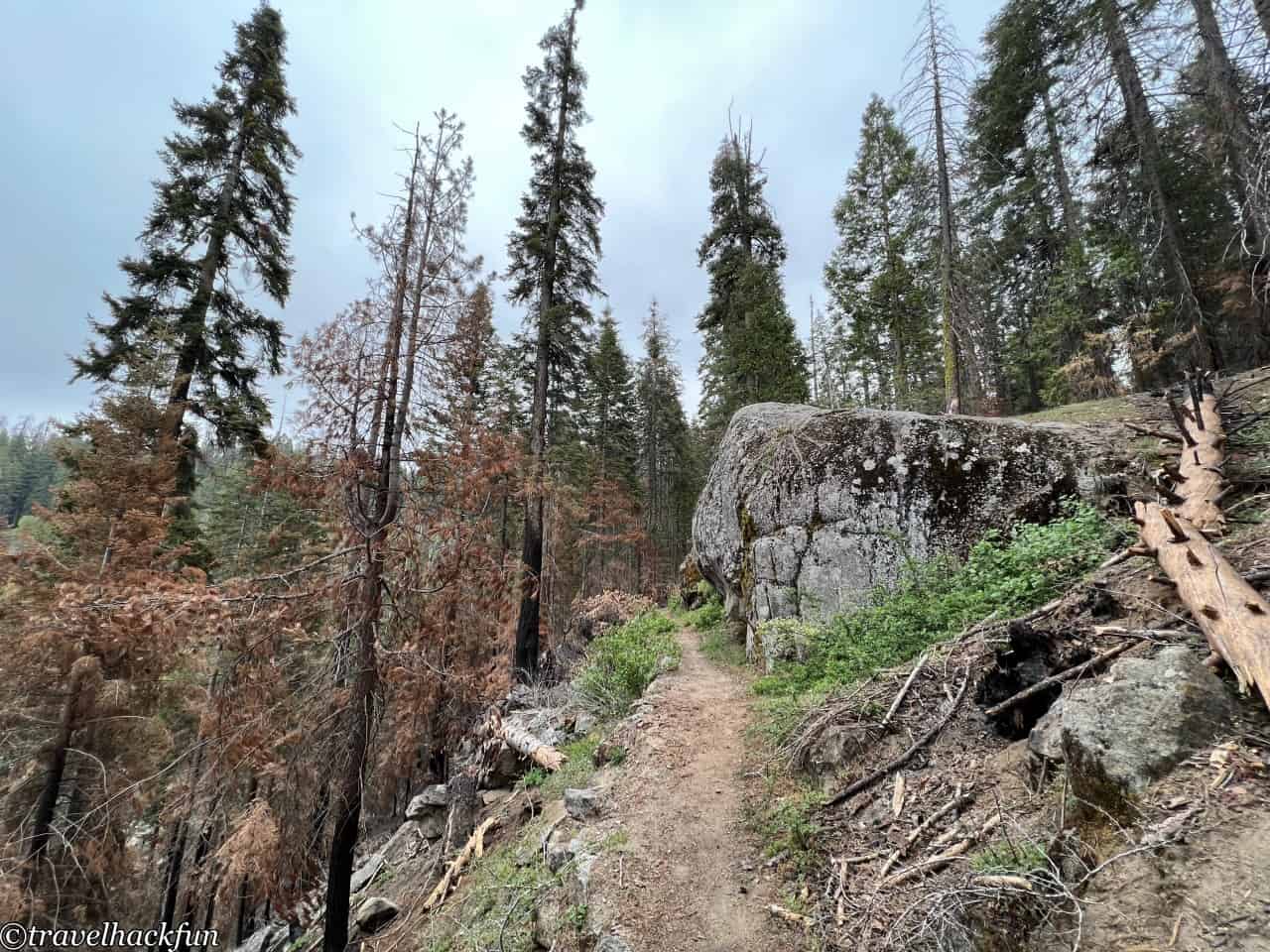
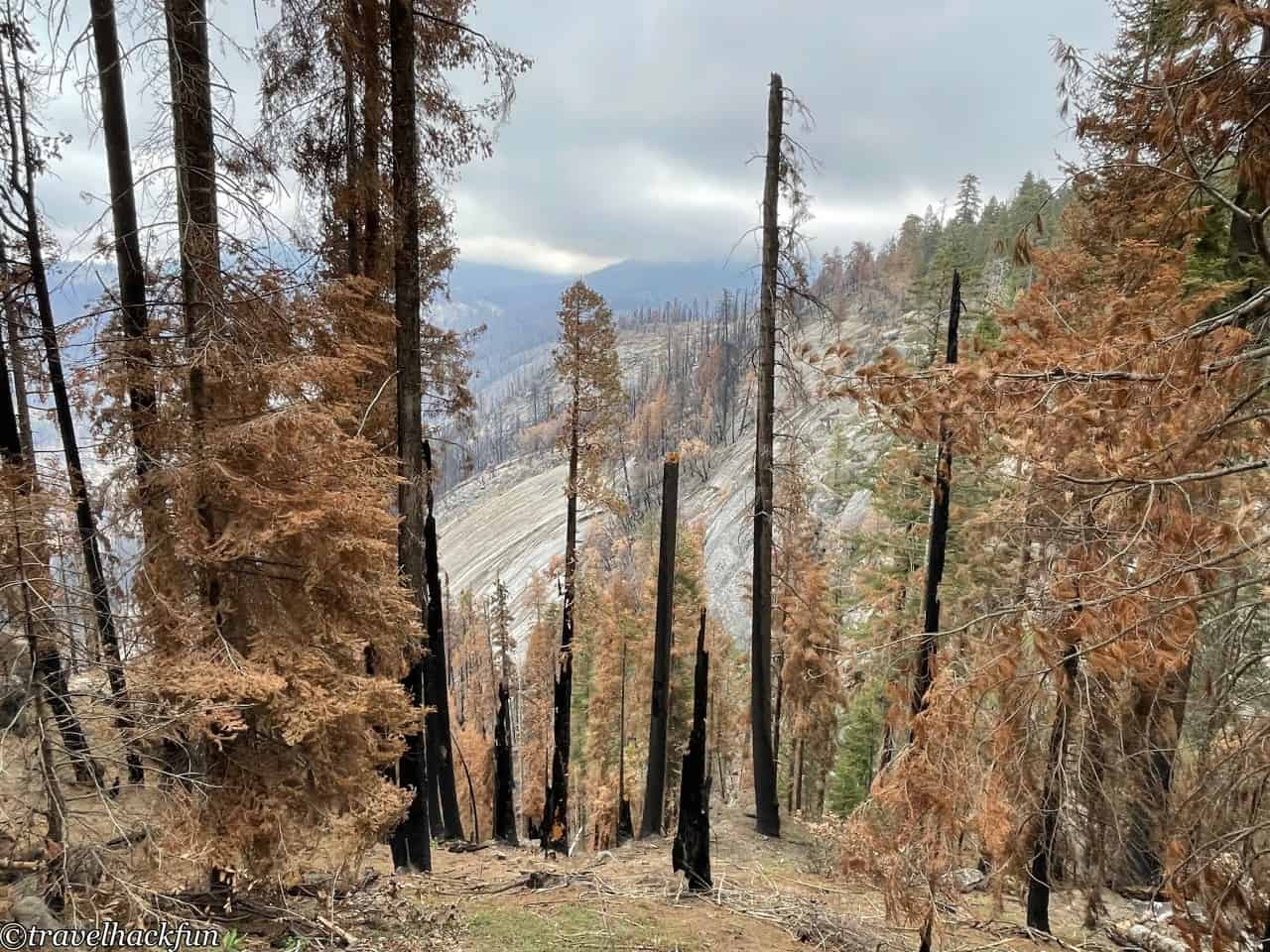
Must-do | Big Tree Trail
Big Tree Trail is a must-visit trail in the Giant Forest Museum area. It is called Big Tree Trail because the trees here are impressively big and numerous. The trail is only 0.6 mile long, and the trail can take you back to the museum.

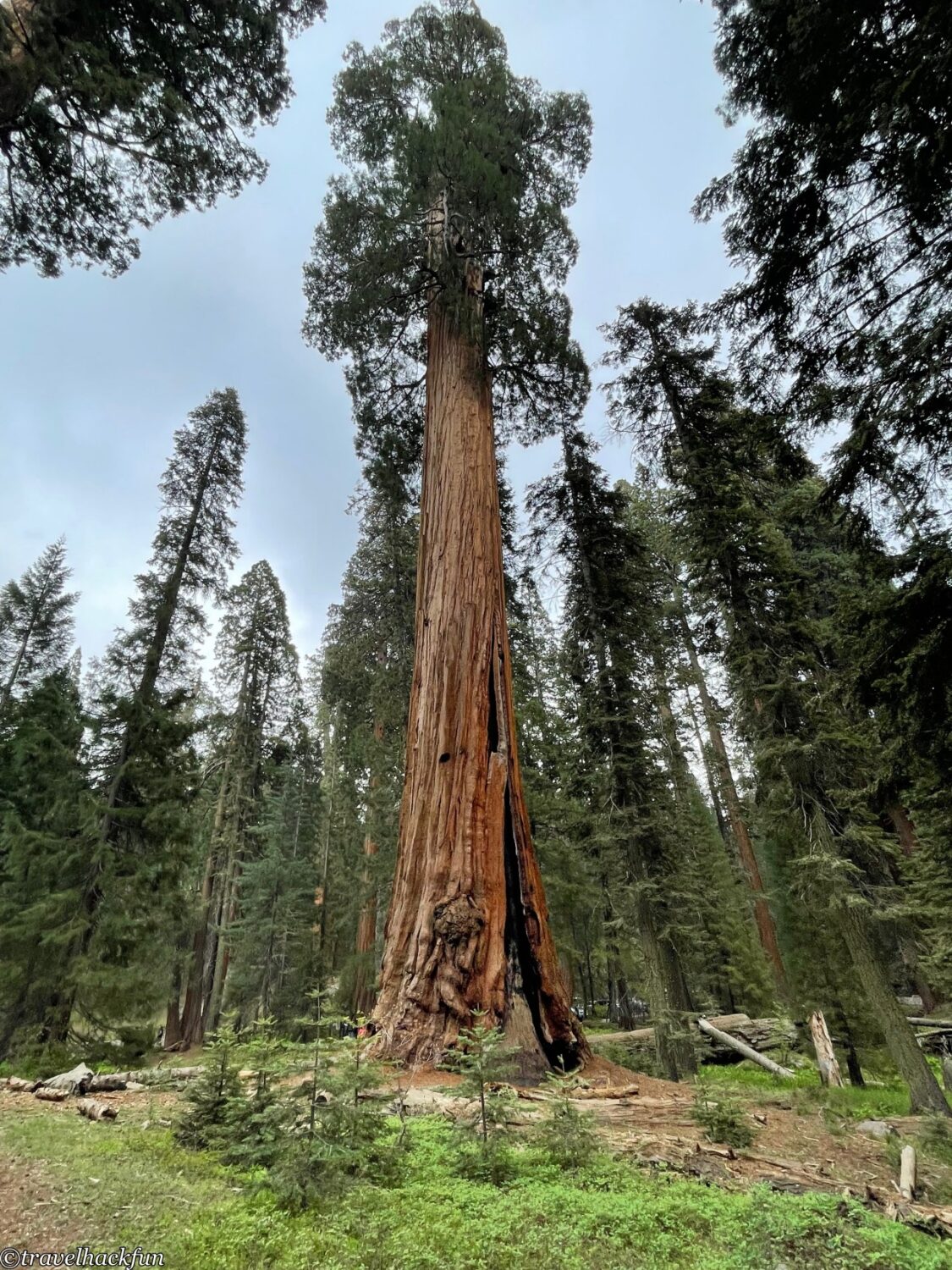
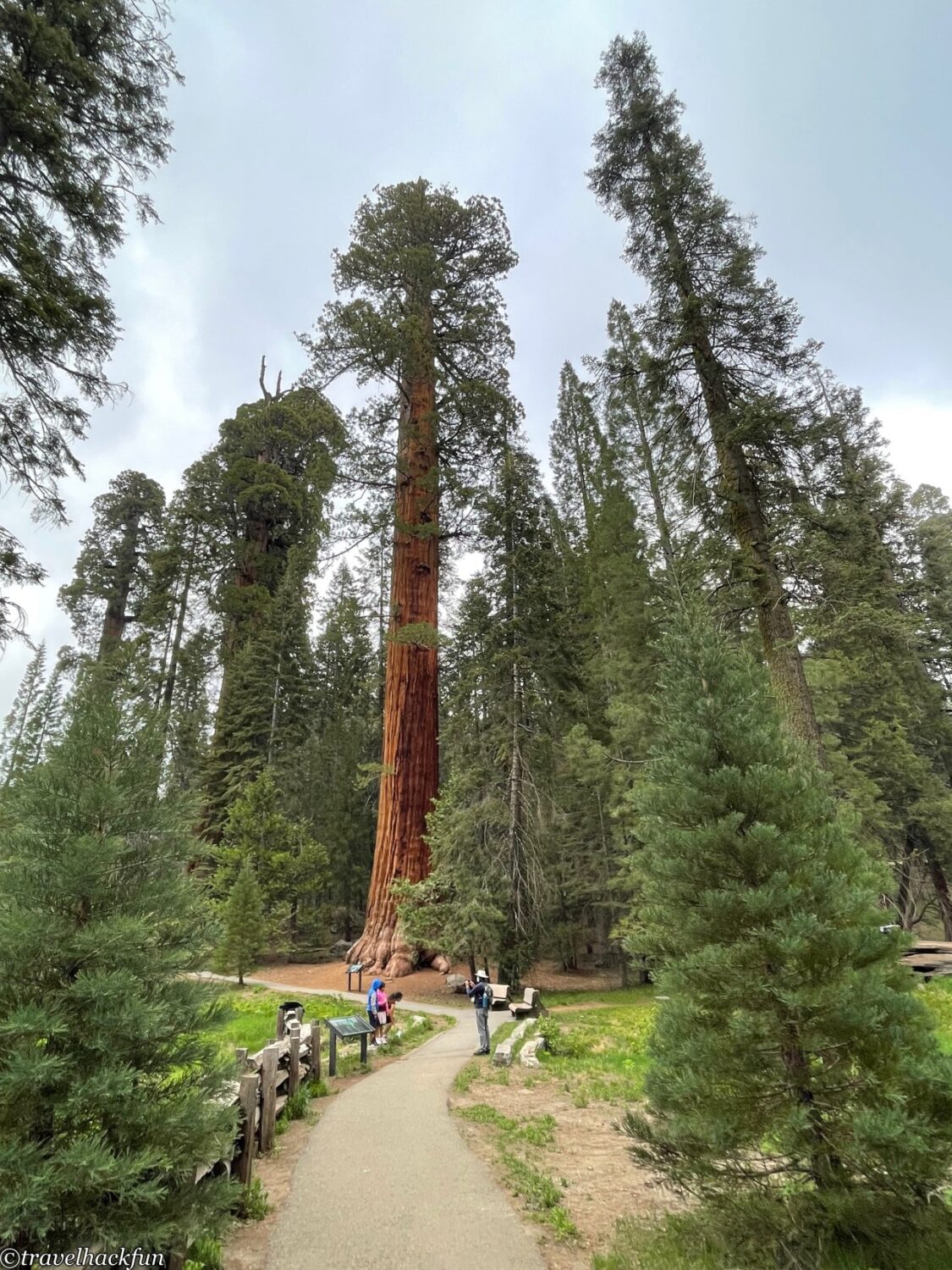


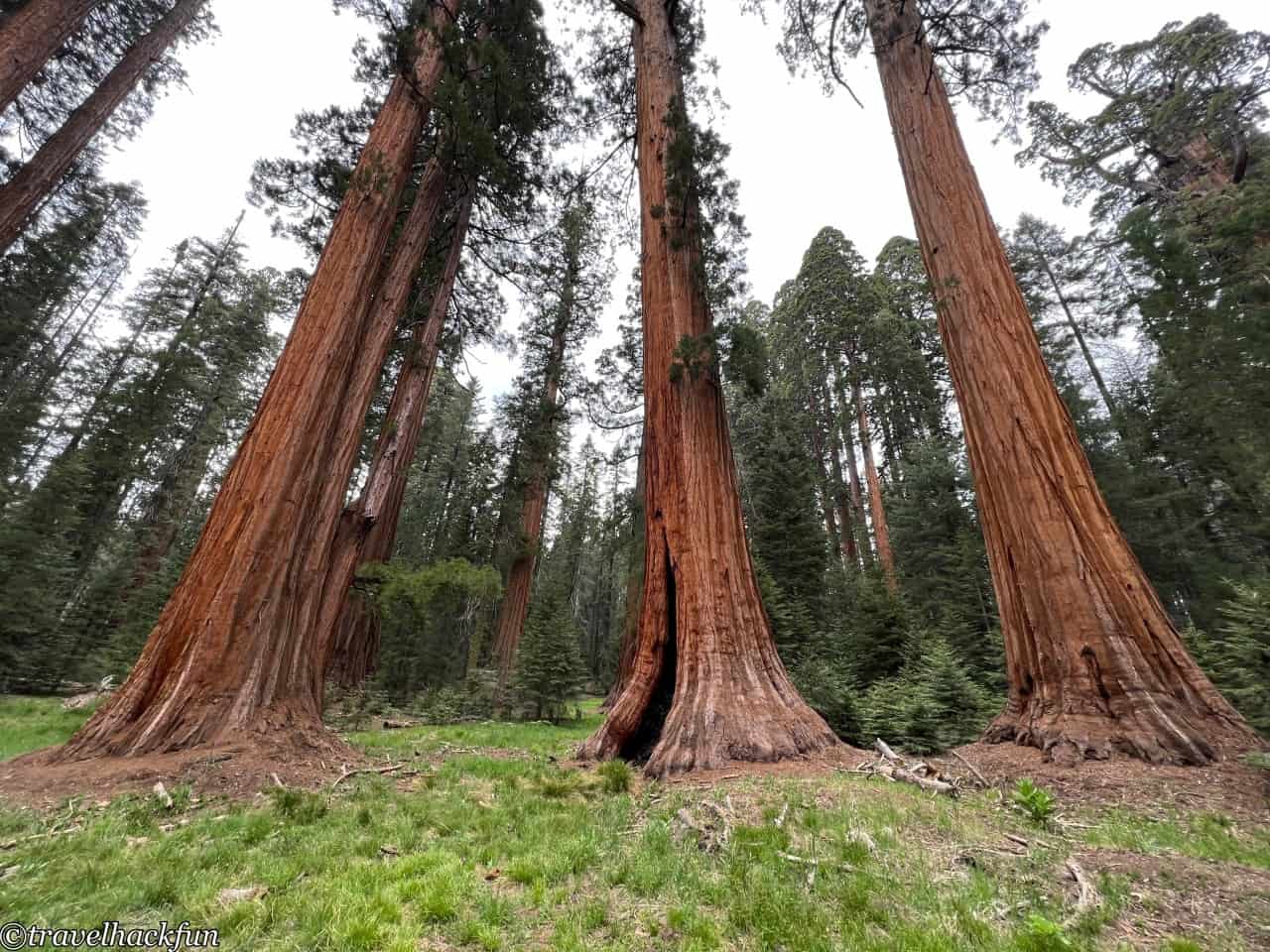
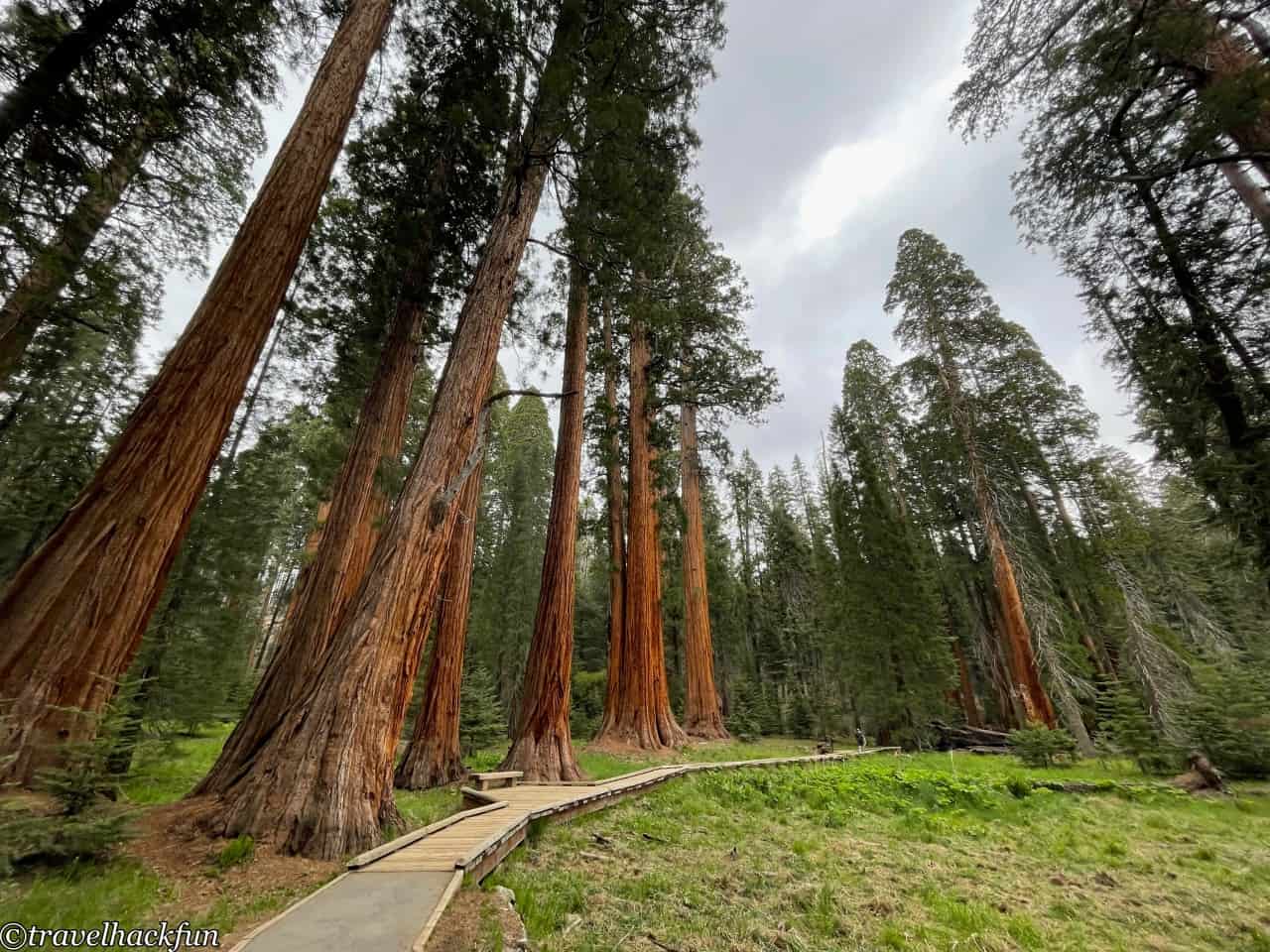
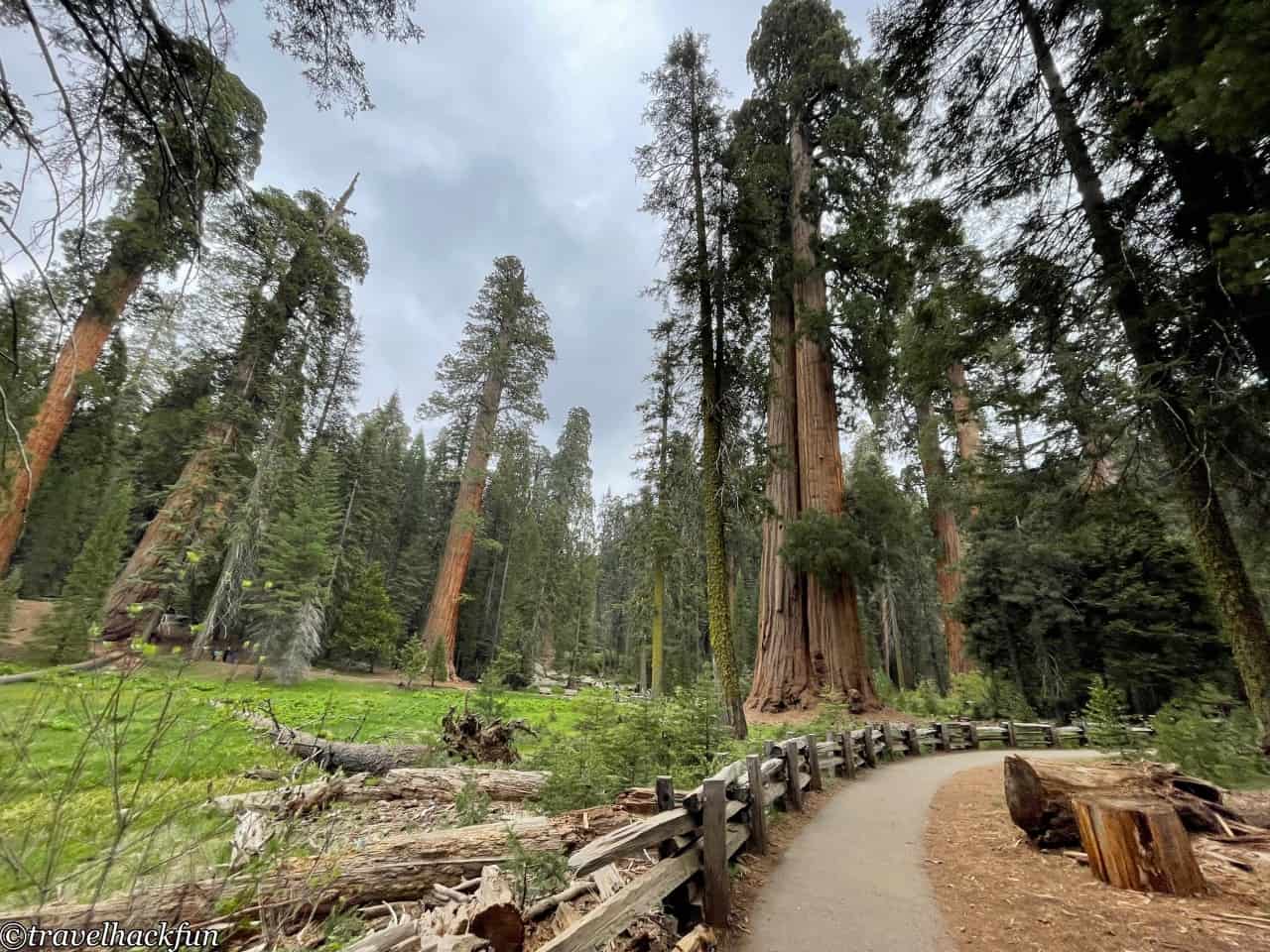

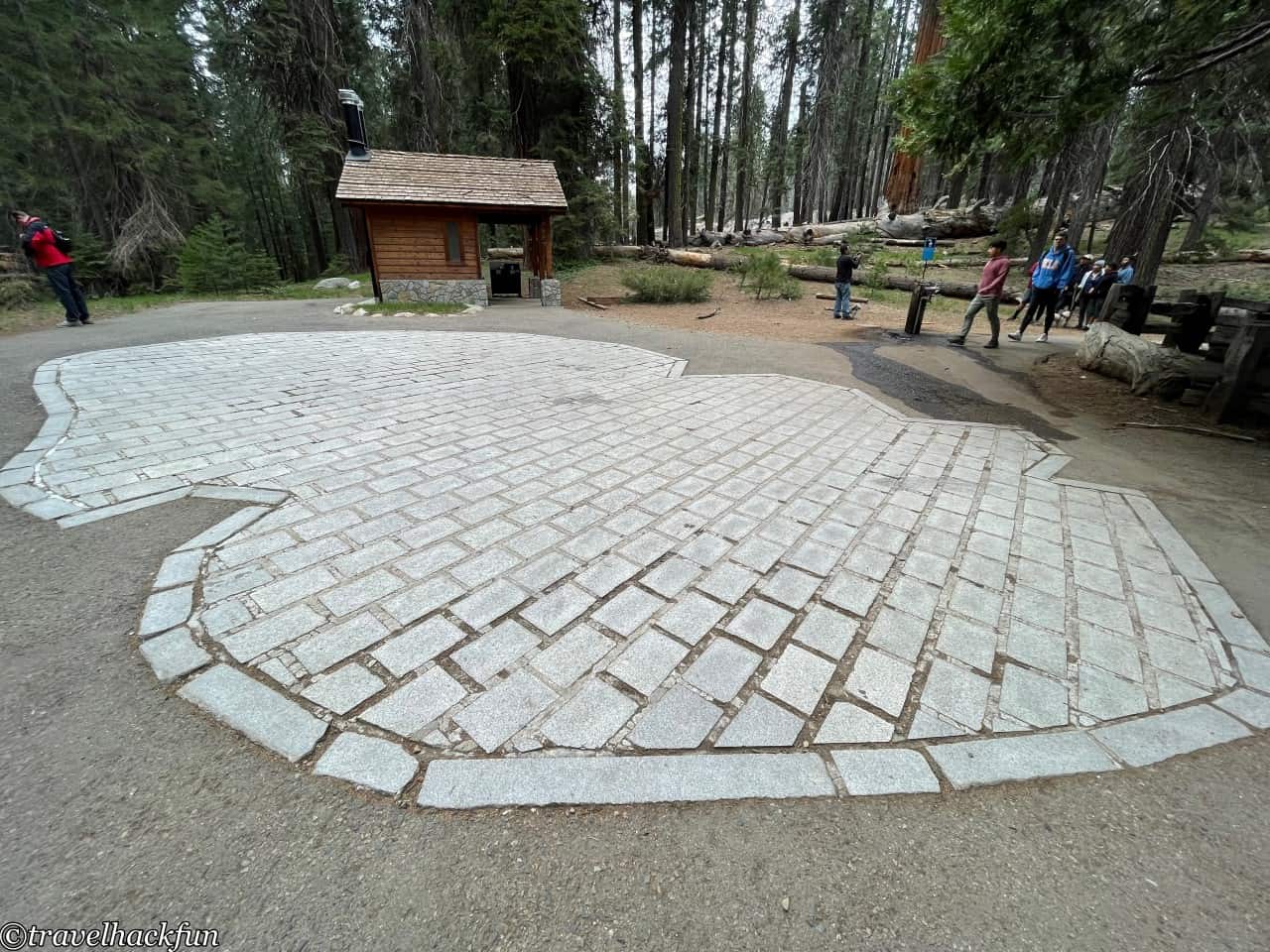
Moro Rock
Moro Rock is a huge marble rock. We must climb to the top along a steep and narrow trail with 350 steps, but the view was definitely worth it. From the top of the rock, we can look down on a wide range of mountains, forests and redwoods. The trail at the top is actually very narrow. When the weather is good, you can see Mount Whitney, the highest peak in North America.
Moro Rock can only be accessed by the gray line shuttle bus during holidays. It is recommended to come here first thing in the morning to avoid the crowds.
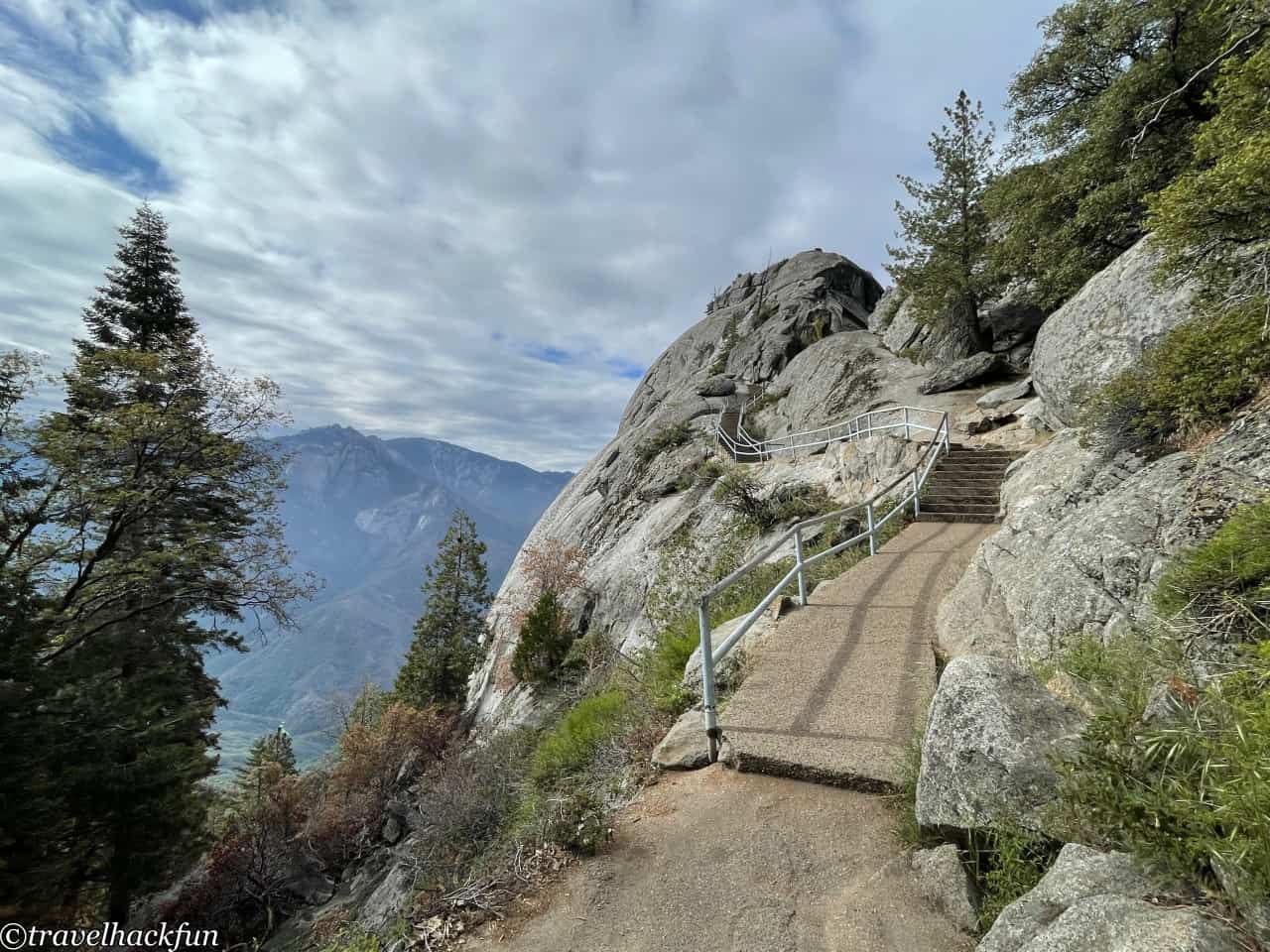
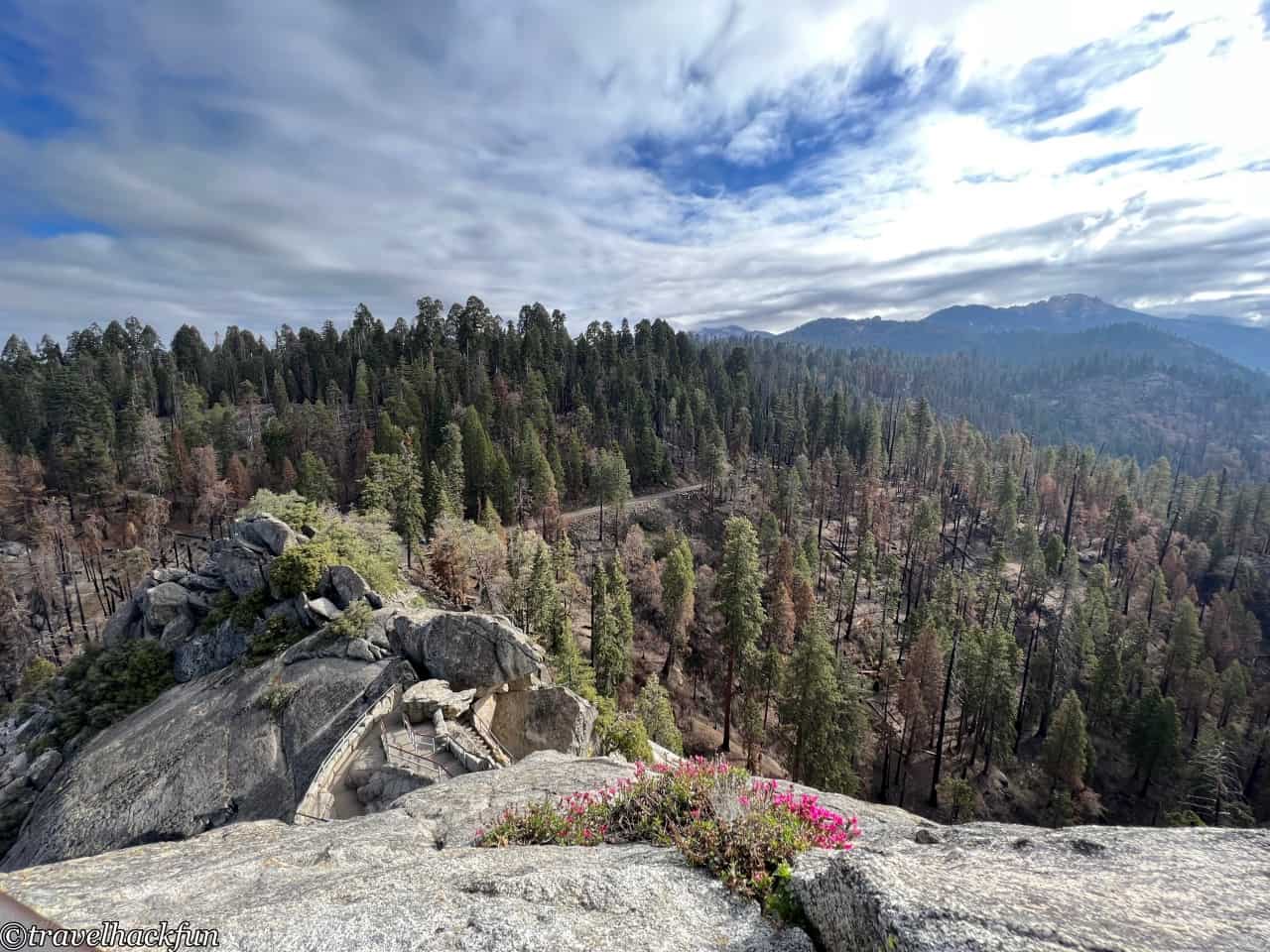
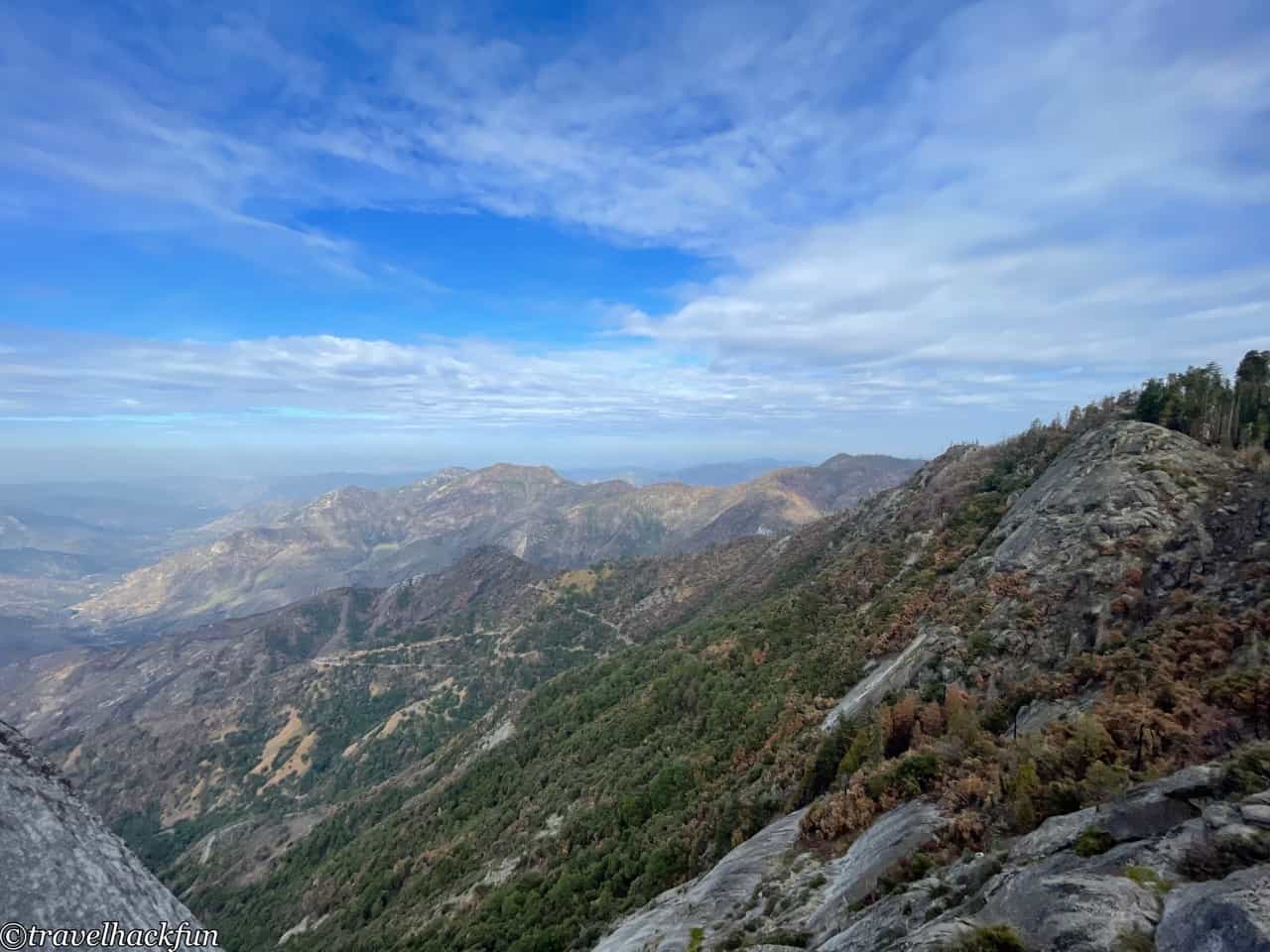
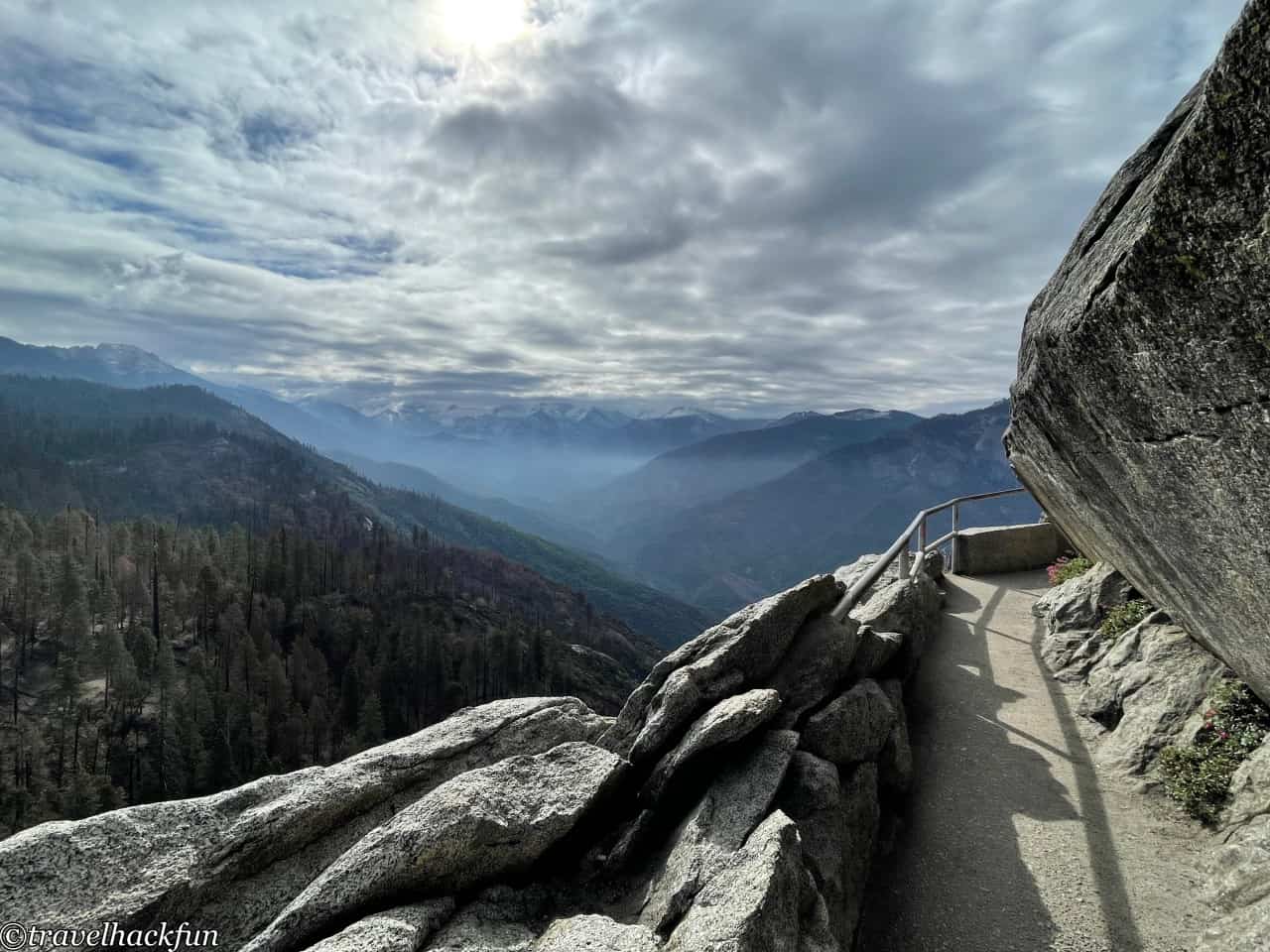
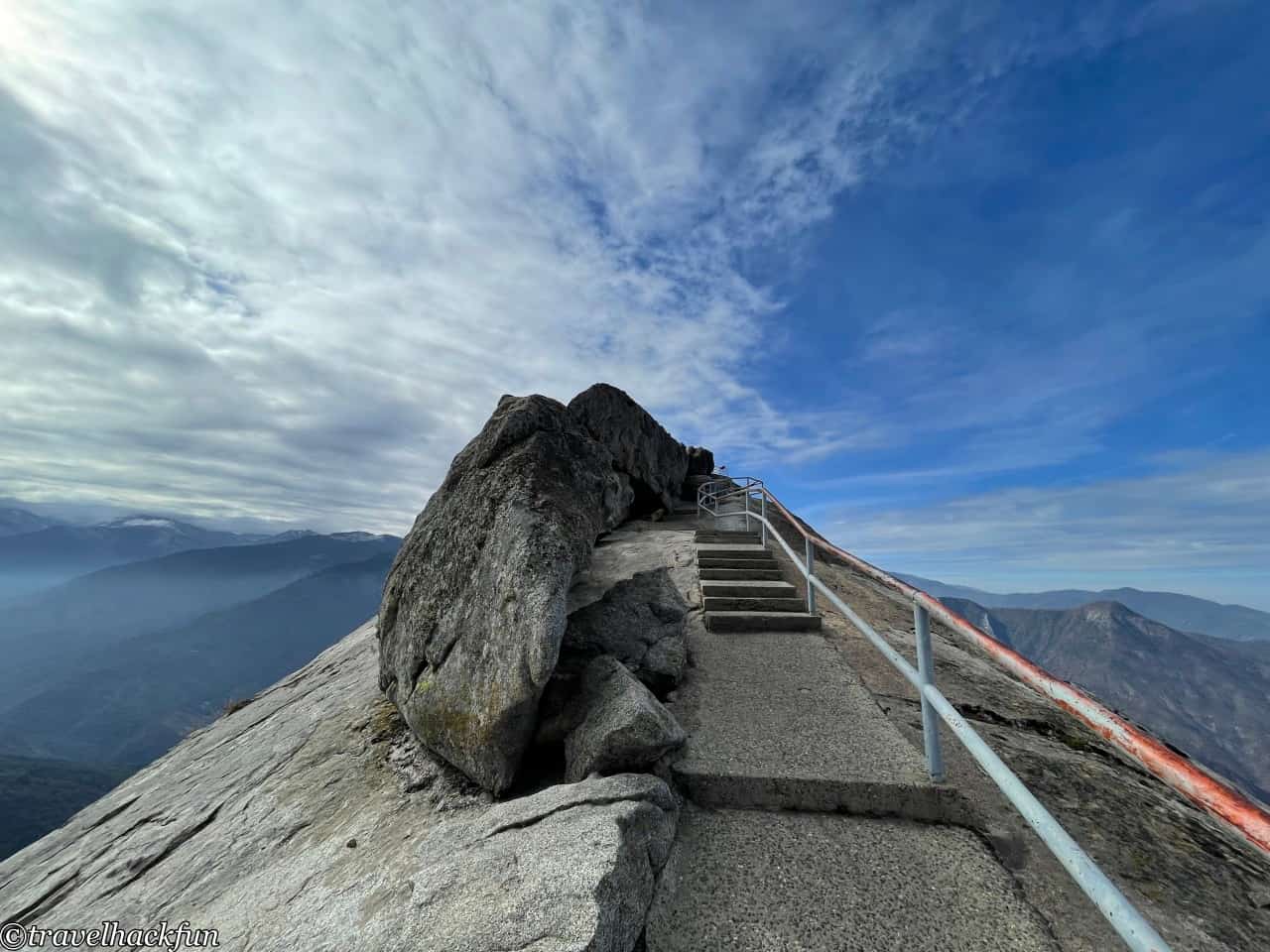
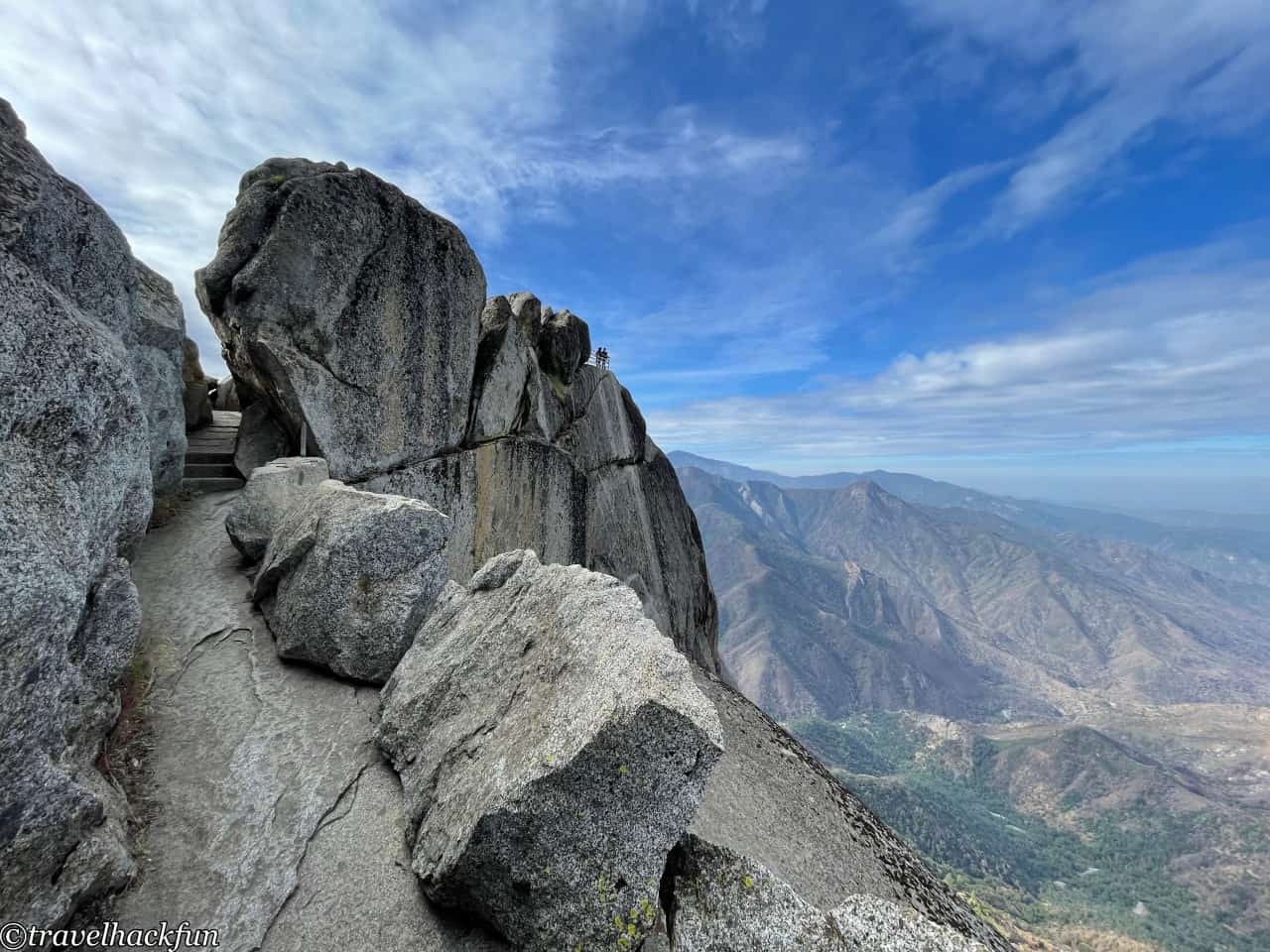

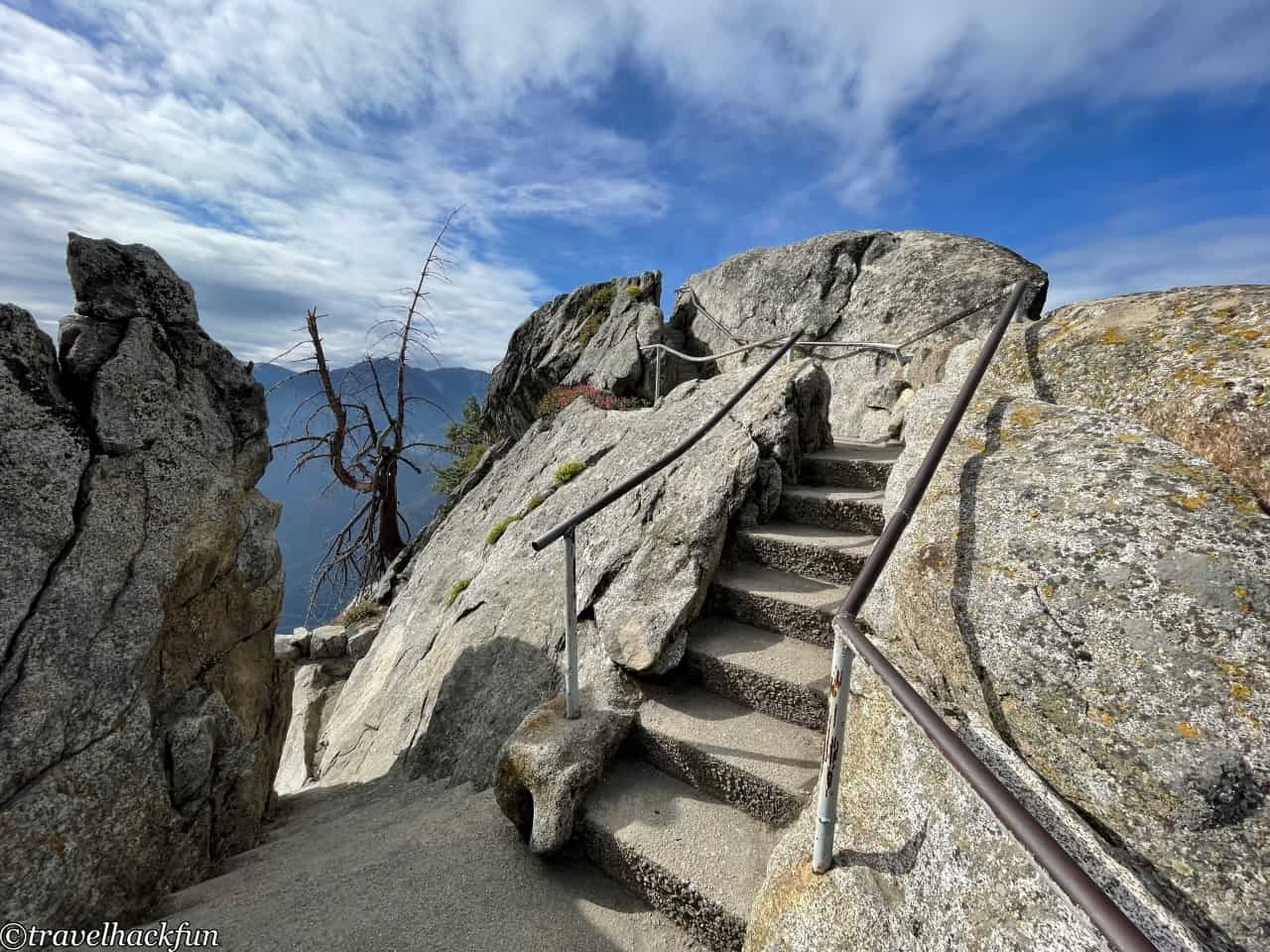

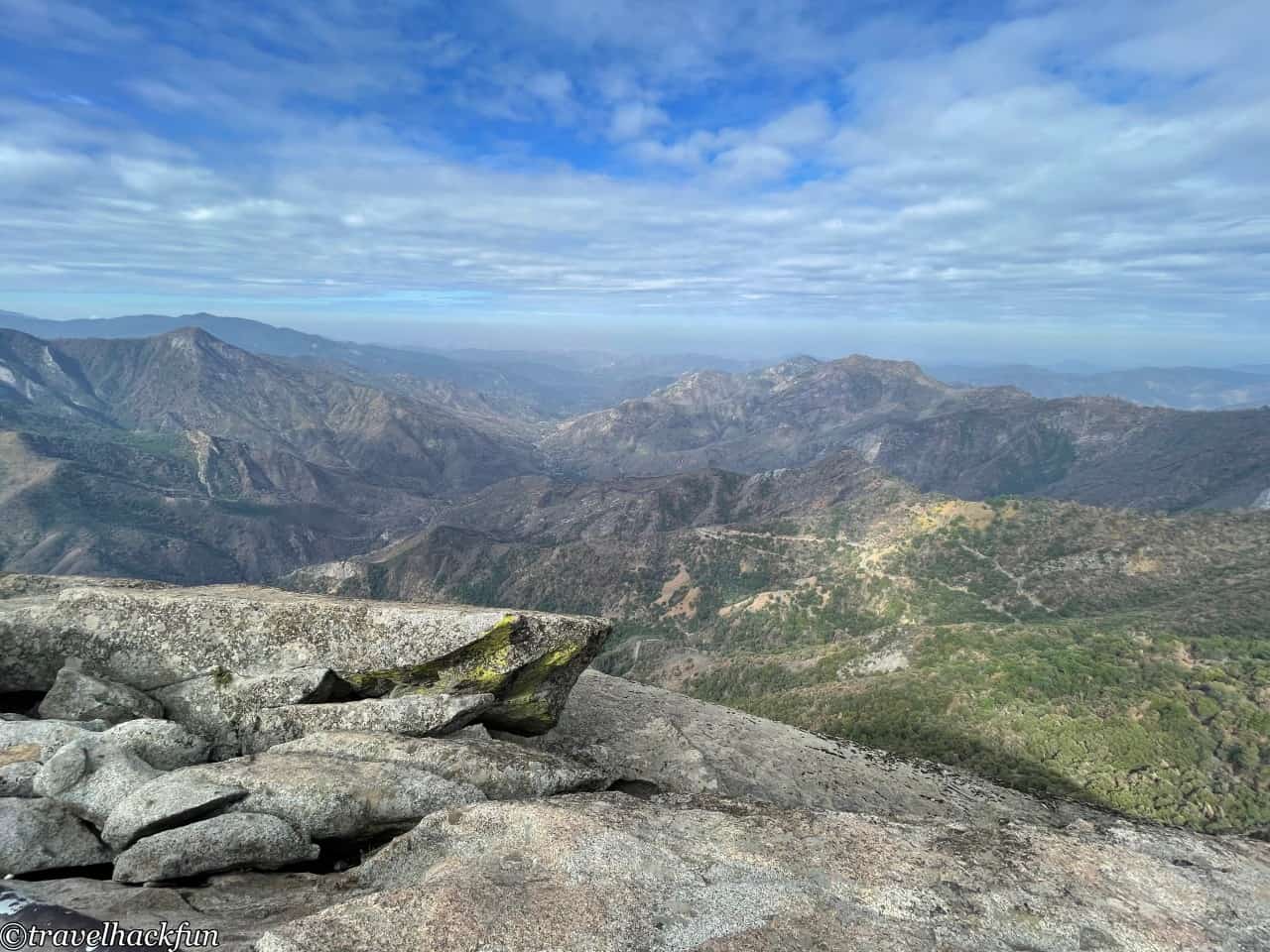
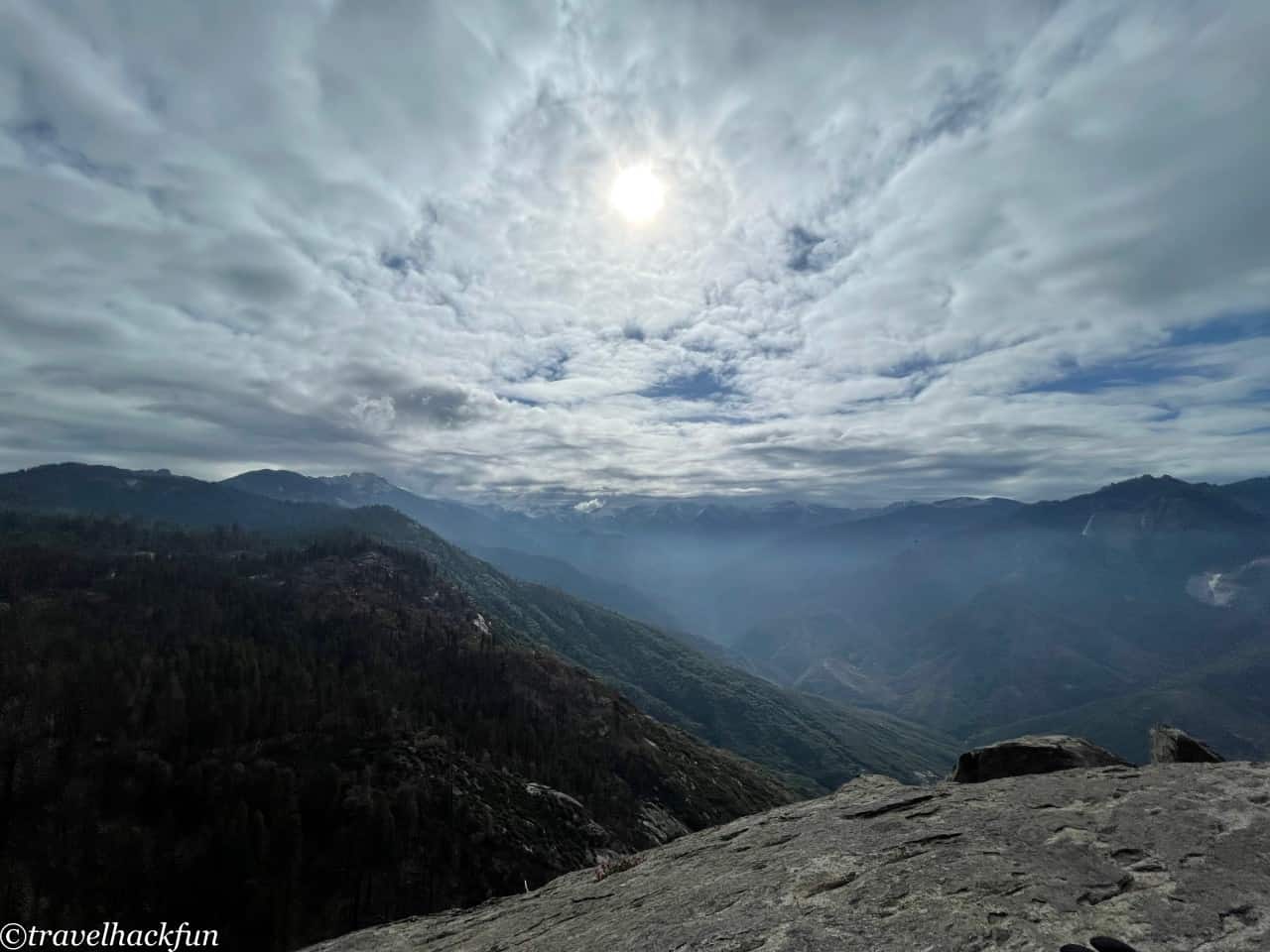

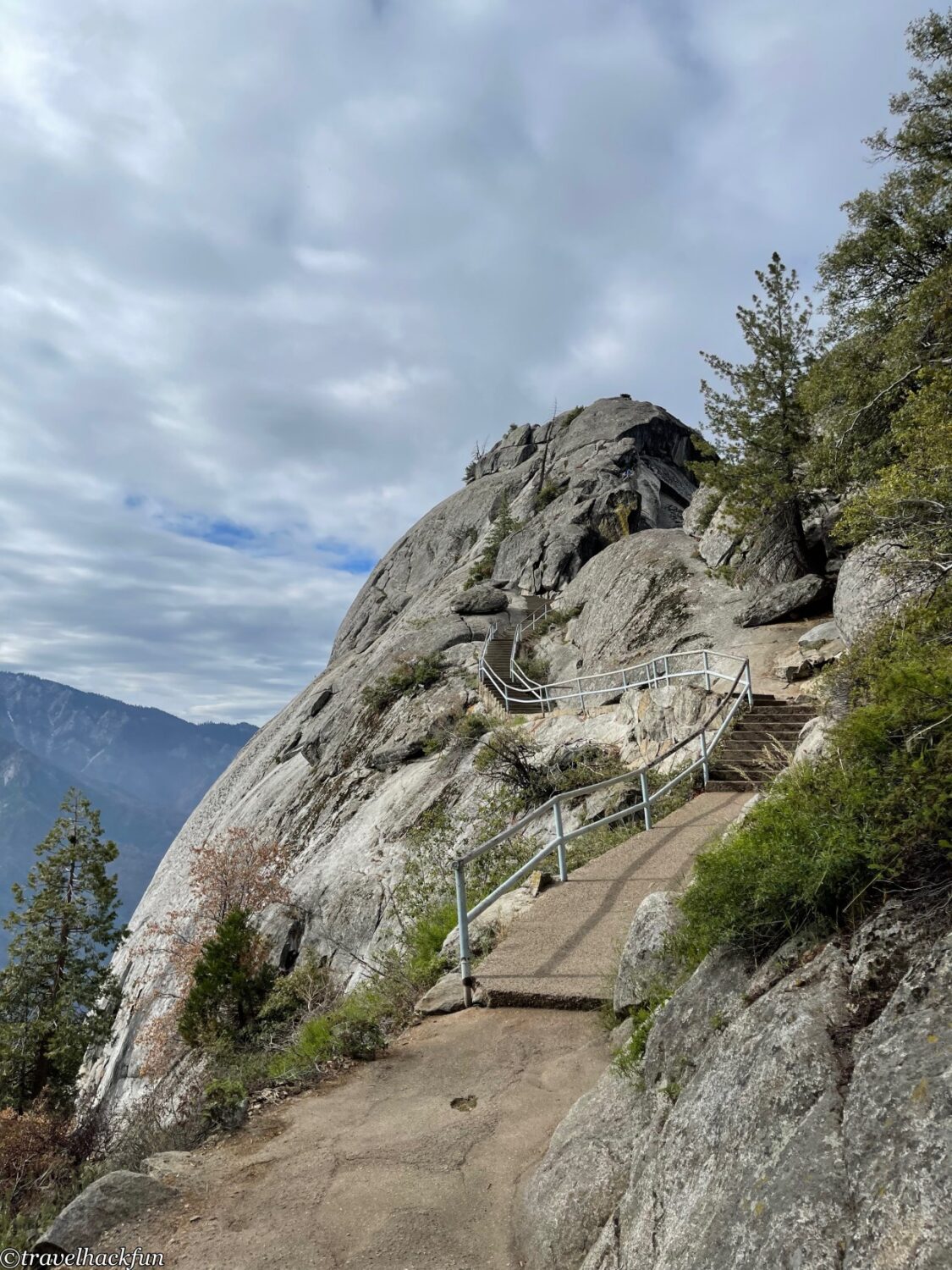
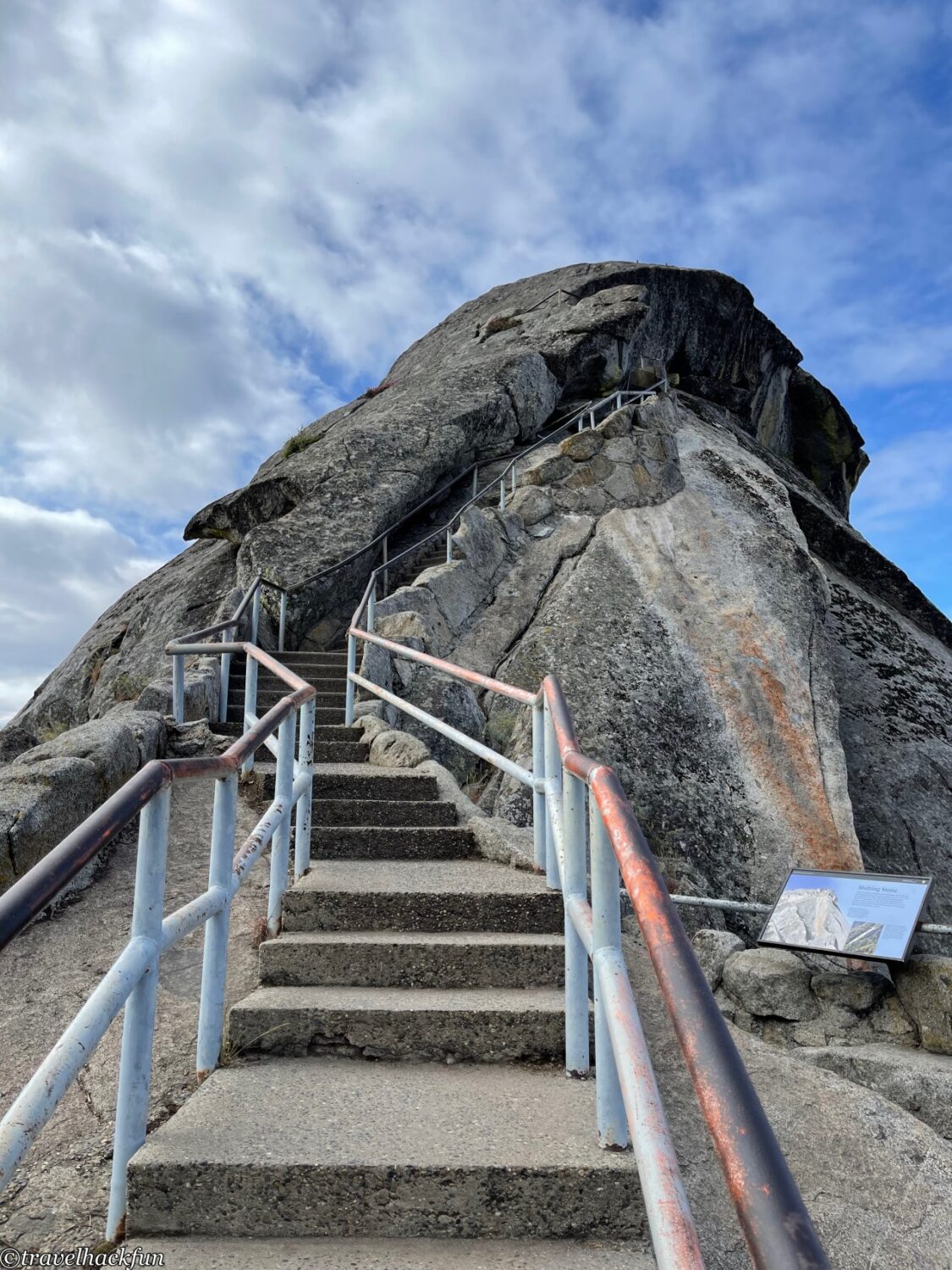
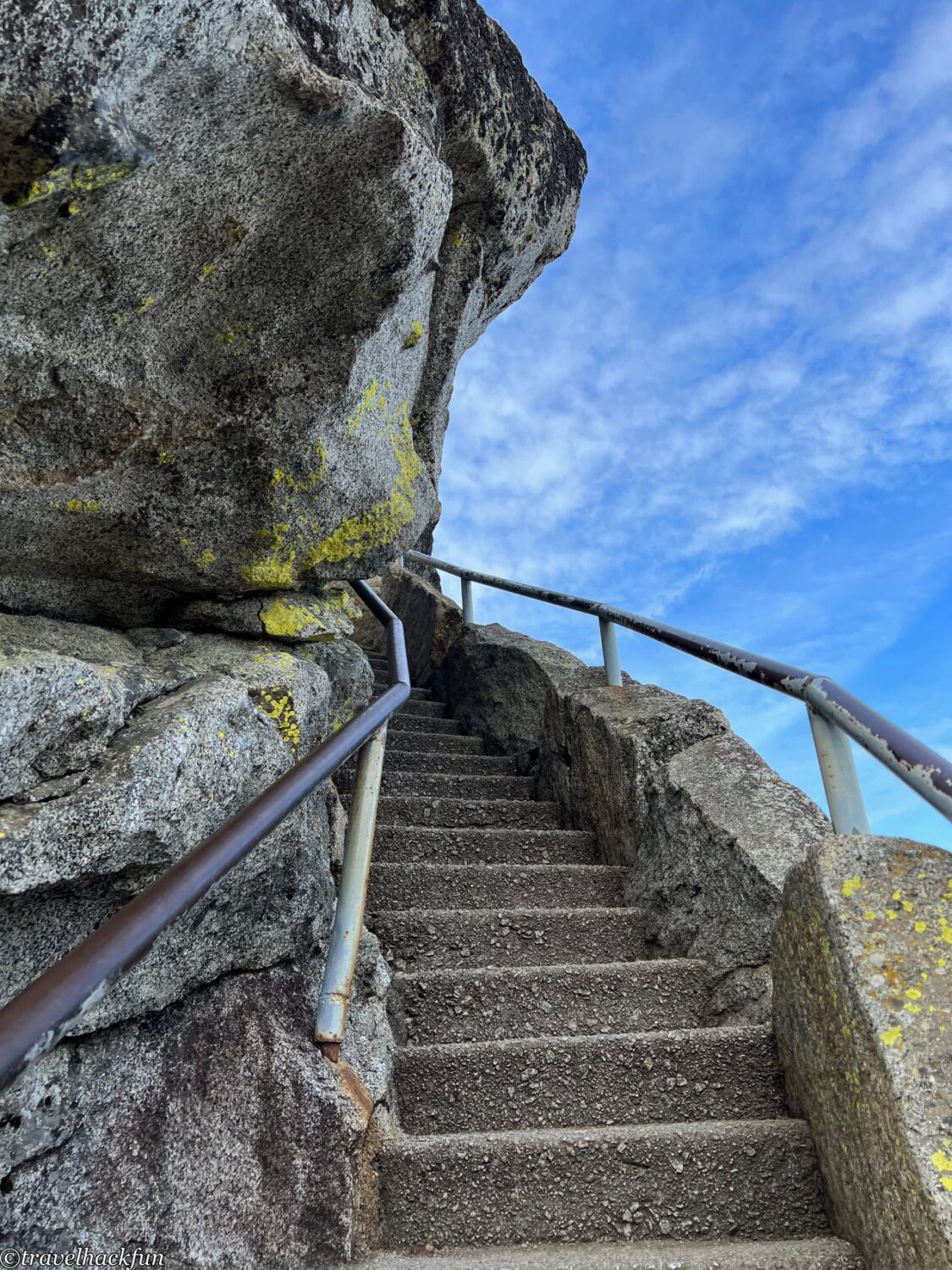


Must-see | Tunnel Log
Tunnel Log may be reached by the Gray Line or by car. Tunnel Log was just an ordinary tree that fell on the road in 1937. After that, the park authorities sawed a big hole in the trunk of the tree for passage, and it became a popular photo spot.
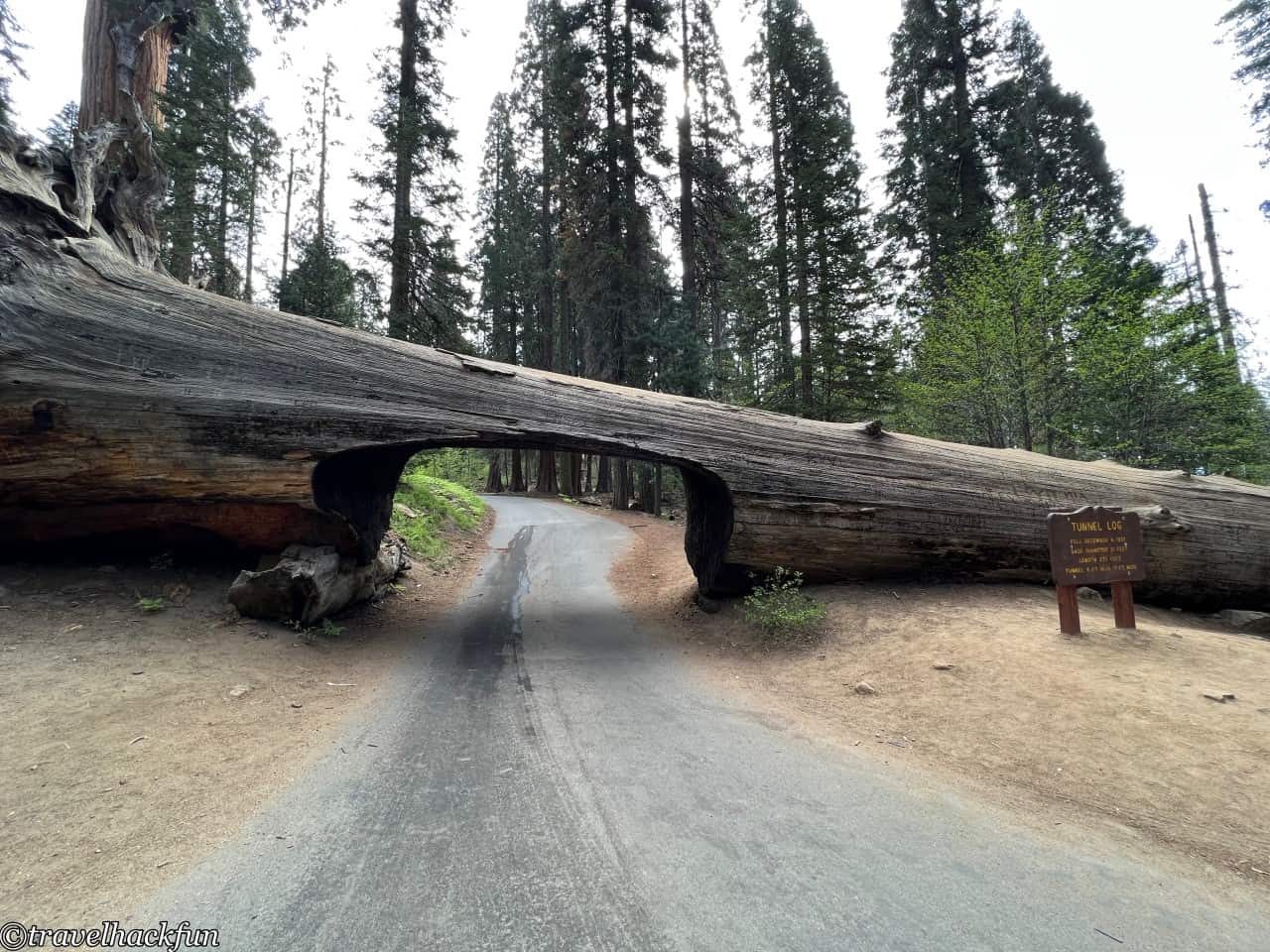
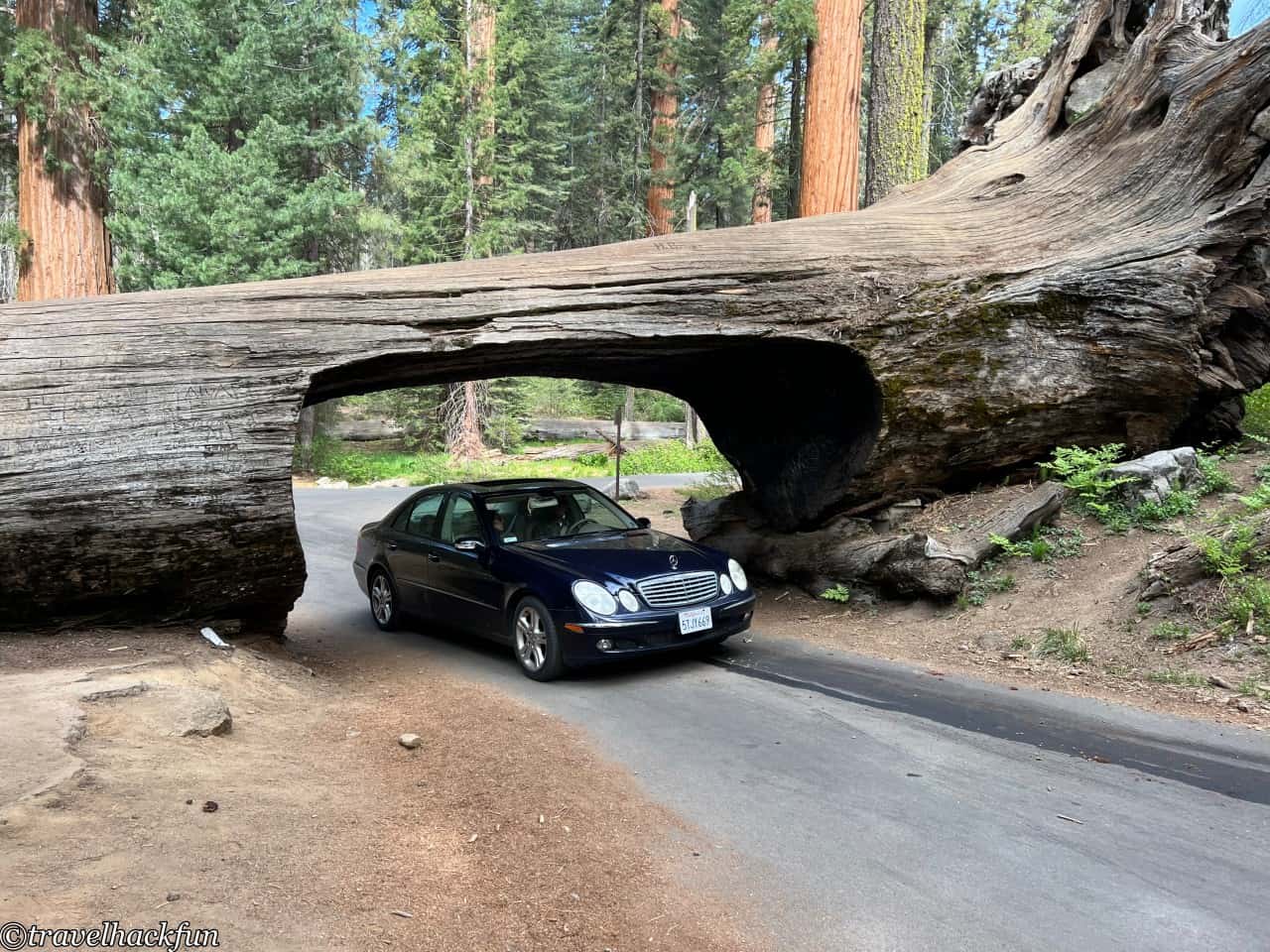
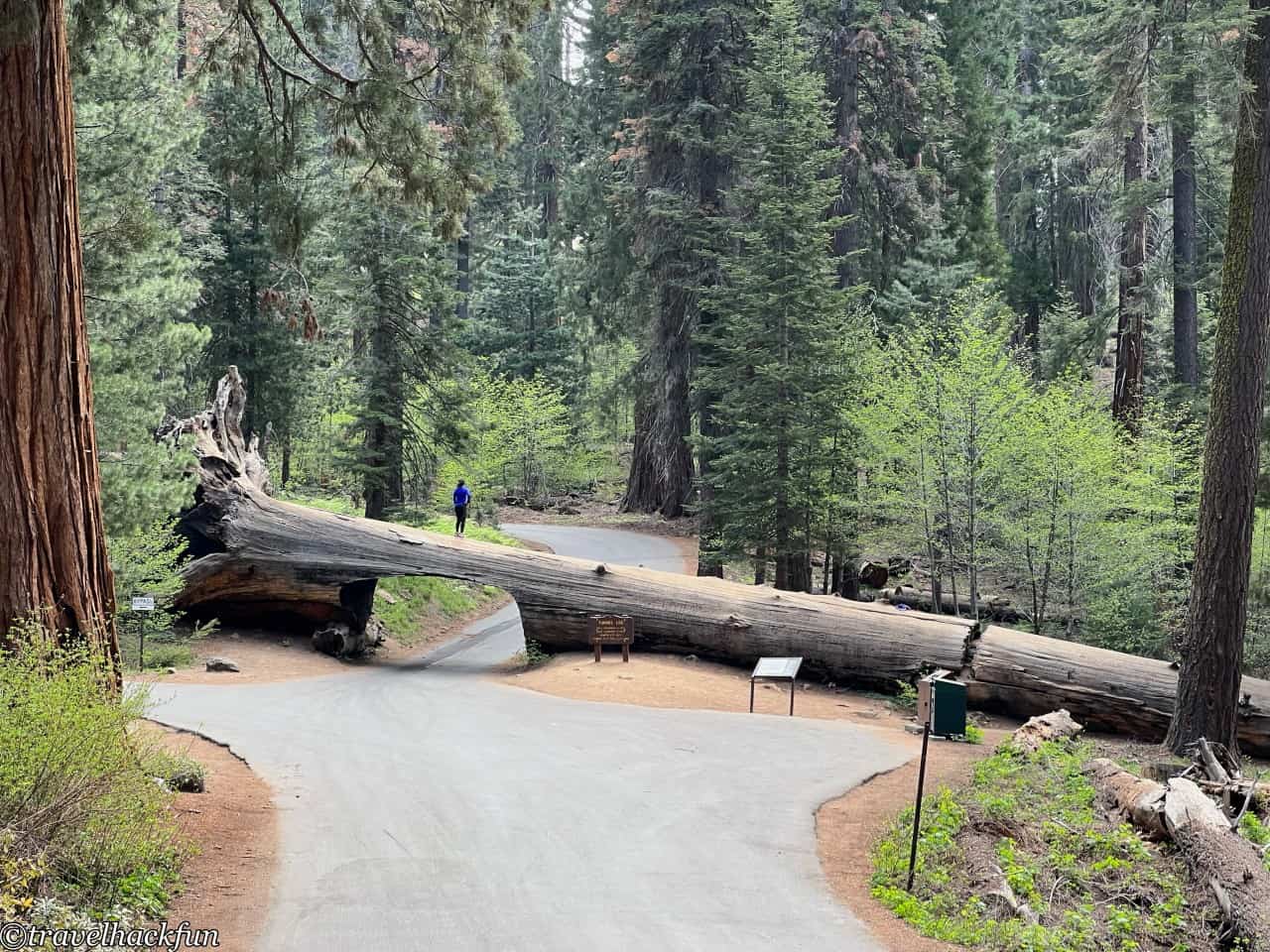
Crescent Meadow Area
There are many great trails around Crescent Meadow. For those who like hiking, the trails around this area are worth spending a little more time on. There are fewer tourists than in other areas, so it's perfect for those who want to enjoy the forests at a leisurely pace. The trails around here are well organized. Some of the trails are a bit more difficult, bring your better hiking shoes and hiking poles.
Crescent Meadow Trail
One can walk 2 miles around the crescent meadow here. It's easy to spot bears walking leisurely in the meadow, especially at dusk. Once we encountered a curious bear that was blocking the trail, and we got stuck for a long time, which was quite nerve-wracking. If you come here to have a picnic, be careful. It is said that the bears here already recognized the supermarket shopping bags, portable refrigerators for drinks and food, and other human food containers.
There is a famous tree called Chimney Tree, which has a hole at the bottom and the top is hollow, looking just a Chimney.

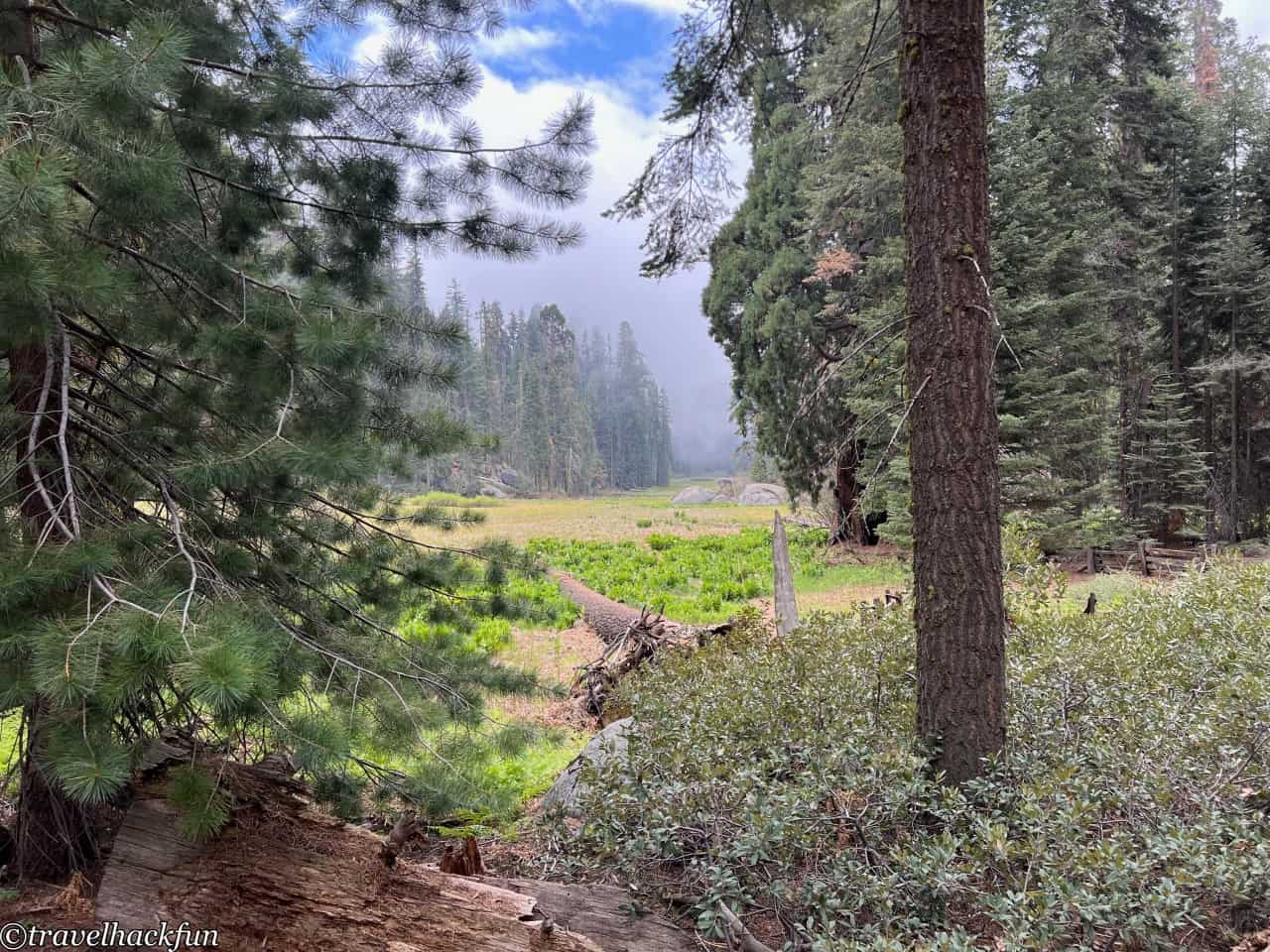
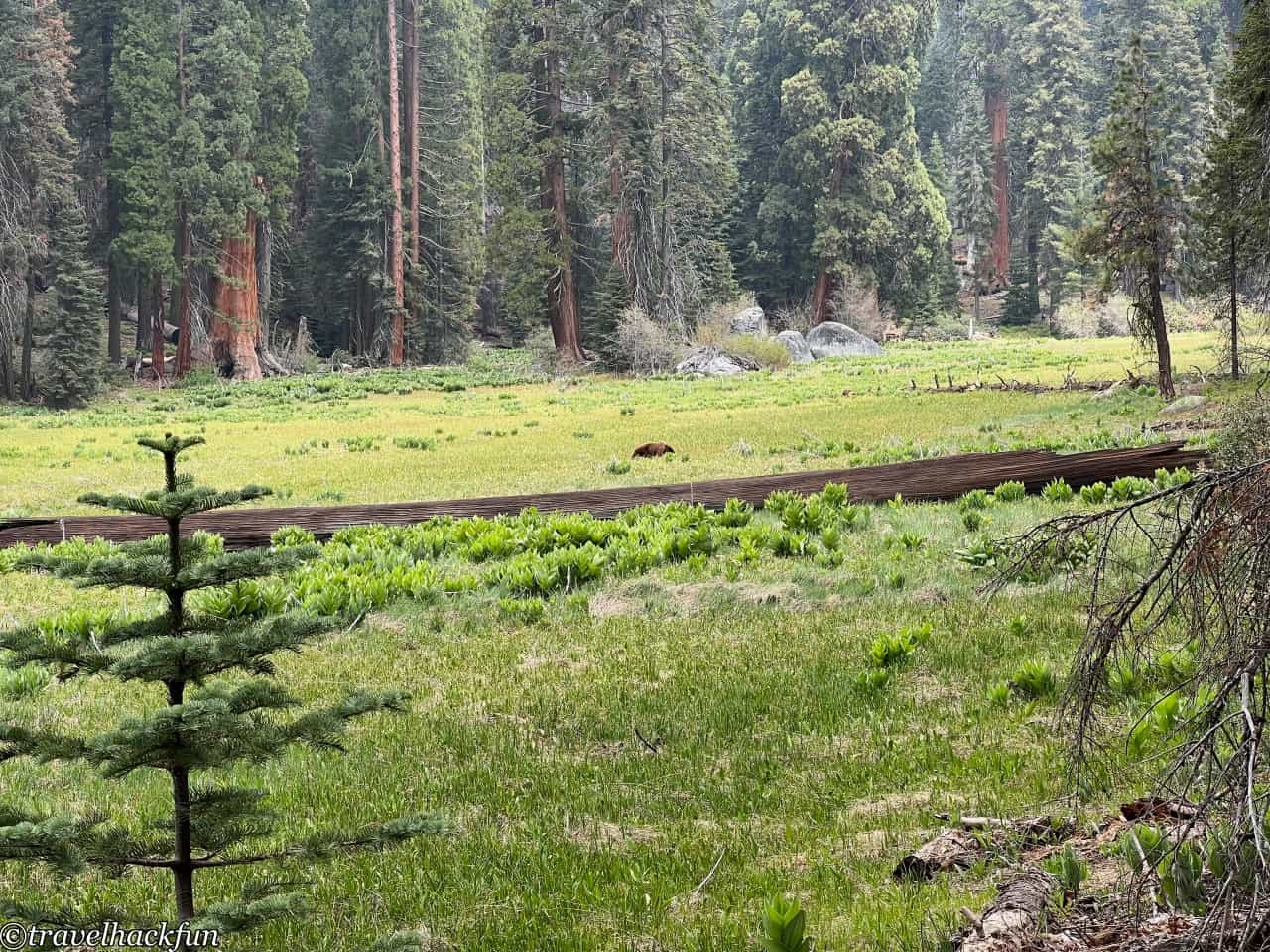
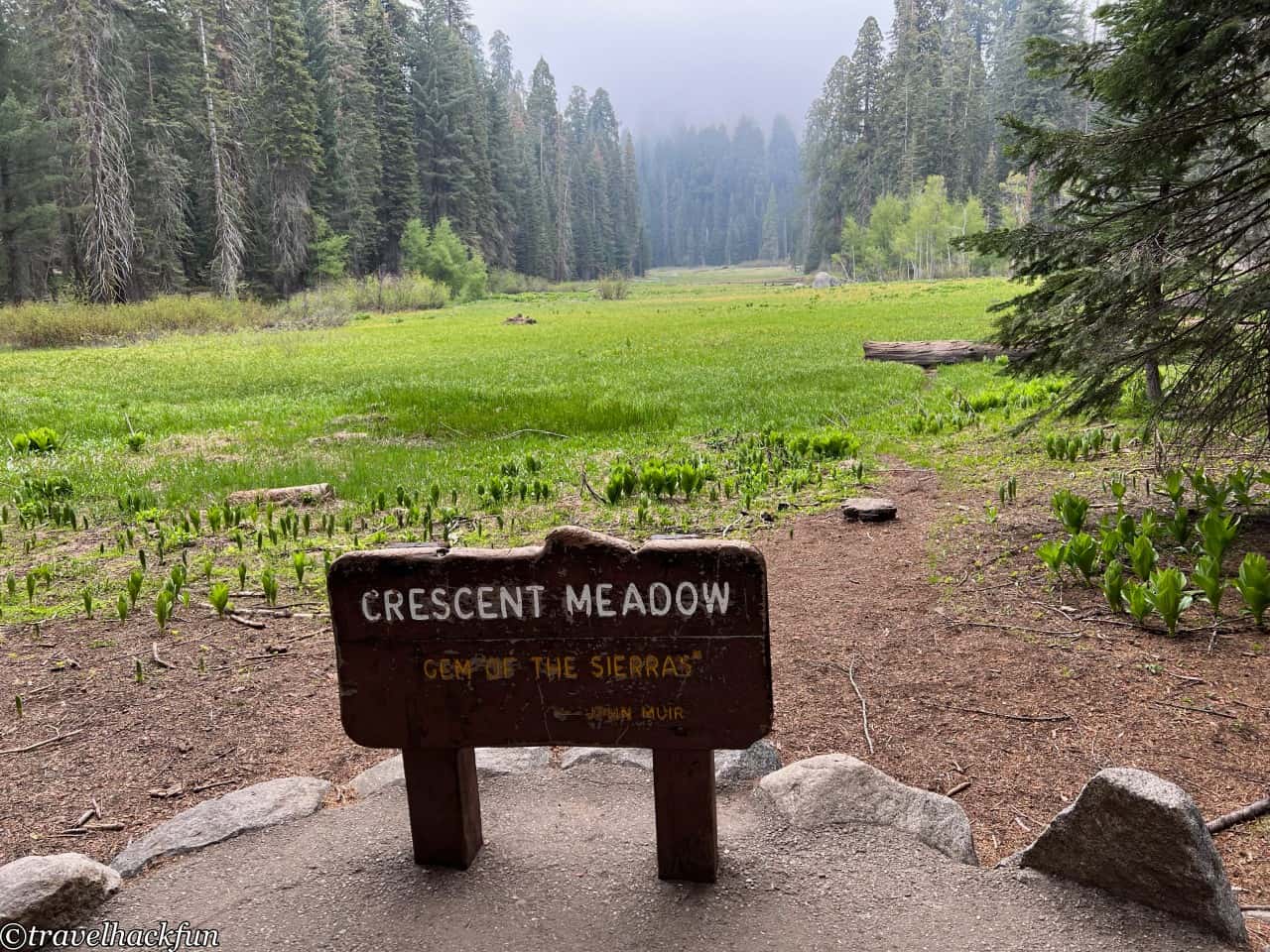
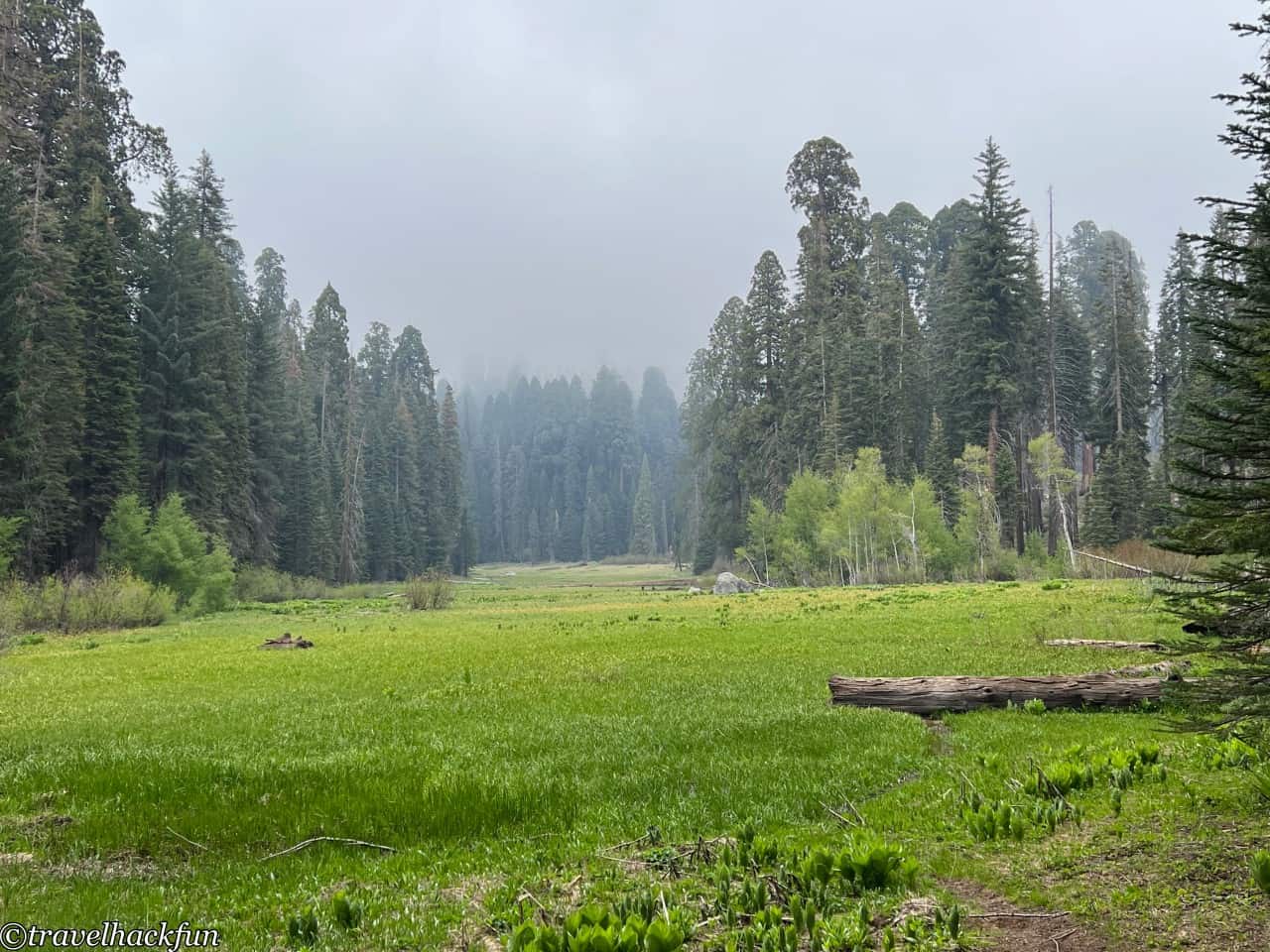
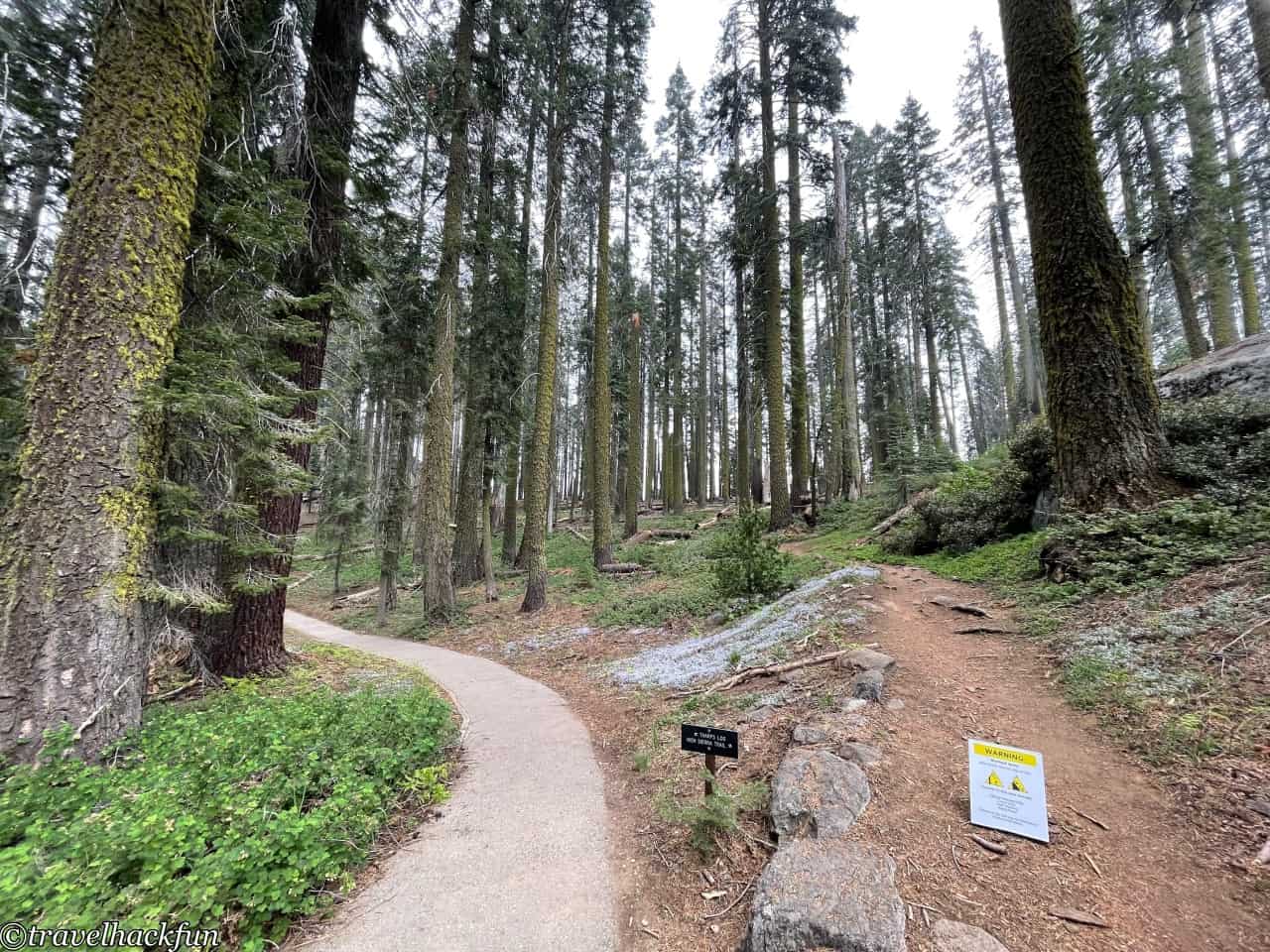
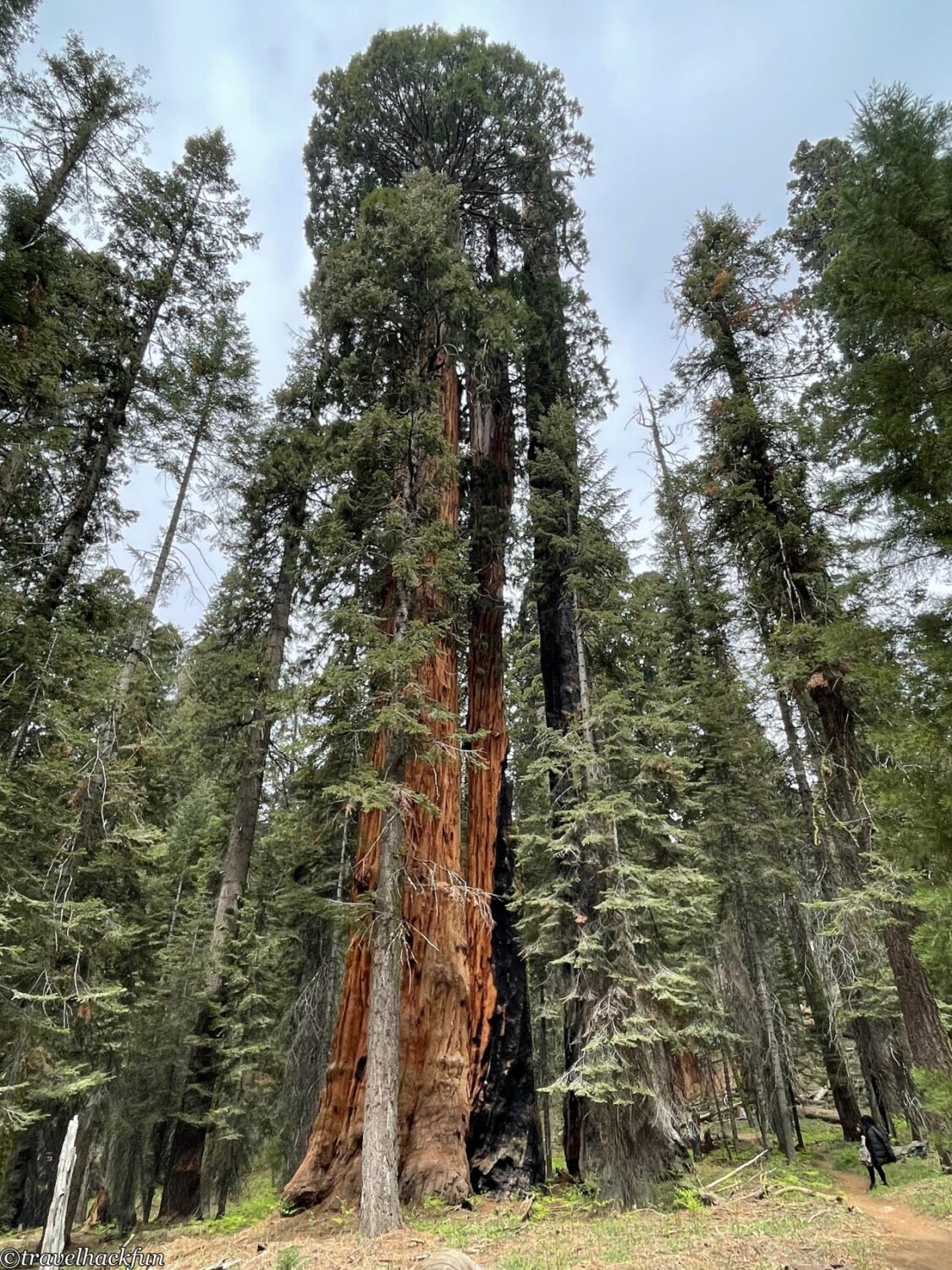
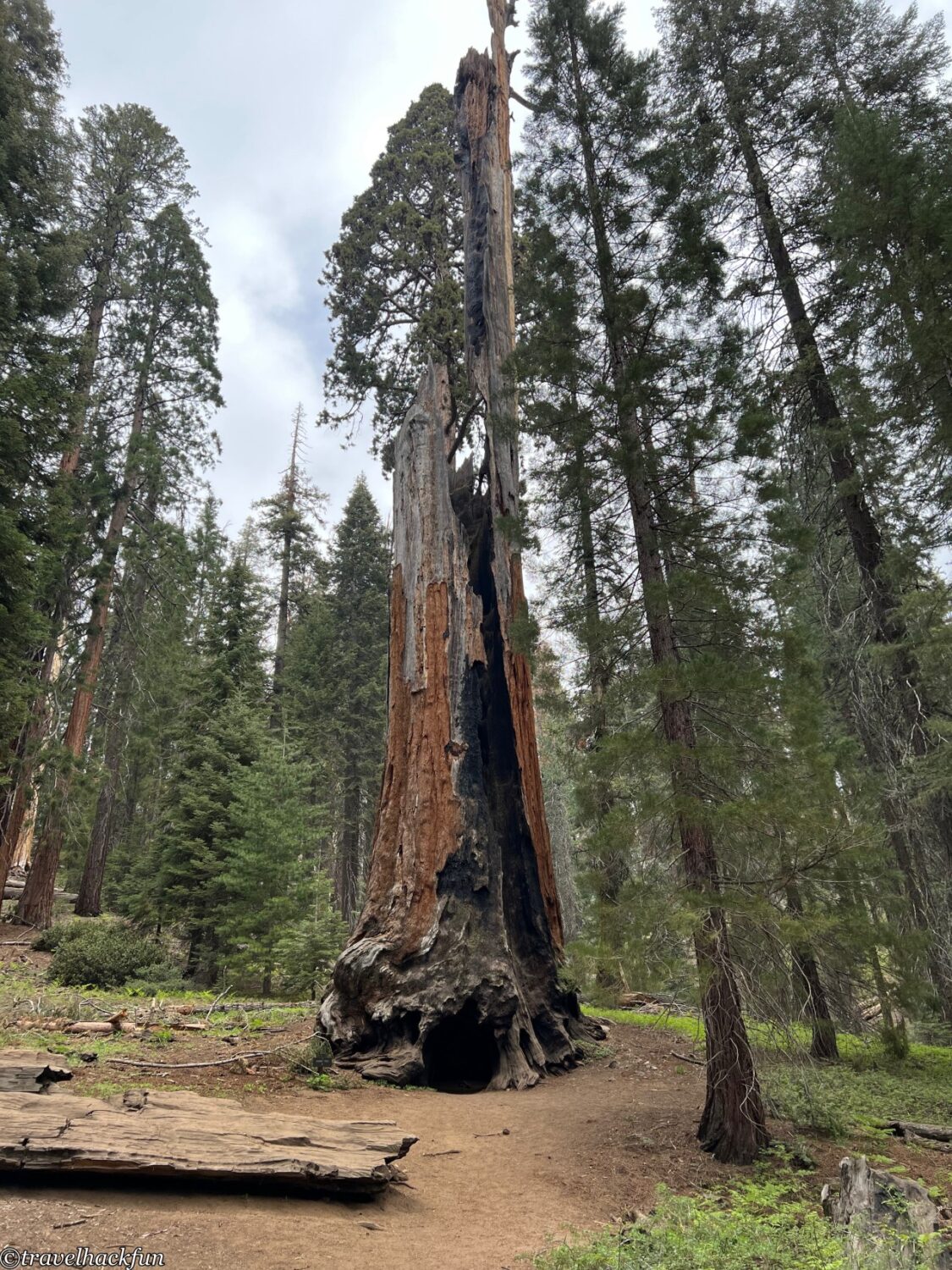
Tharp's Log
Tharp's Log is about 0.4 mile from Chimney Tree. It is a house made of a fallen tree. In the late 1800's a man named James Wilson Sanny found this huge fallen sequoia and hollowed it out as his house, where he lived for many years. His furniture and other items from that time remain inside the log cabin.
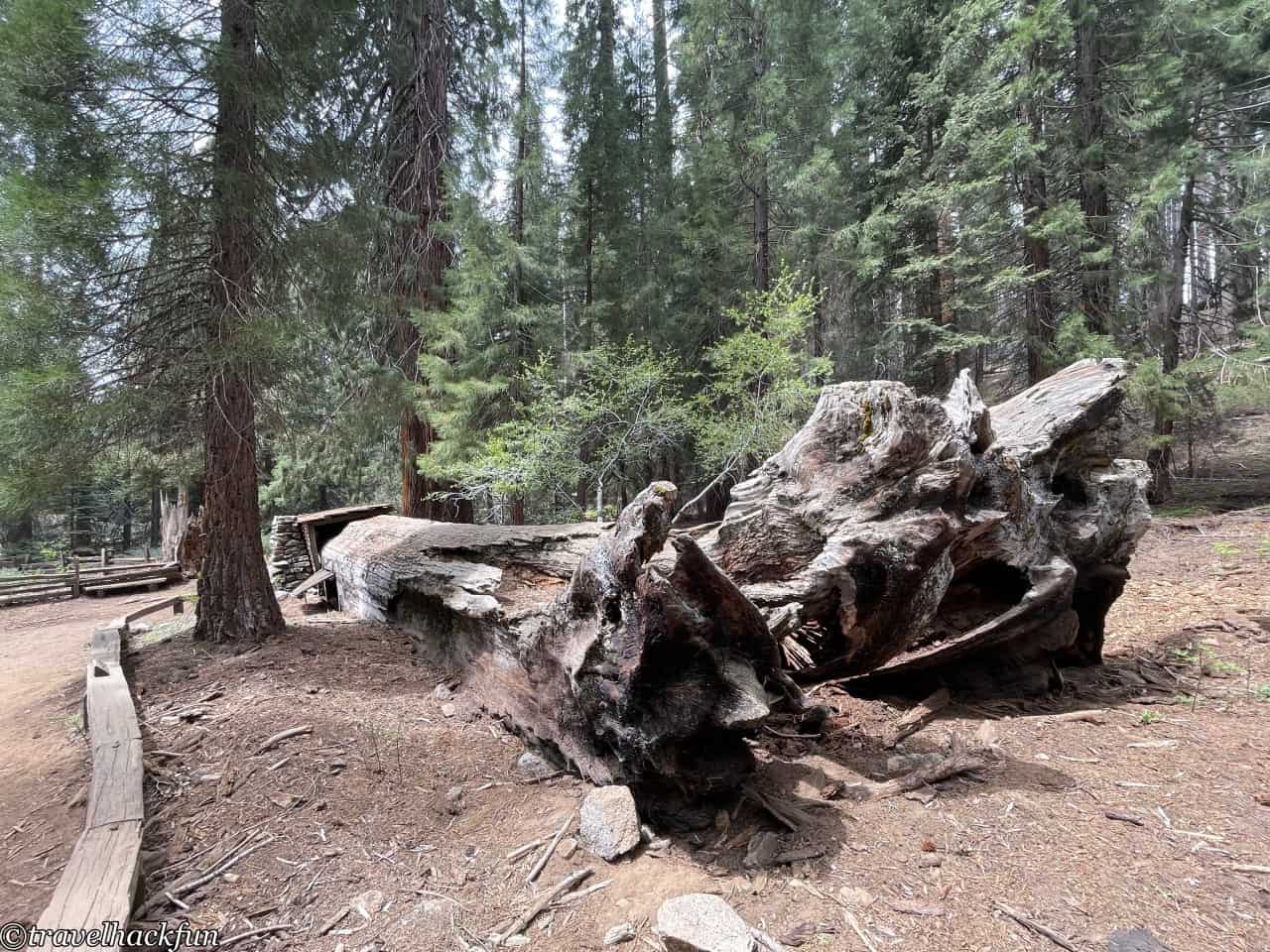
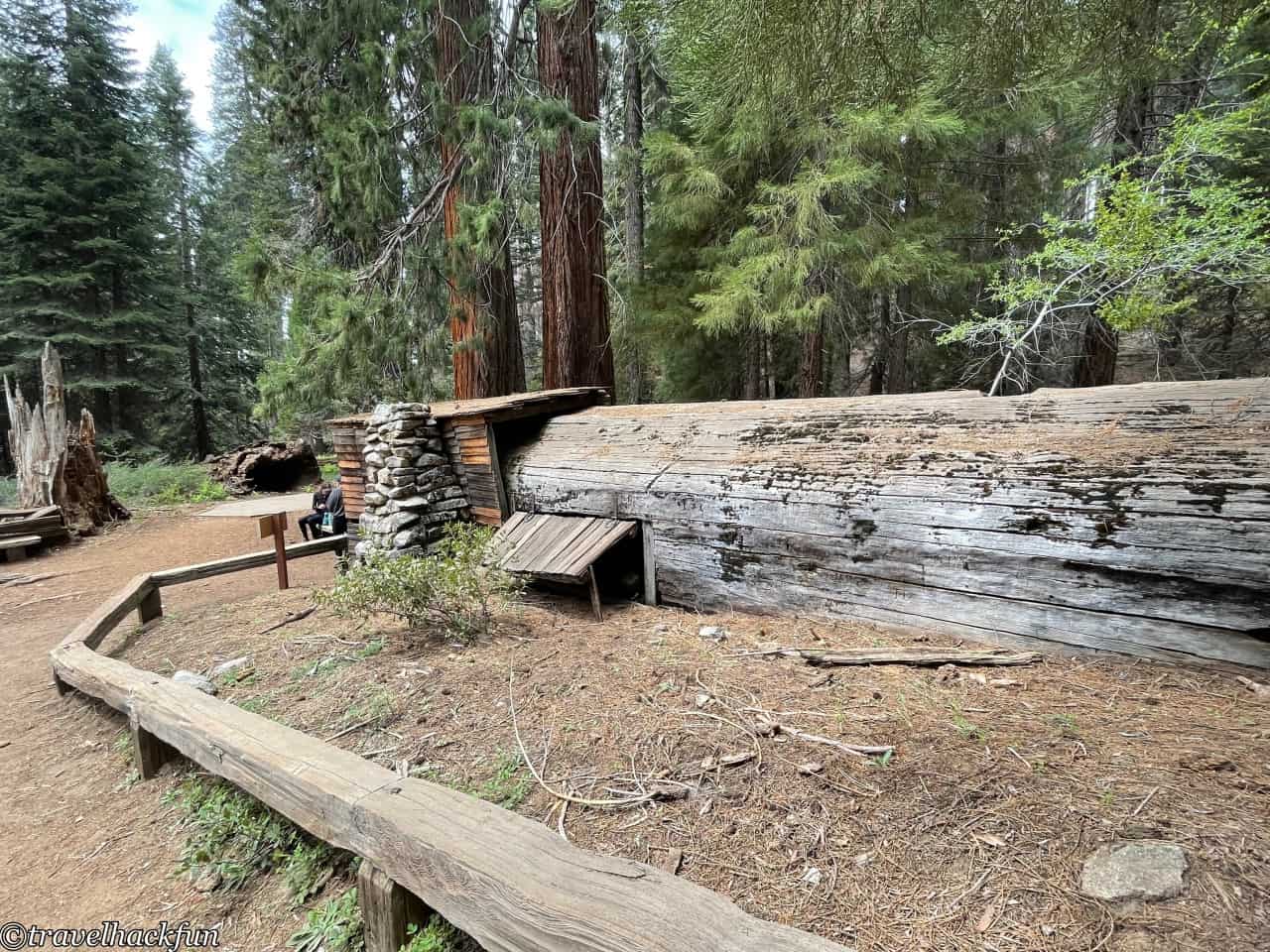
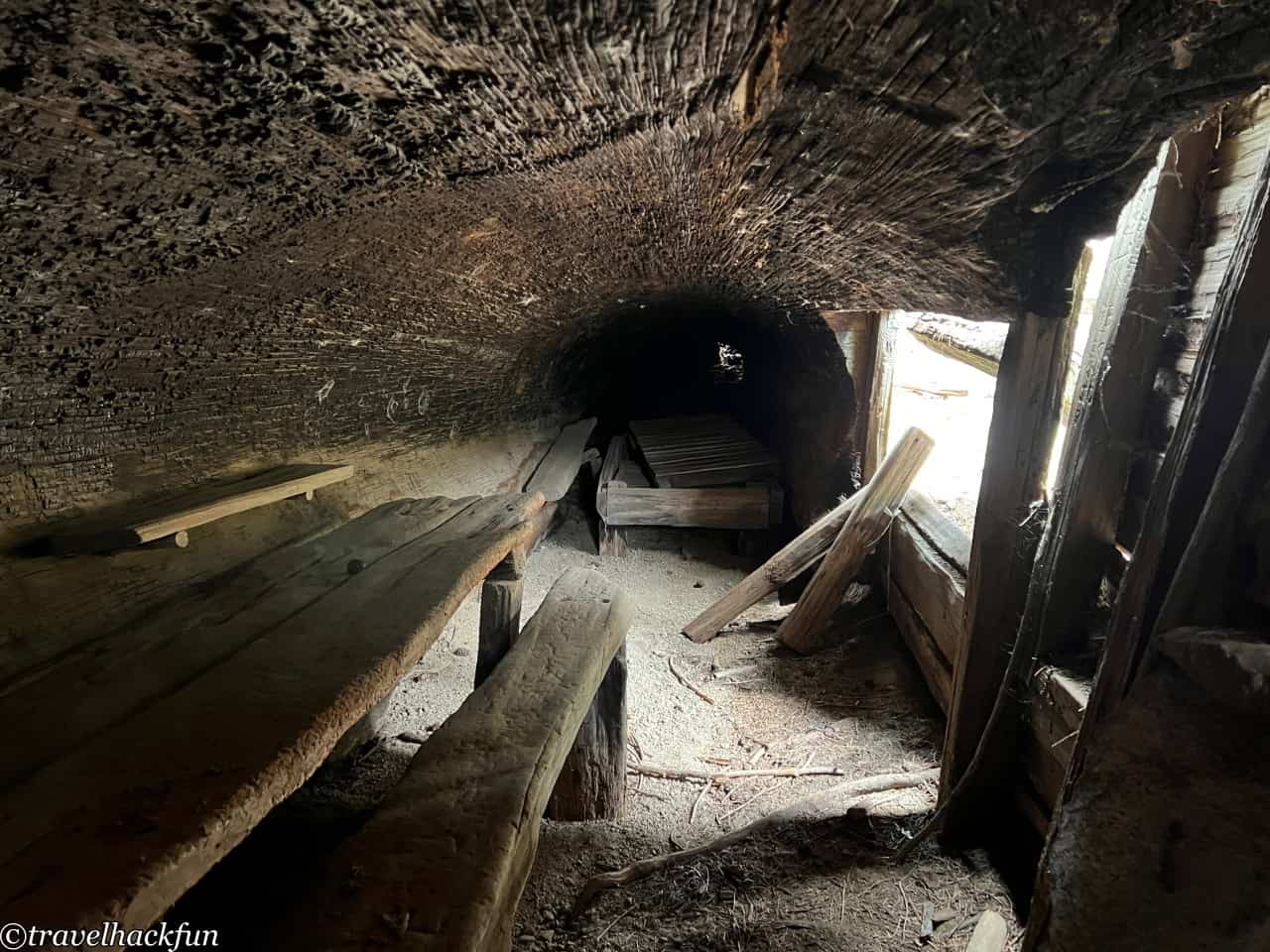
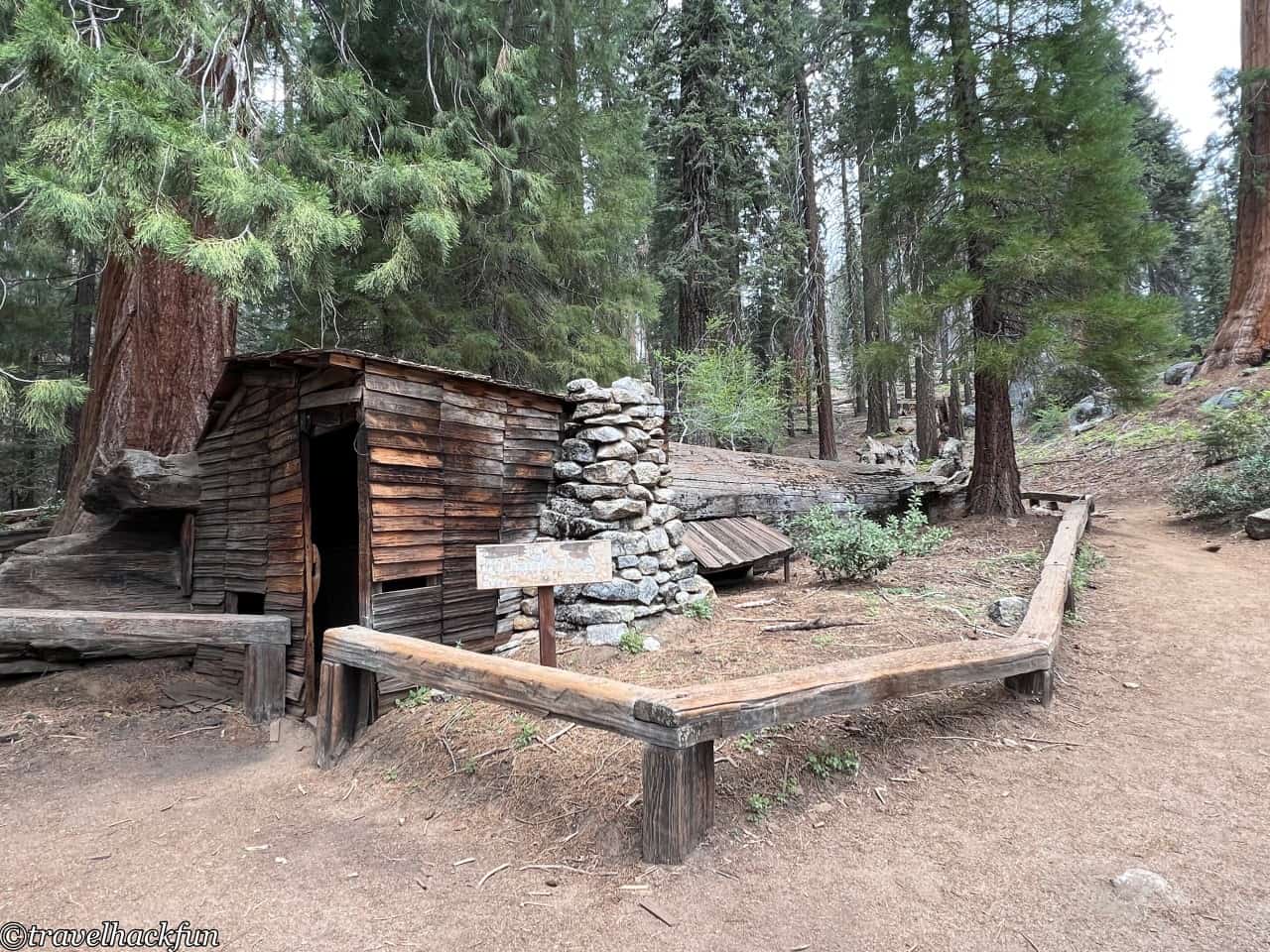
Log Meadow Loop Trail
Log Meadow is on the east side of Crescent Meadow, there are less people here. When the fog comes down, the meadow looks romantic. You can also take this trail to the High Sierra Trail.
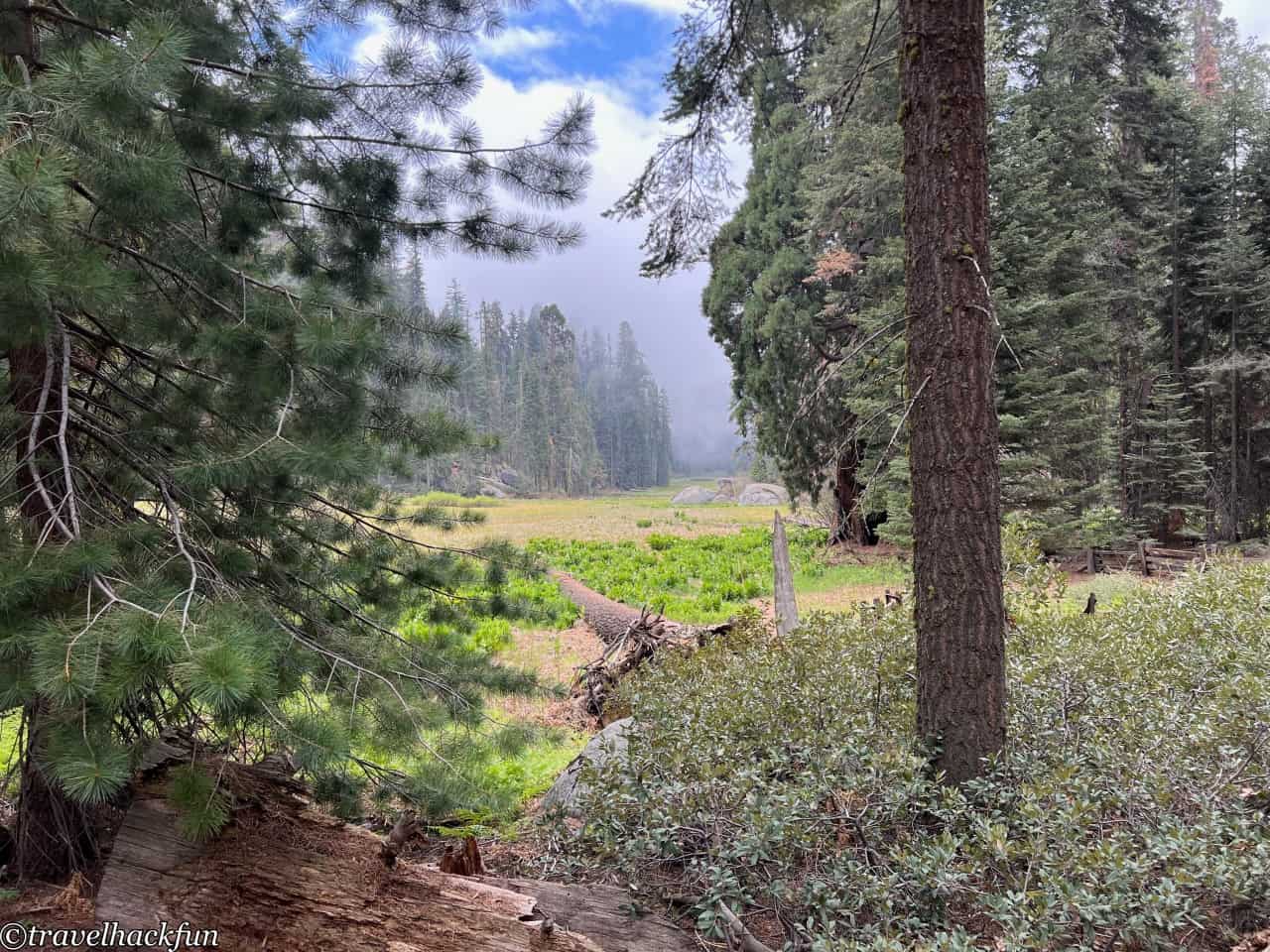
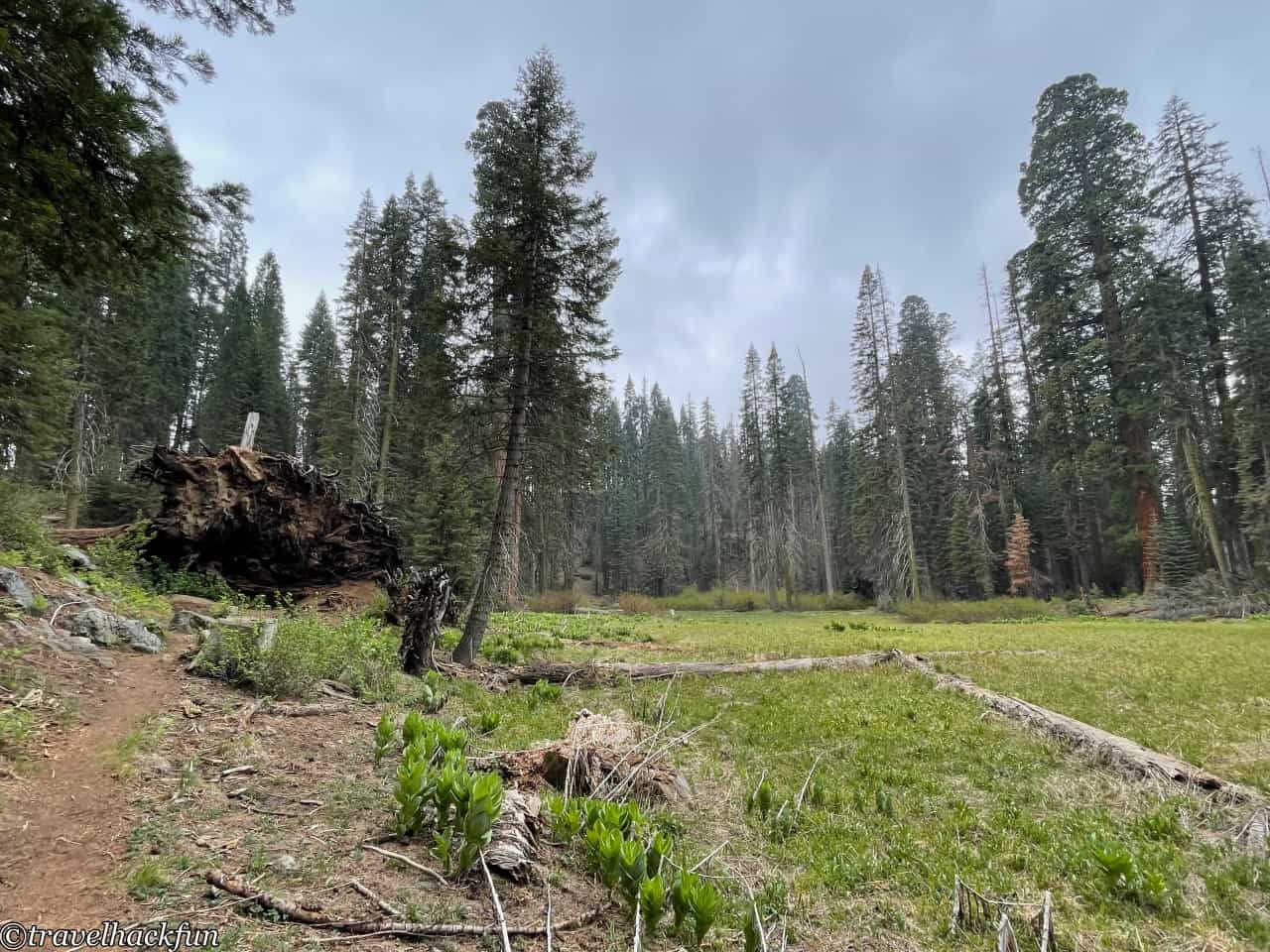
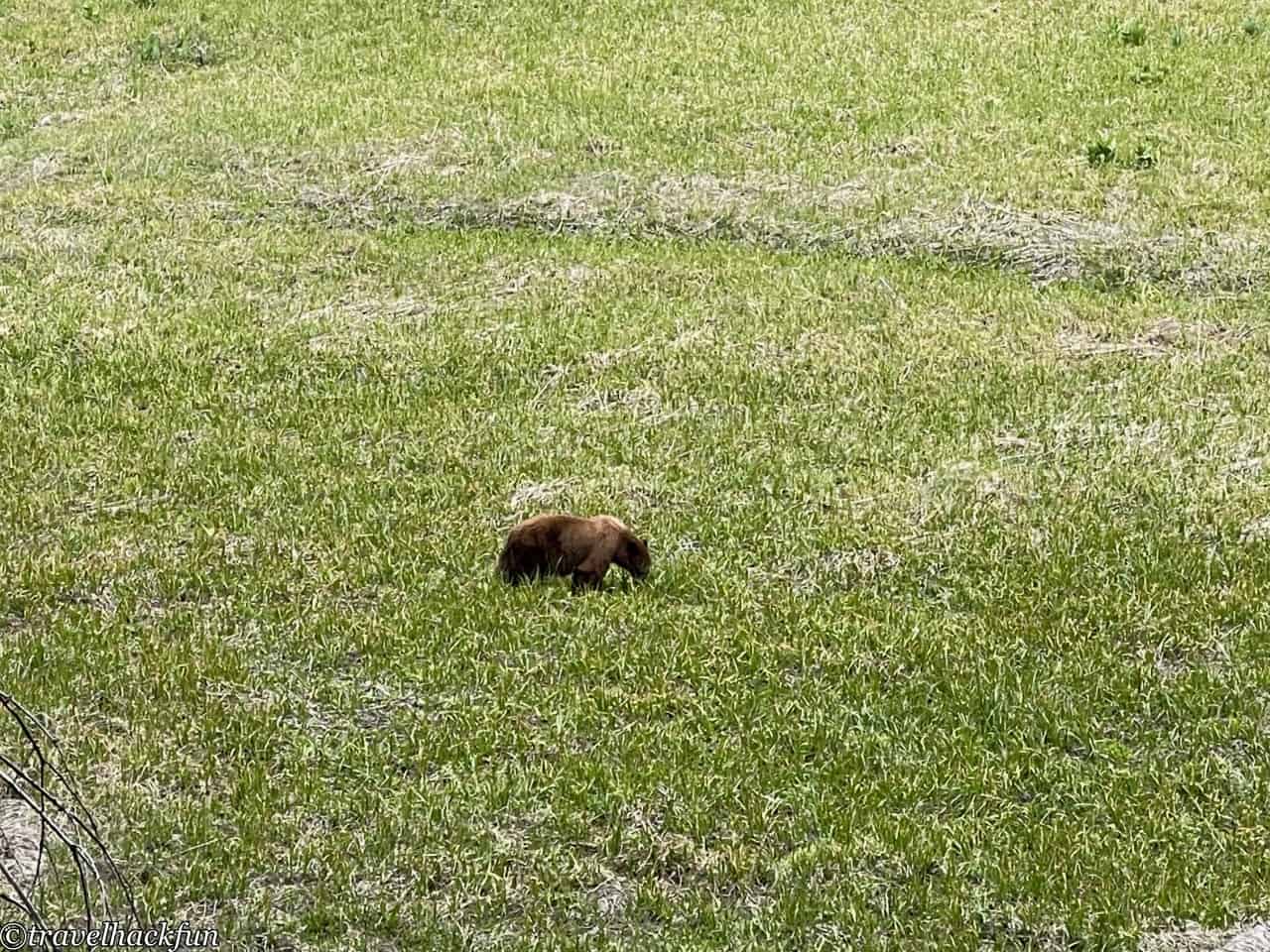
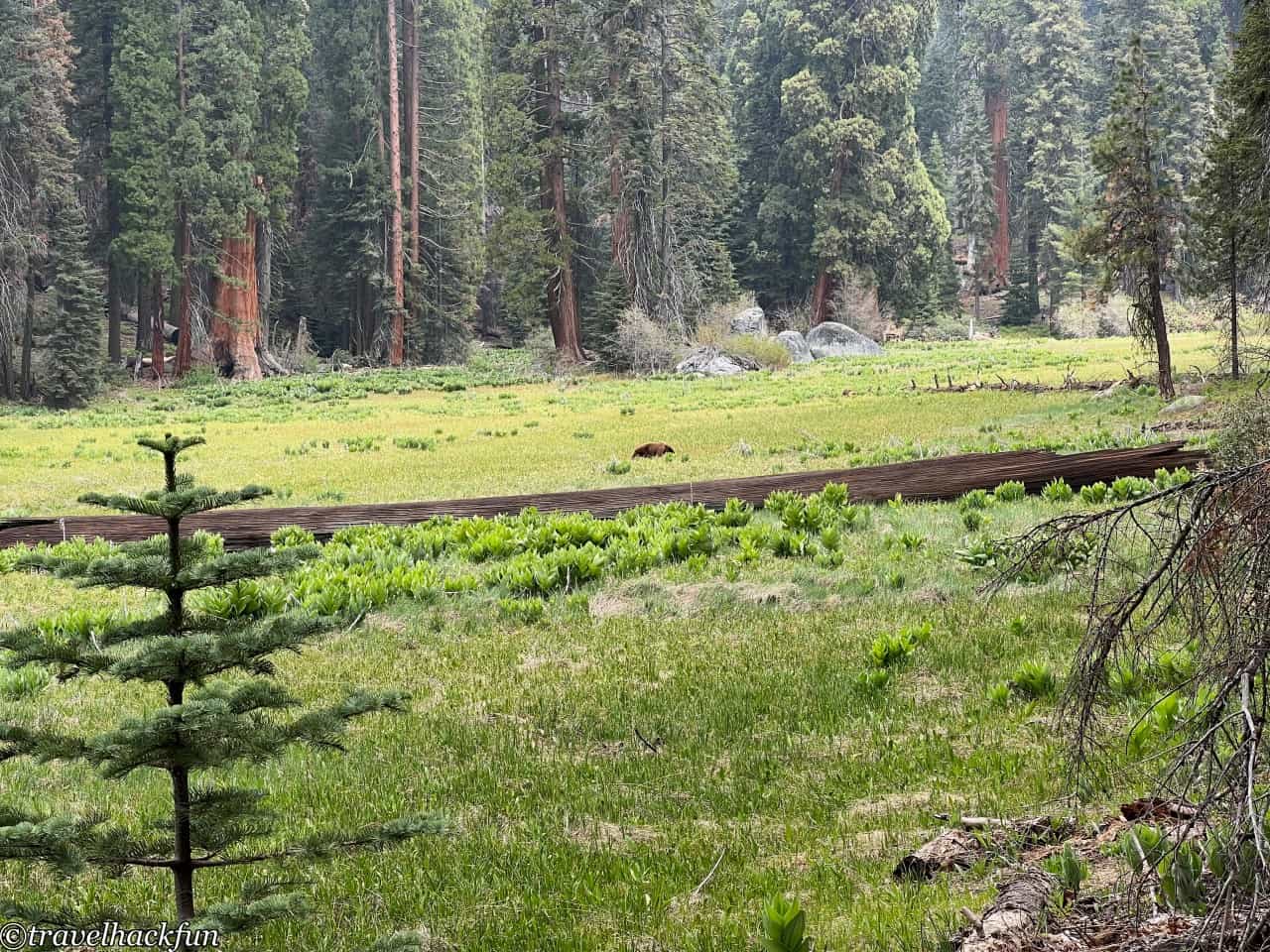
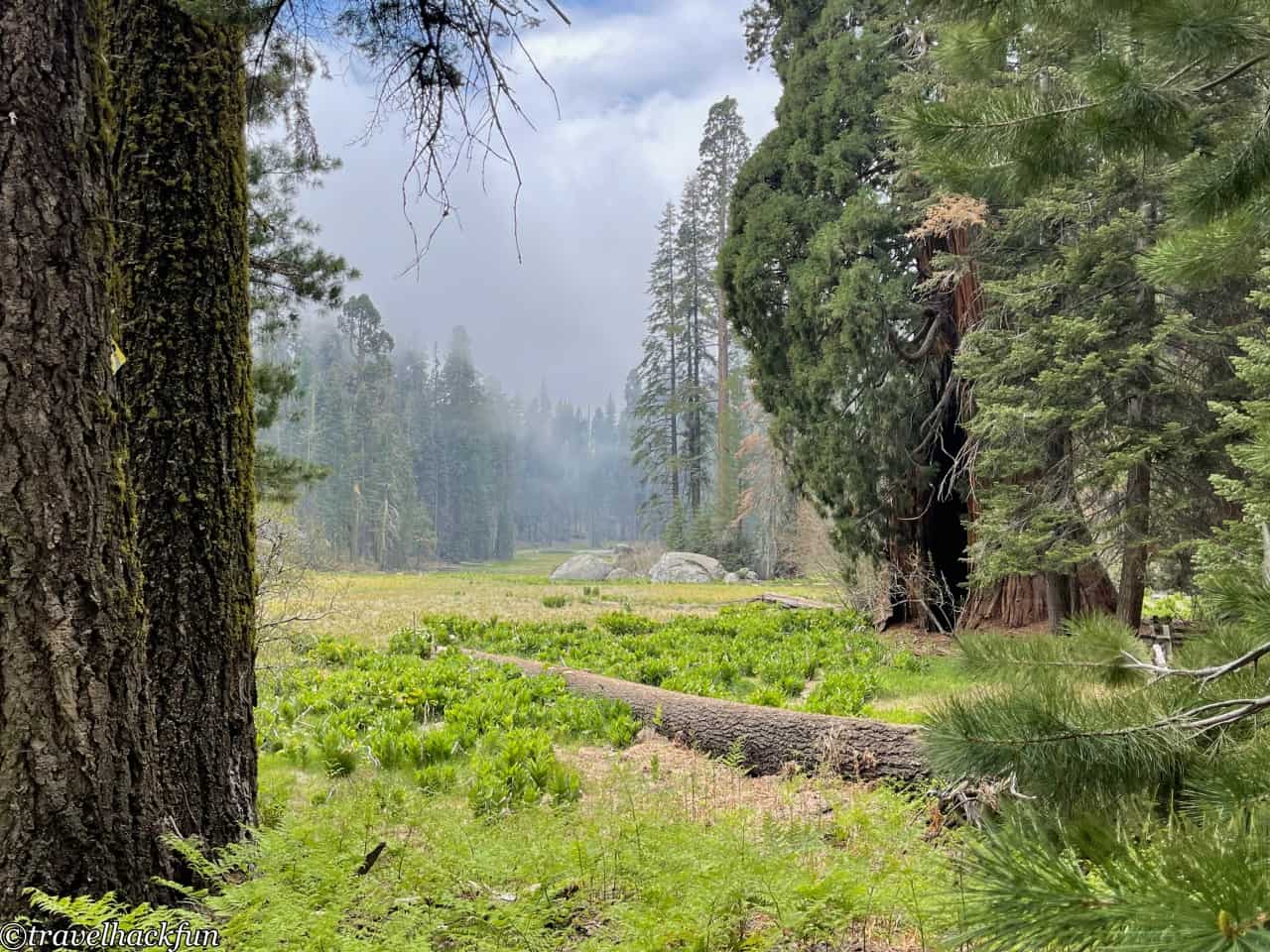
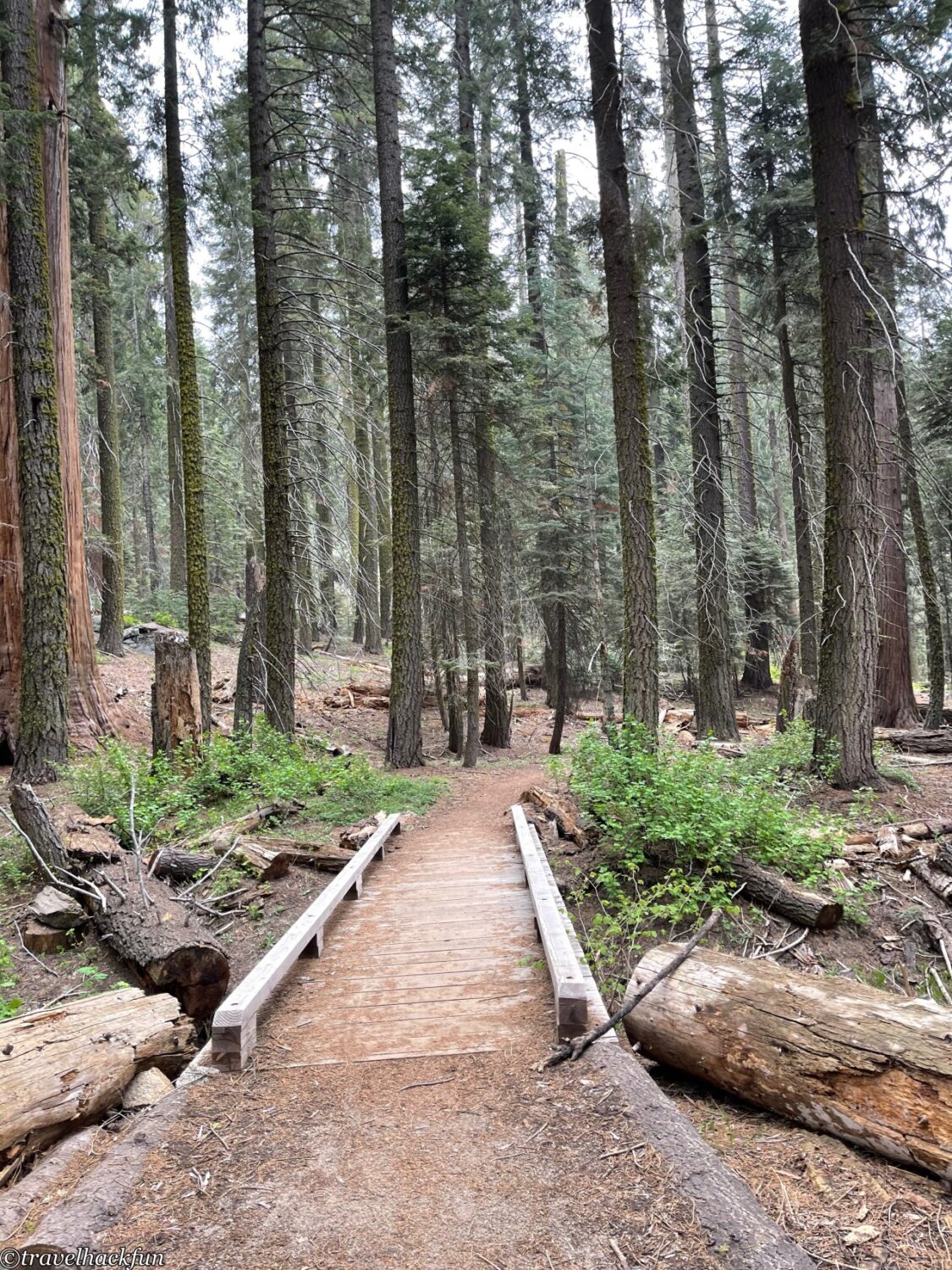
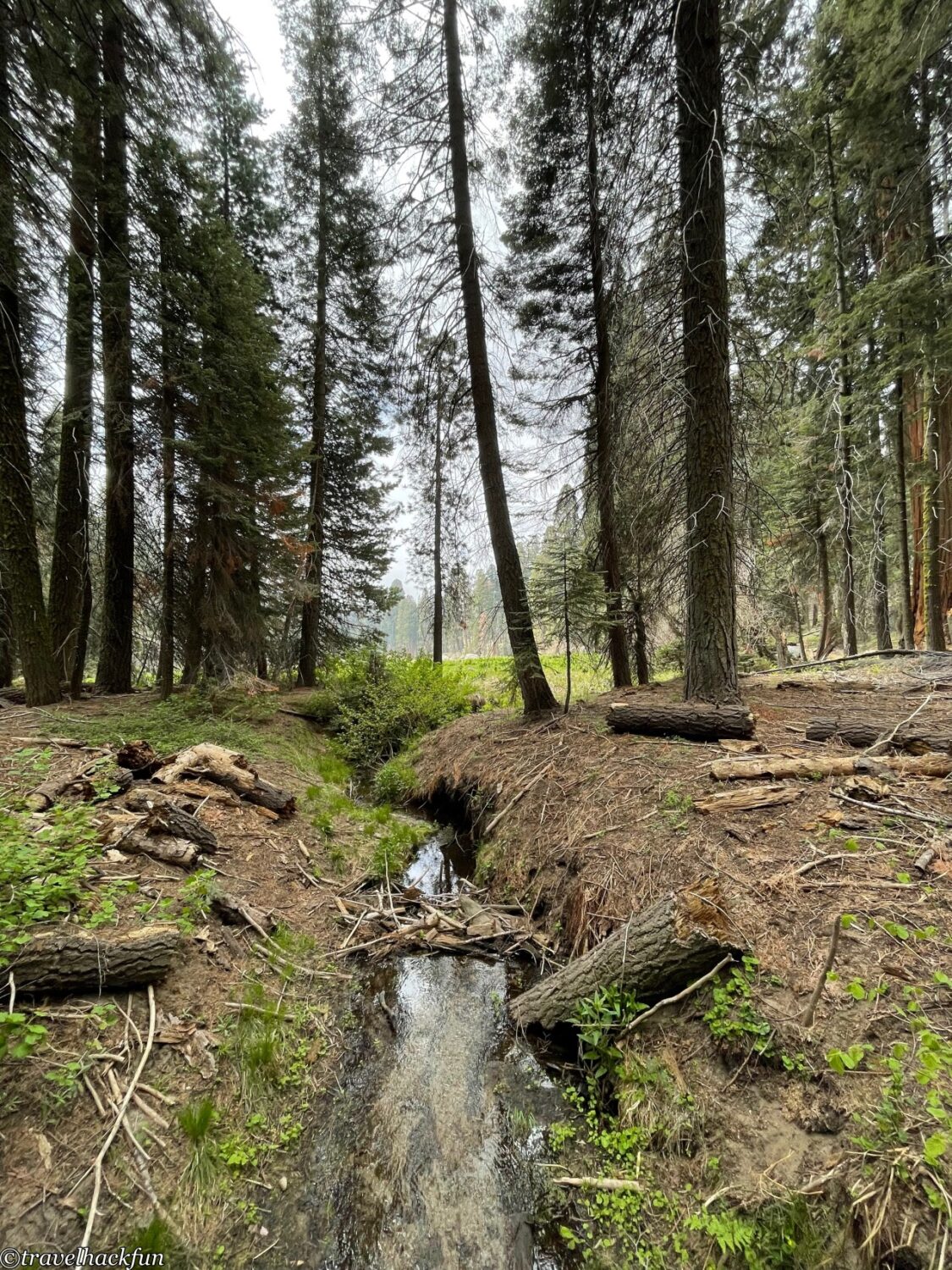
Eagle View | High Sierra Trail
Eagle View is a beautiful viewpoint located on the High Sierra Trail. The trail itself is a backcountry trail and is very long, going all the way to the top of Mount Whitney. That said, if we start from the trailhead in front of Crescent Meadow parking lot, it's a short walk to reach Eagle View, where we can see a panoramic view of King's Canyon and Sequoia National Park, including Moro Rock.


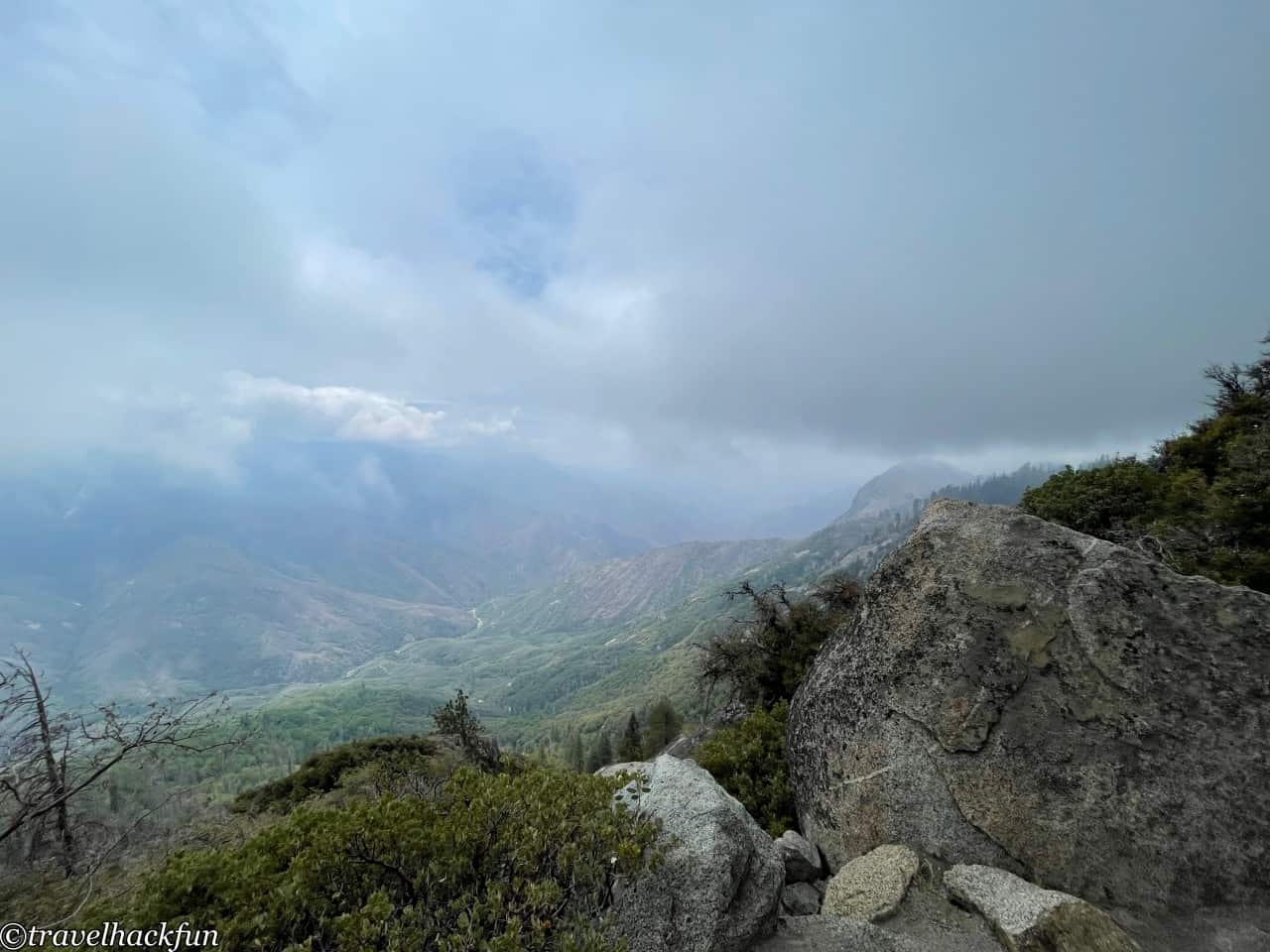
Squatter's Cabin | Huckleberry Trail
Squatter's Cabin is on the Huckleberry Trail, also near Crescent Meadow. The story of this cabin is quite interesting. In the 19th century, American settlers could register to own the land they lived on as long as they could settle down. The person who built this cabin was such a reclaimer, but he didn't realize that the land had already been registered by someone else after he had built the house.
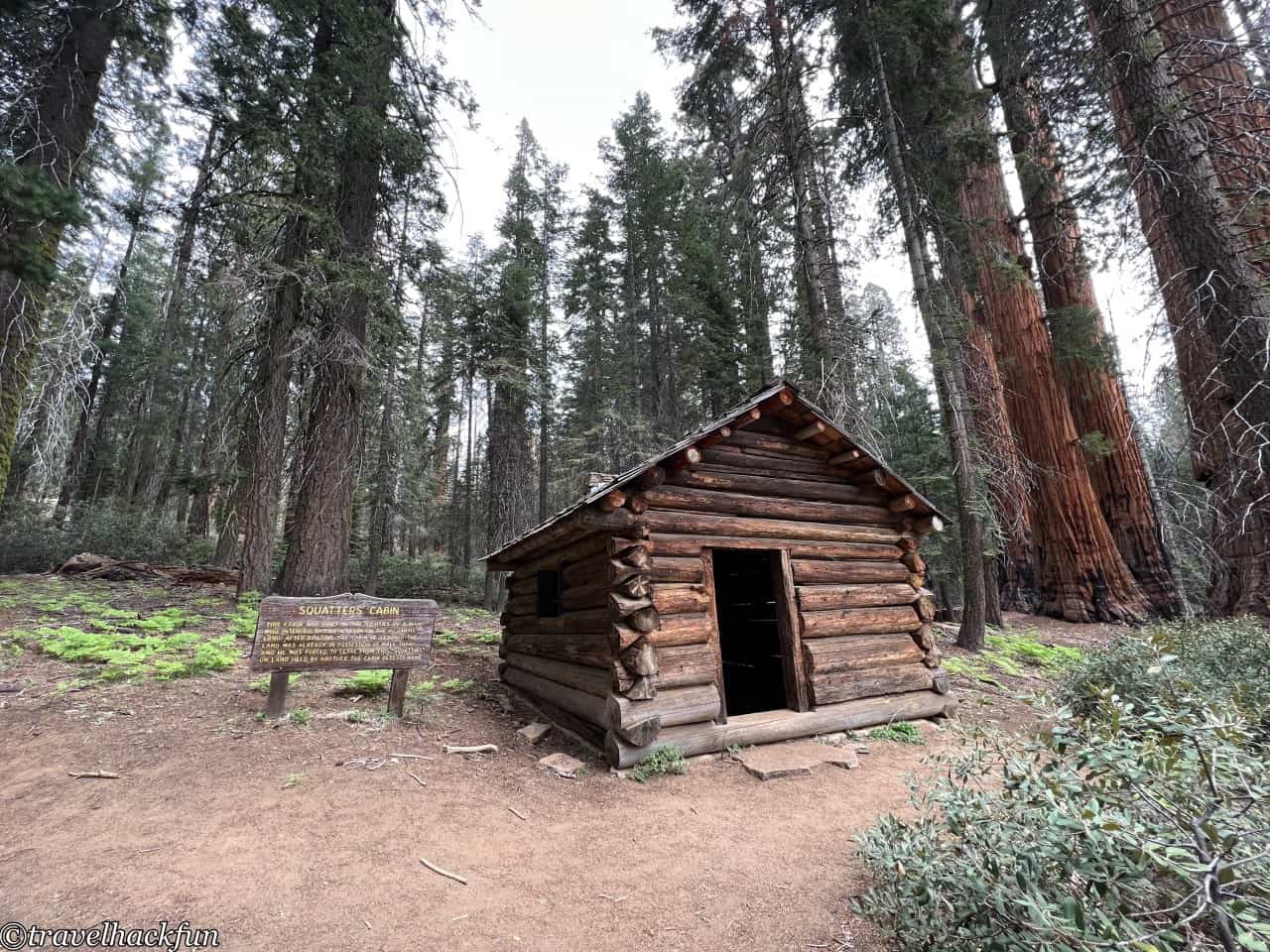
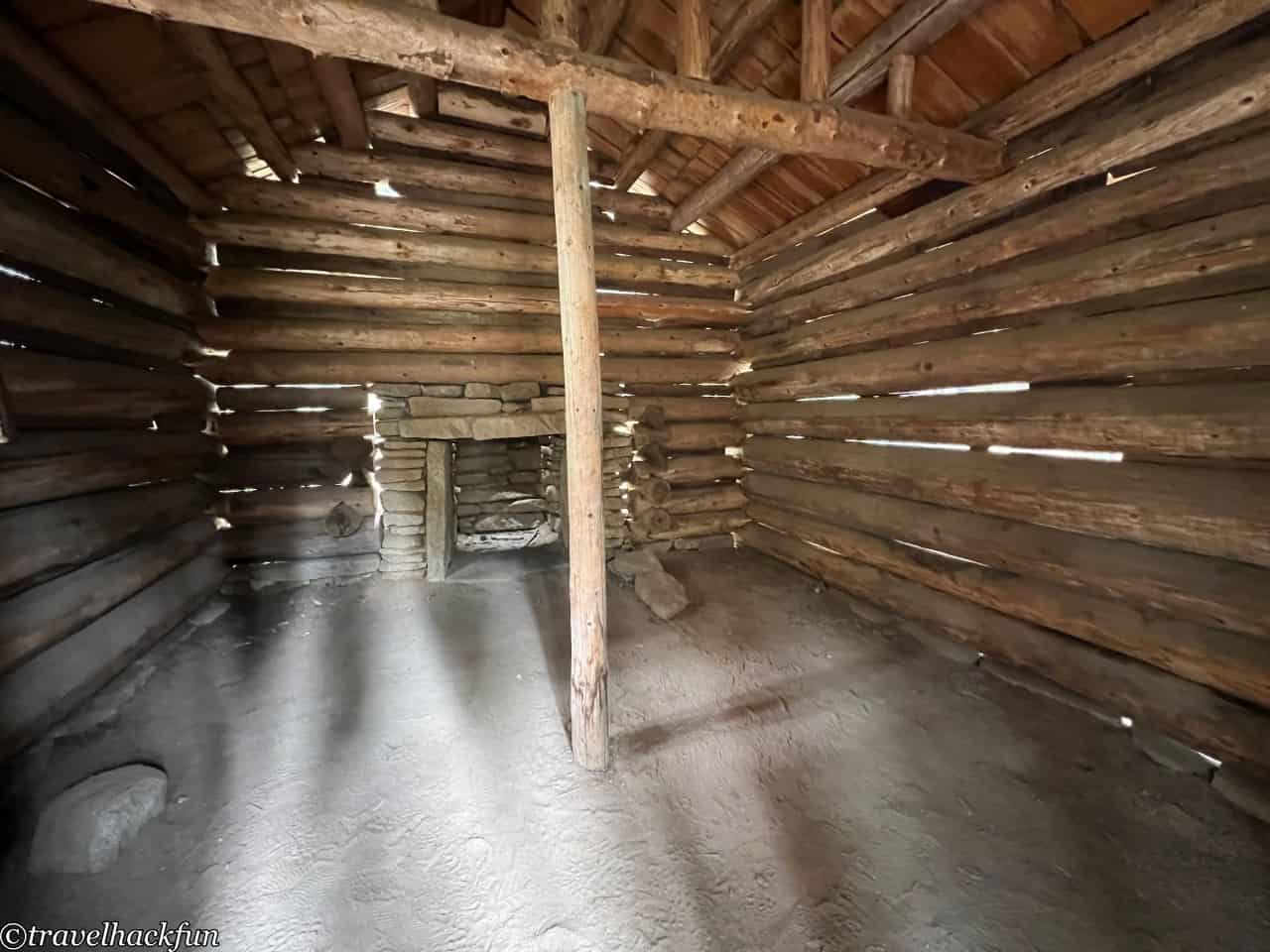
The Huckleberry Trail is about 2 miles long. It can be planned as part of a loop route from Soldier's trail to the trail system near Crescent Meadow. It was quite scenic with lots of giant sequoias along the way.
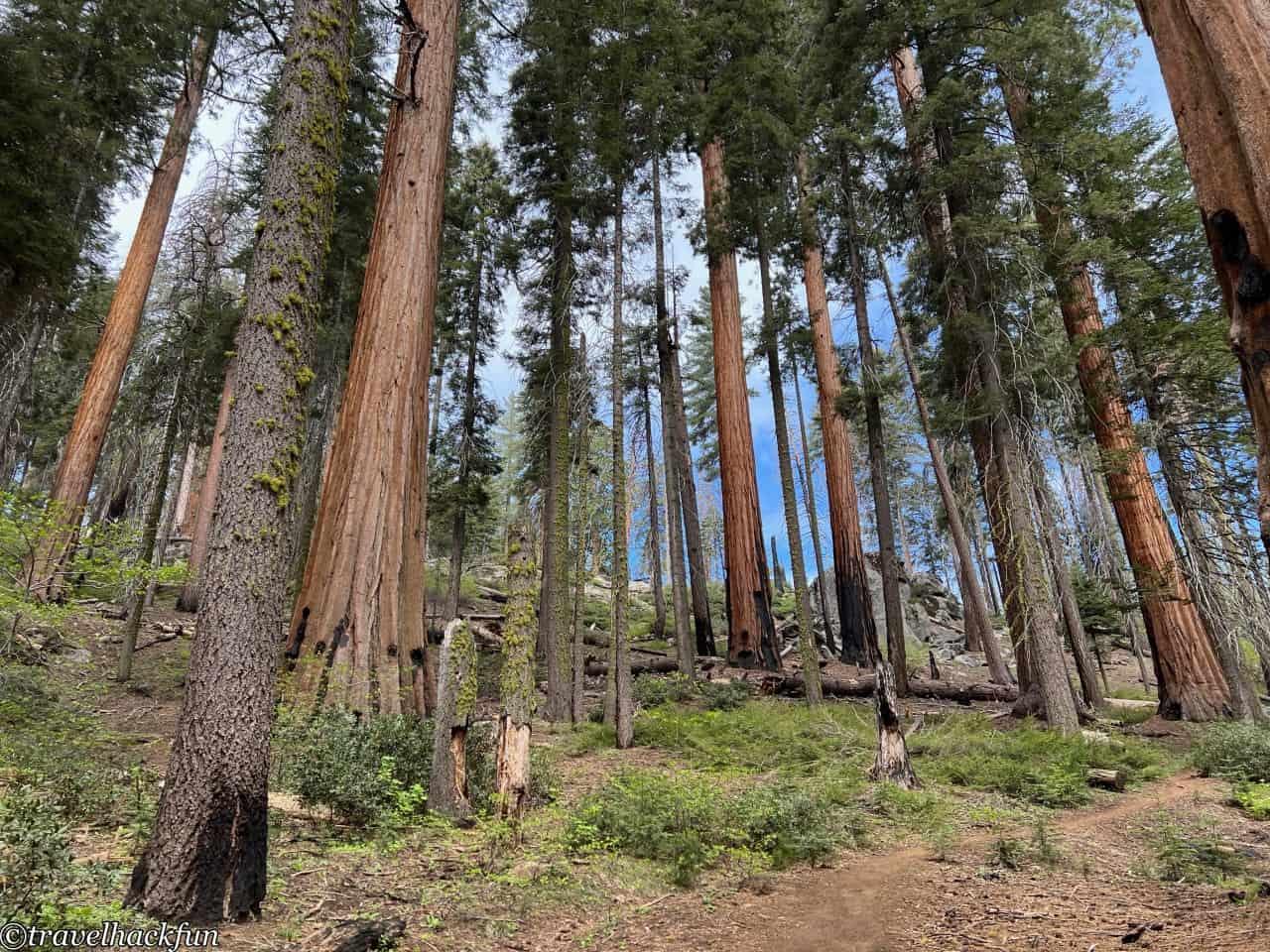
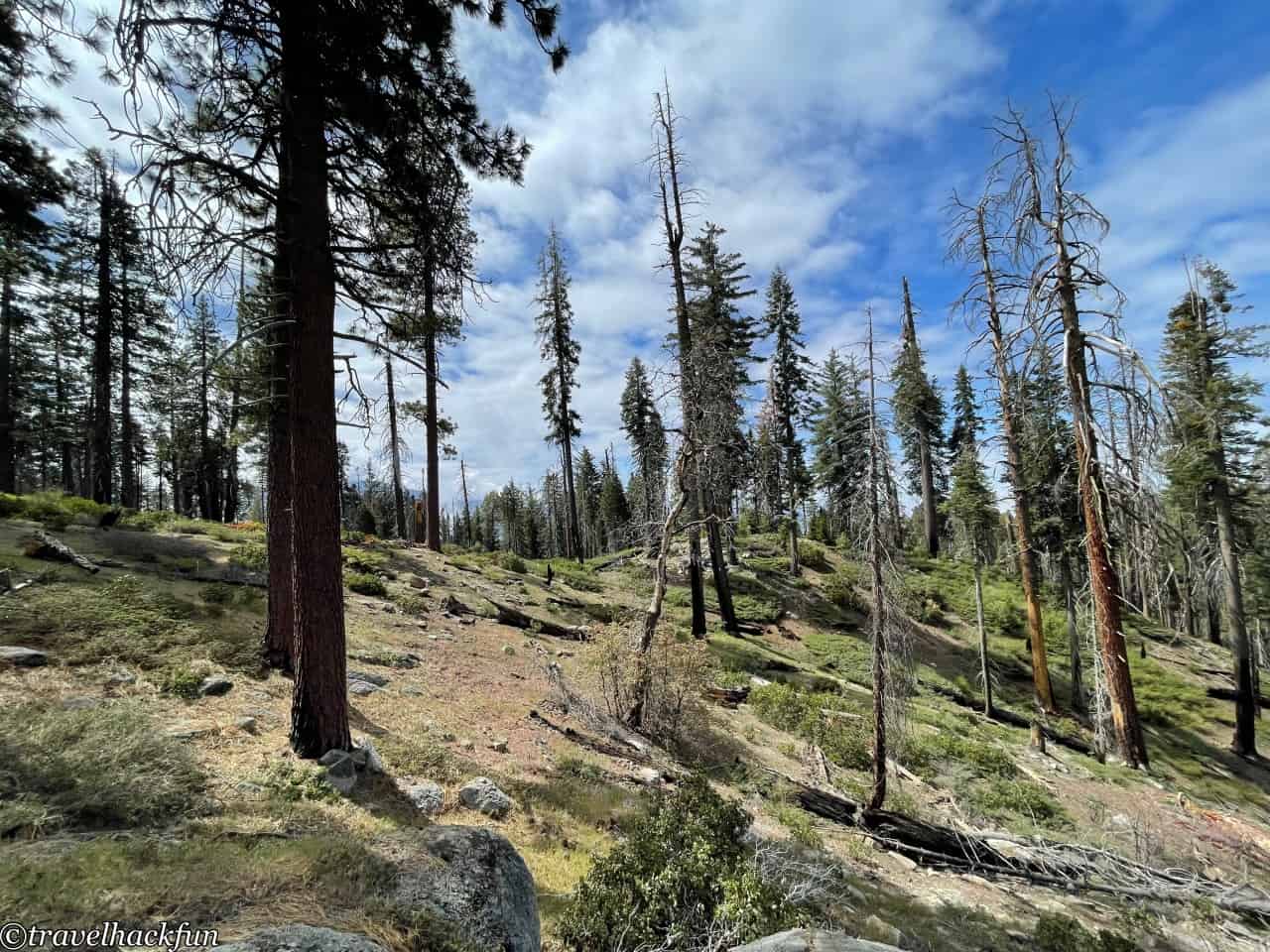
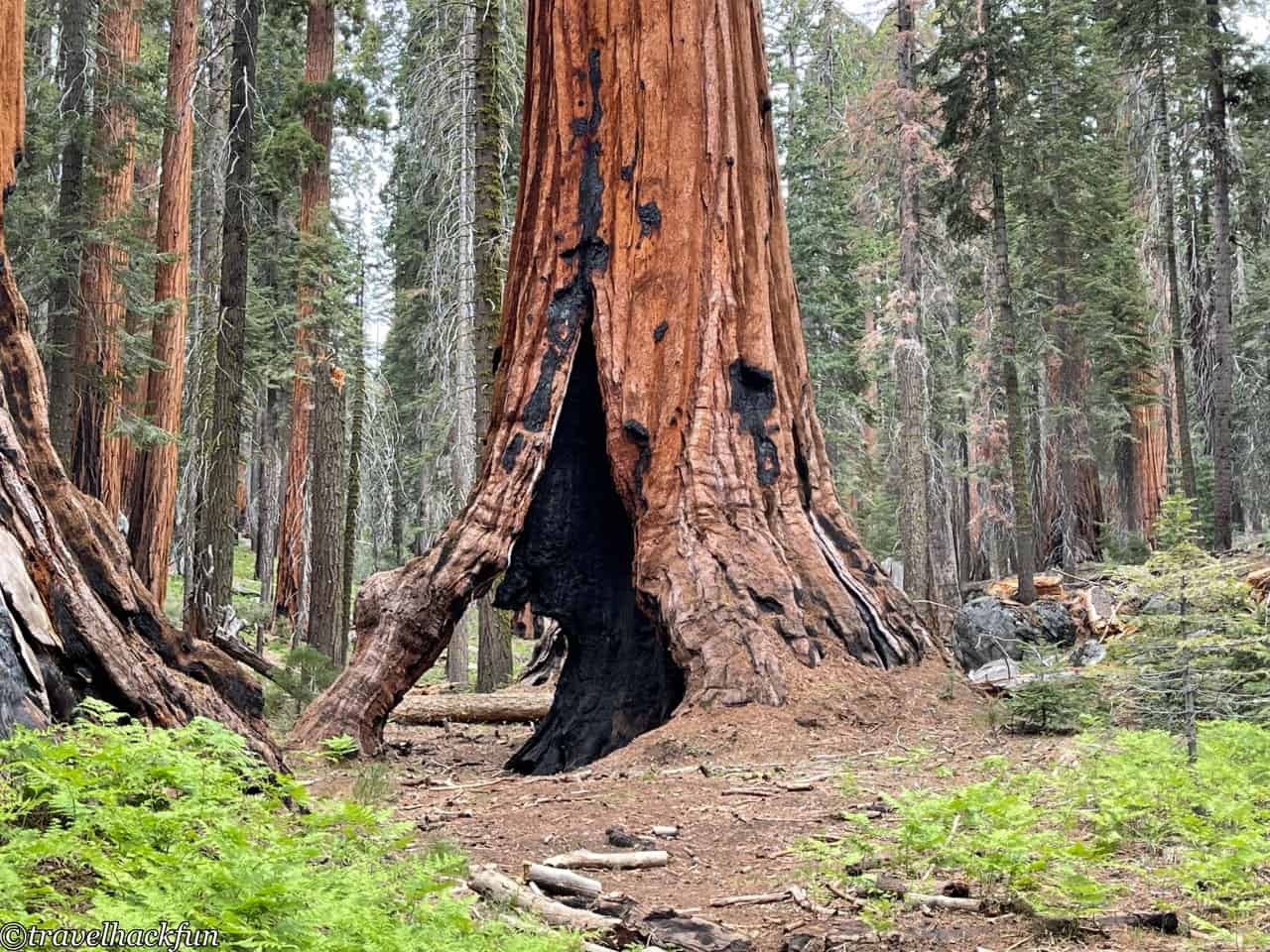
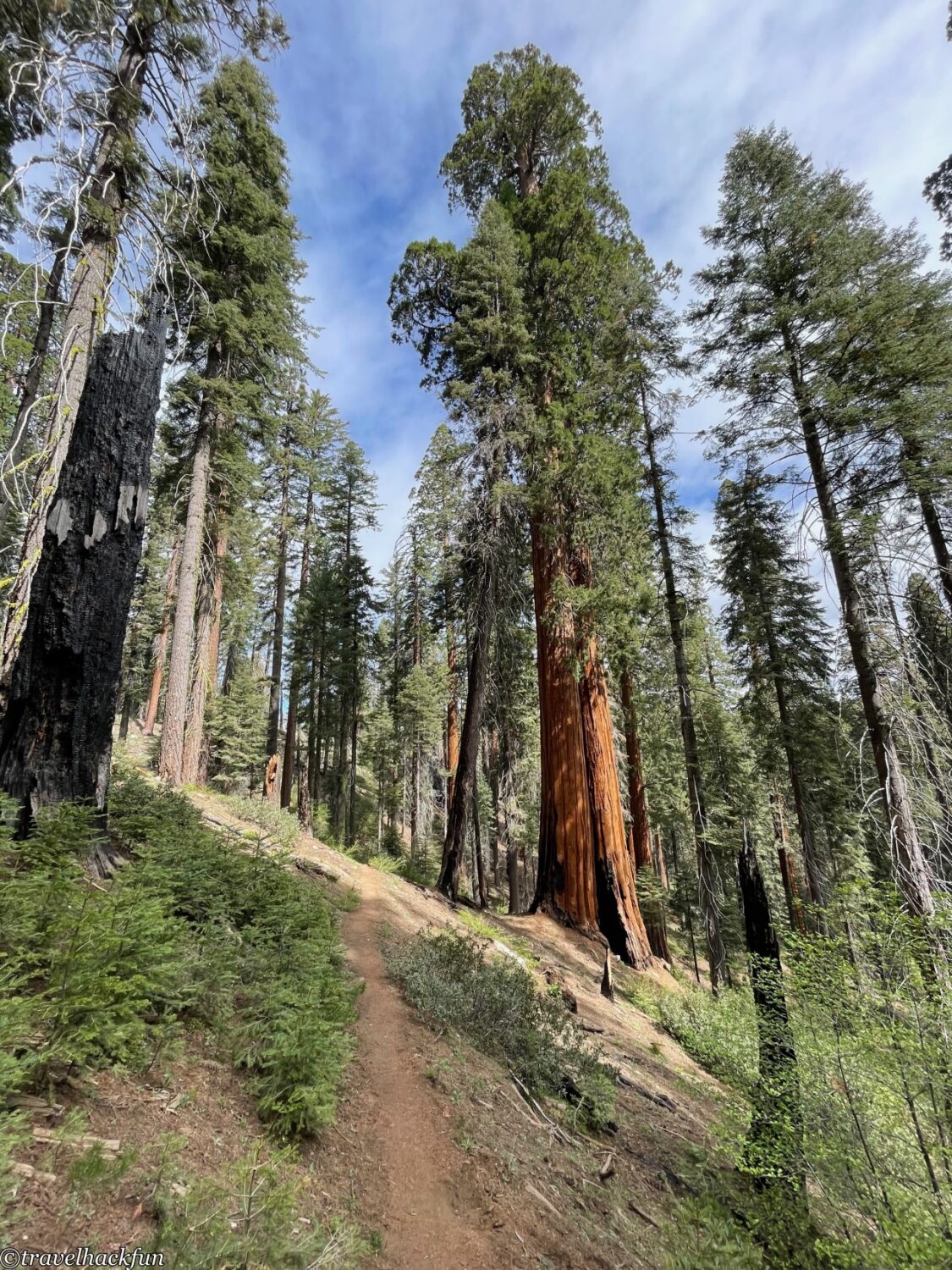
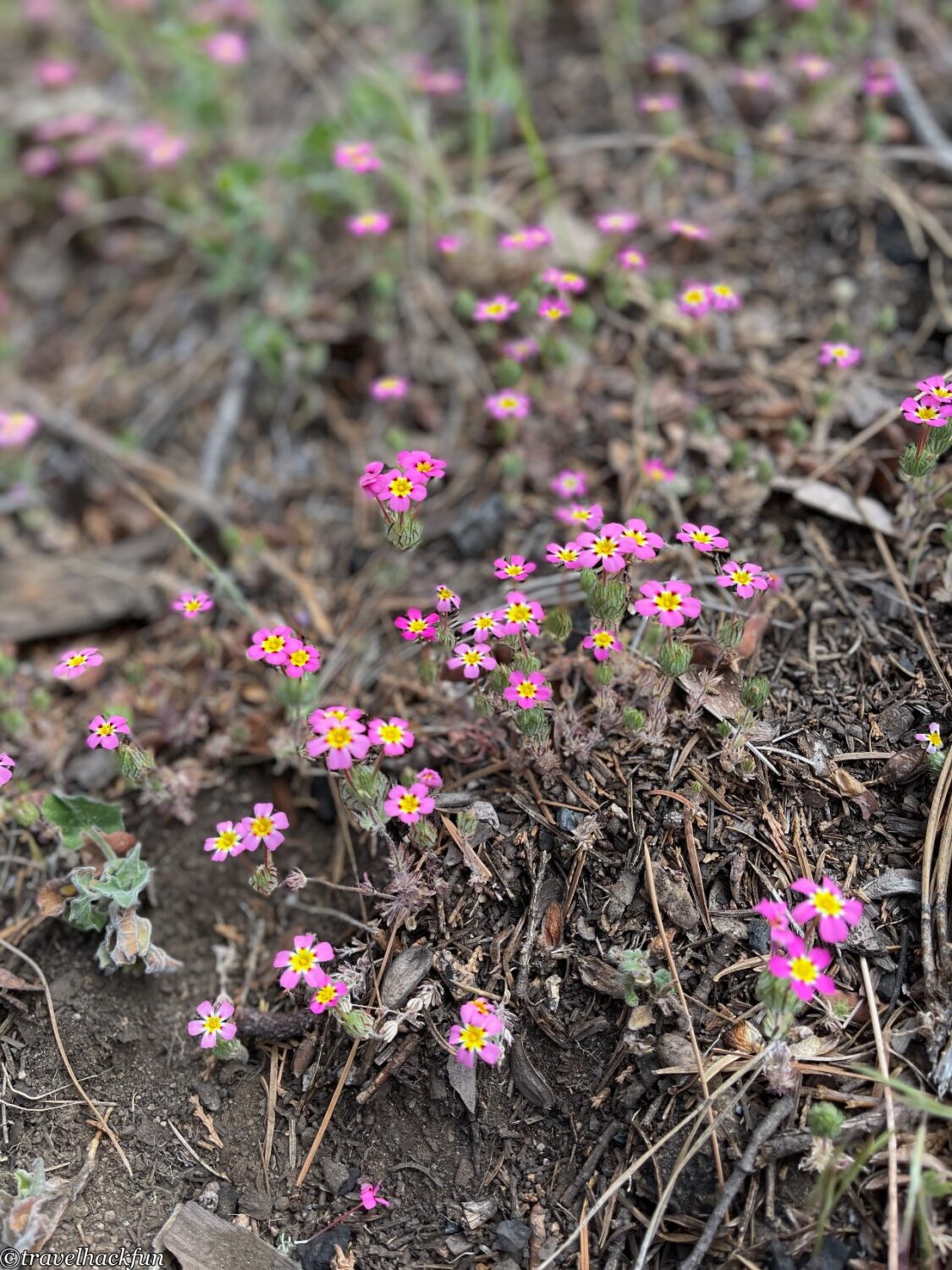
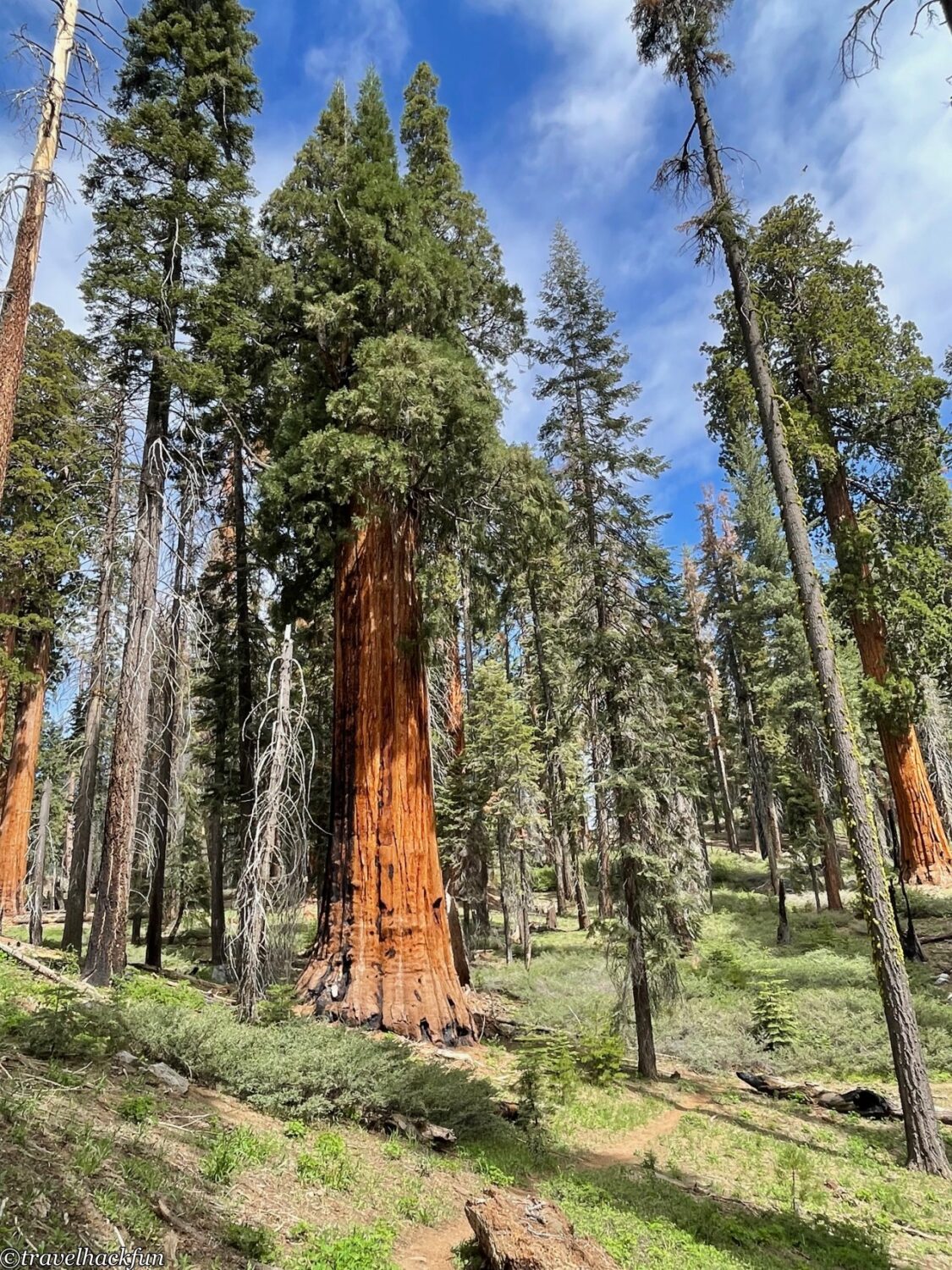
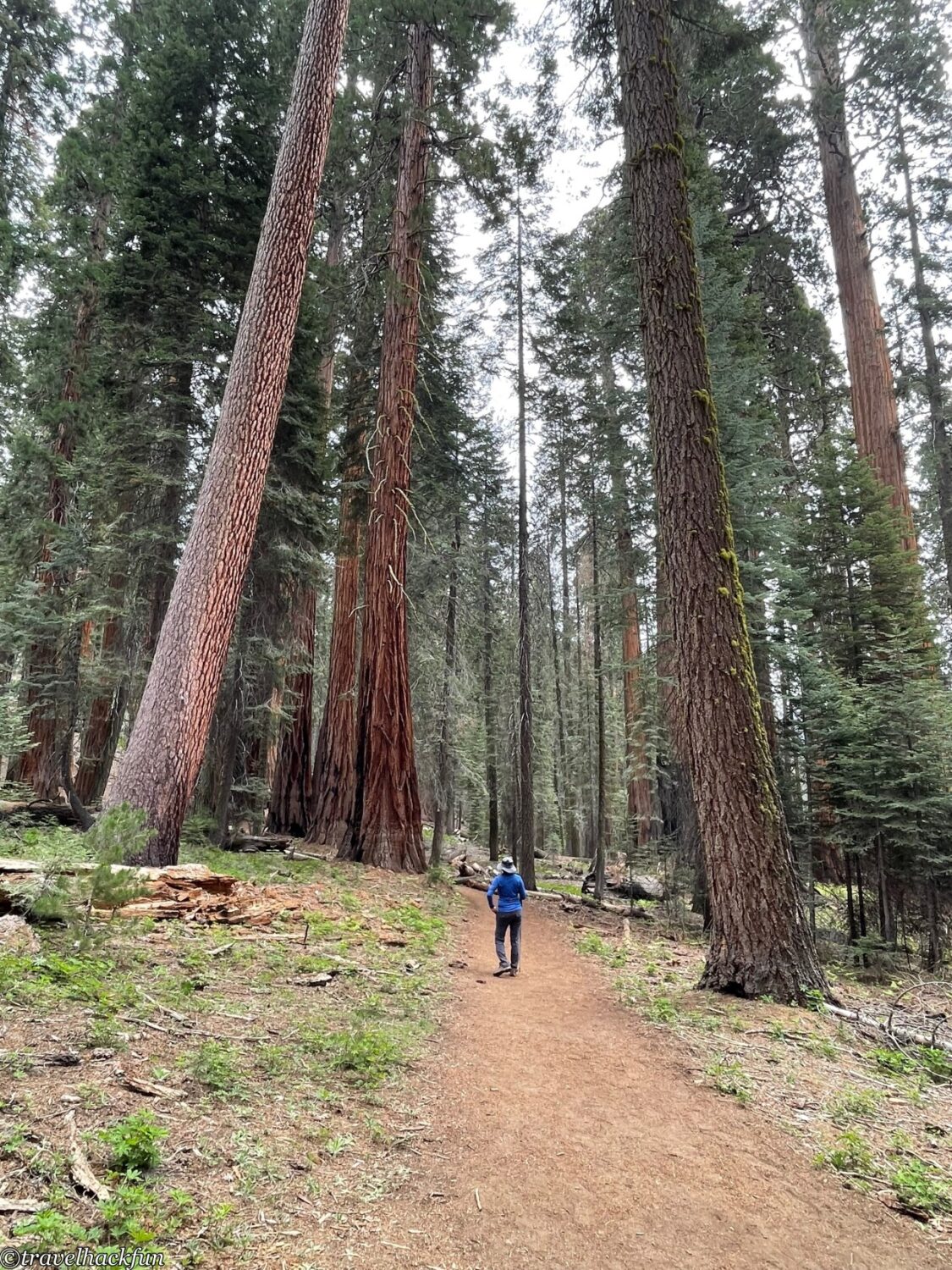
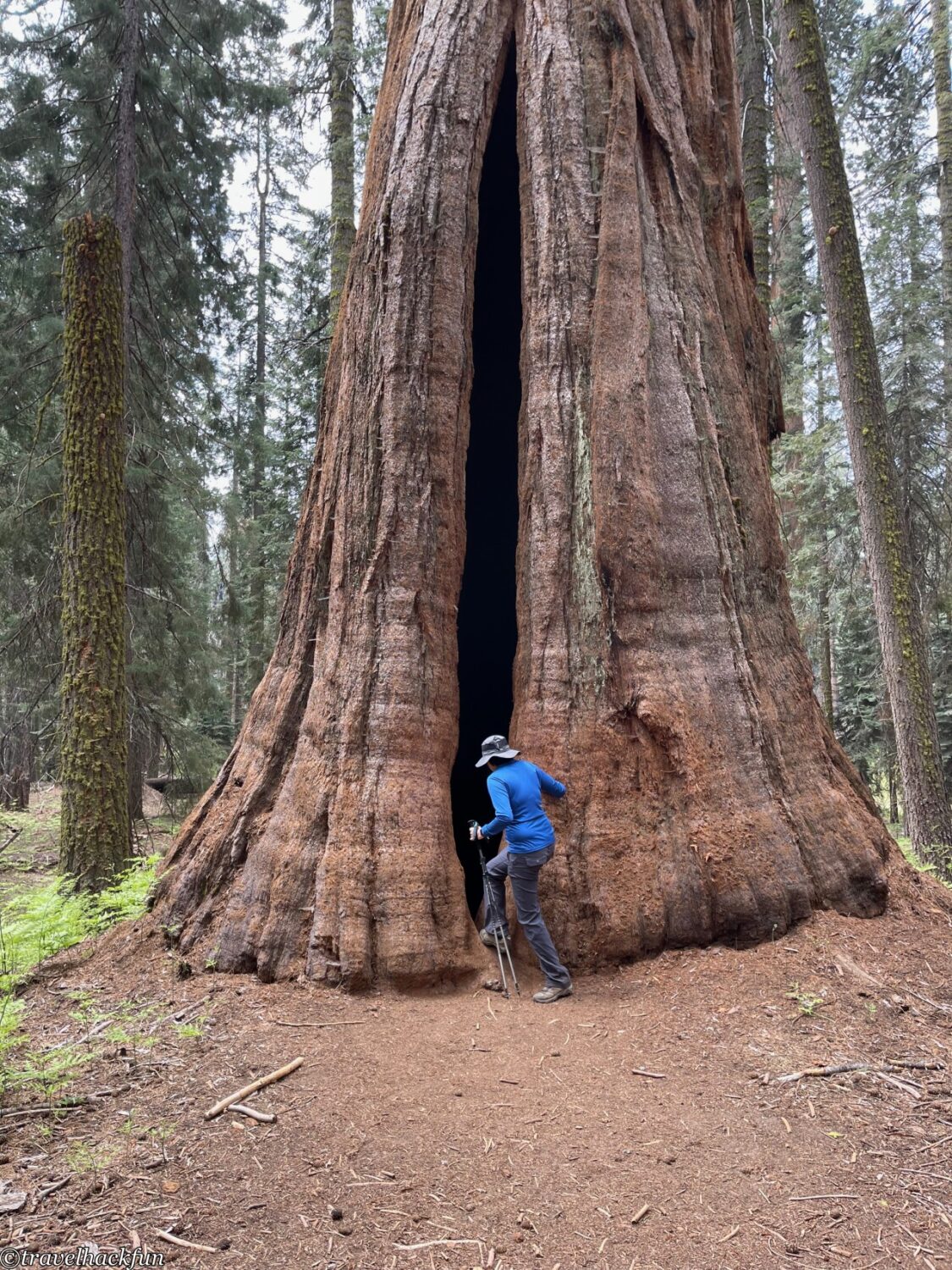
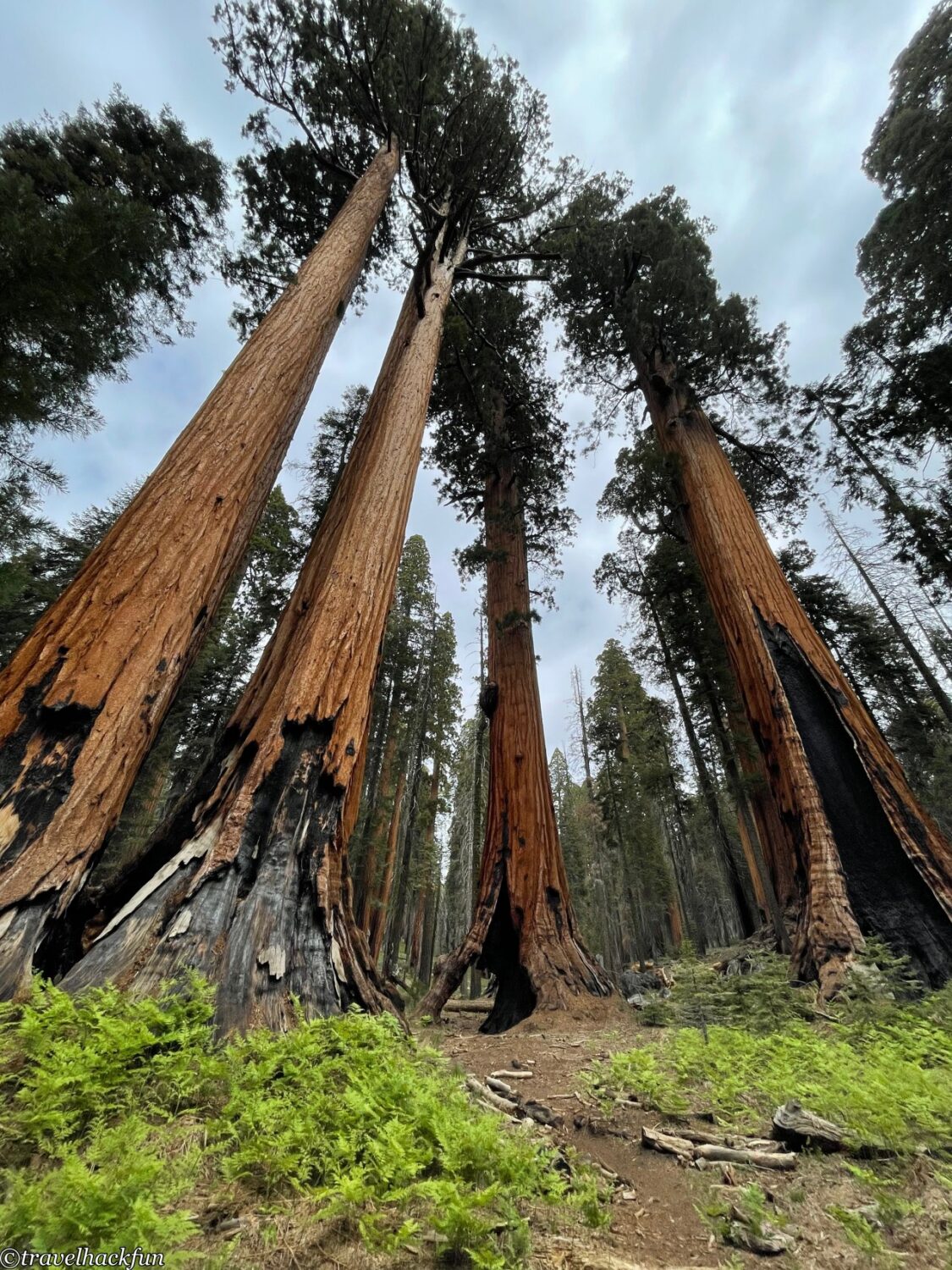
Soldier's Trail
Soldier's Trail is the trail opposite of Tunnel Log. If you open the map in front of us, you will find that every scenic spot along the trail system of the national park can be connected. We took the path from Soldier's Trail all the way to Crescent Meadow, which took a few hours.
The reason why I took this trail is purely because I like to see the sequoia forest. This trail is not very famous, so there were only a few people and we were able to enjoy the quiet atmosphere. Along the way, we passed by many groves.
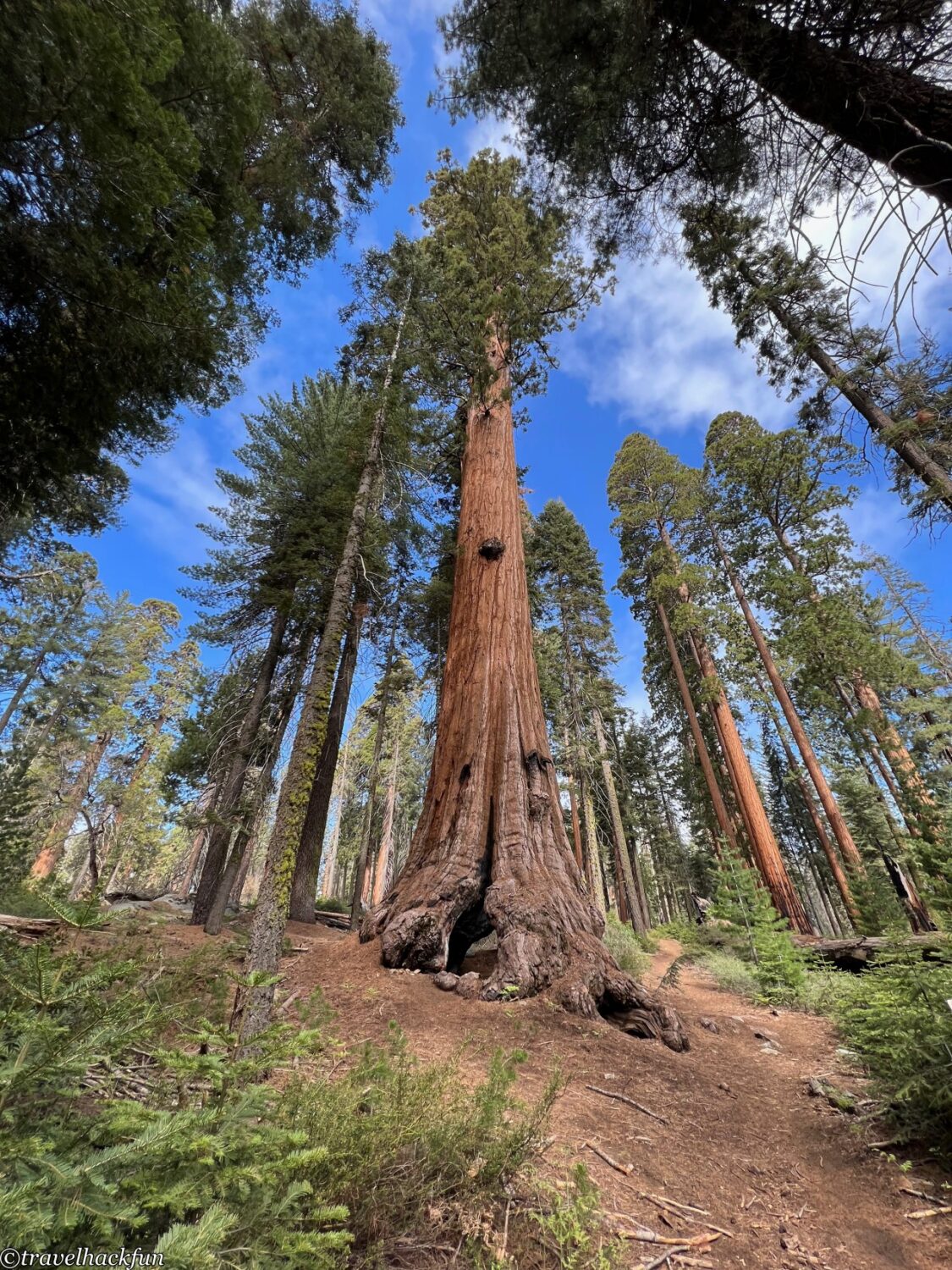

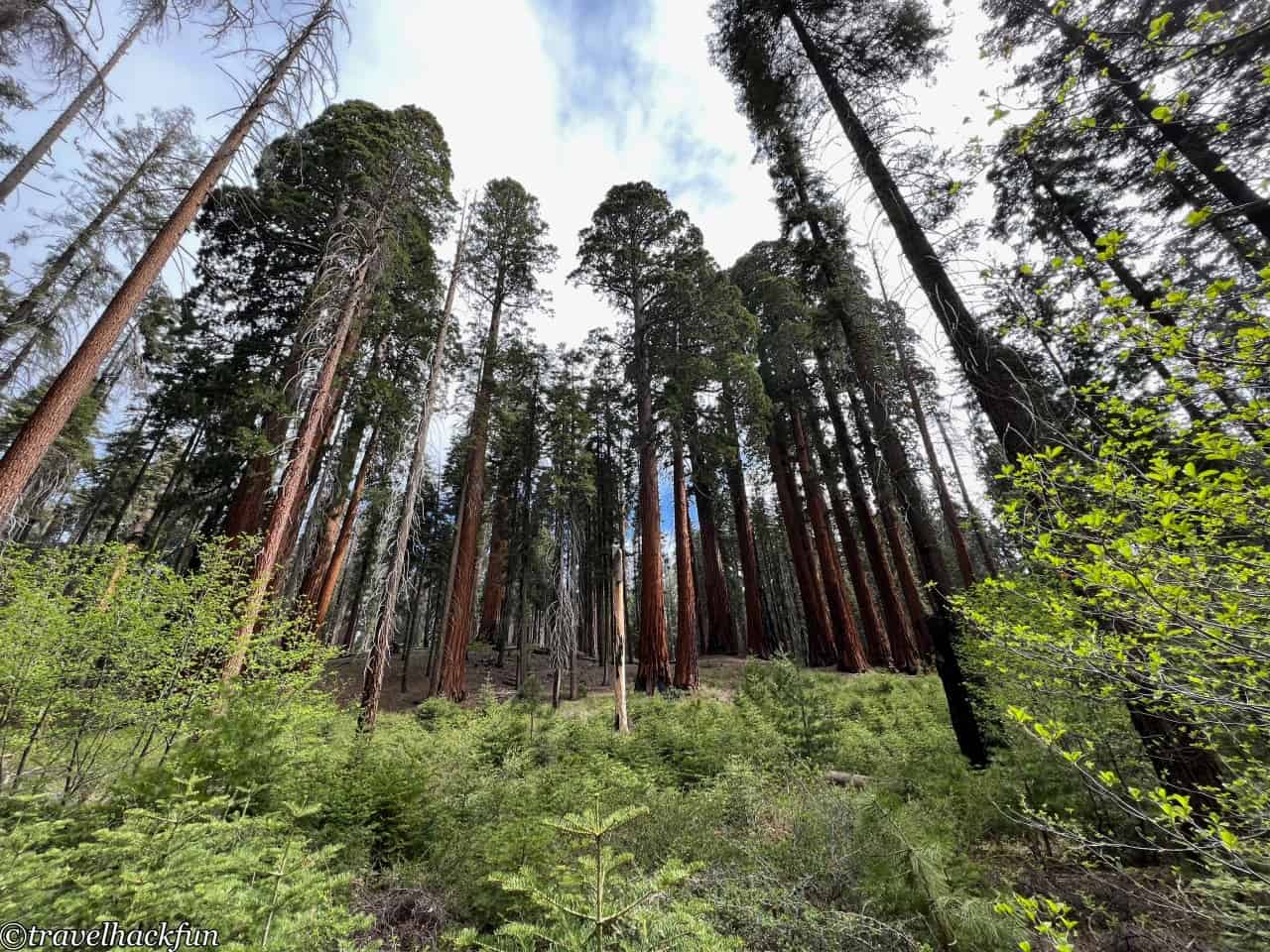
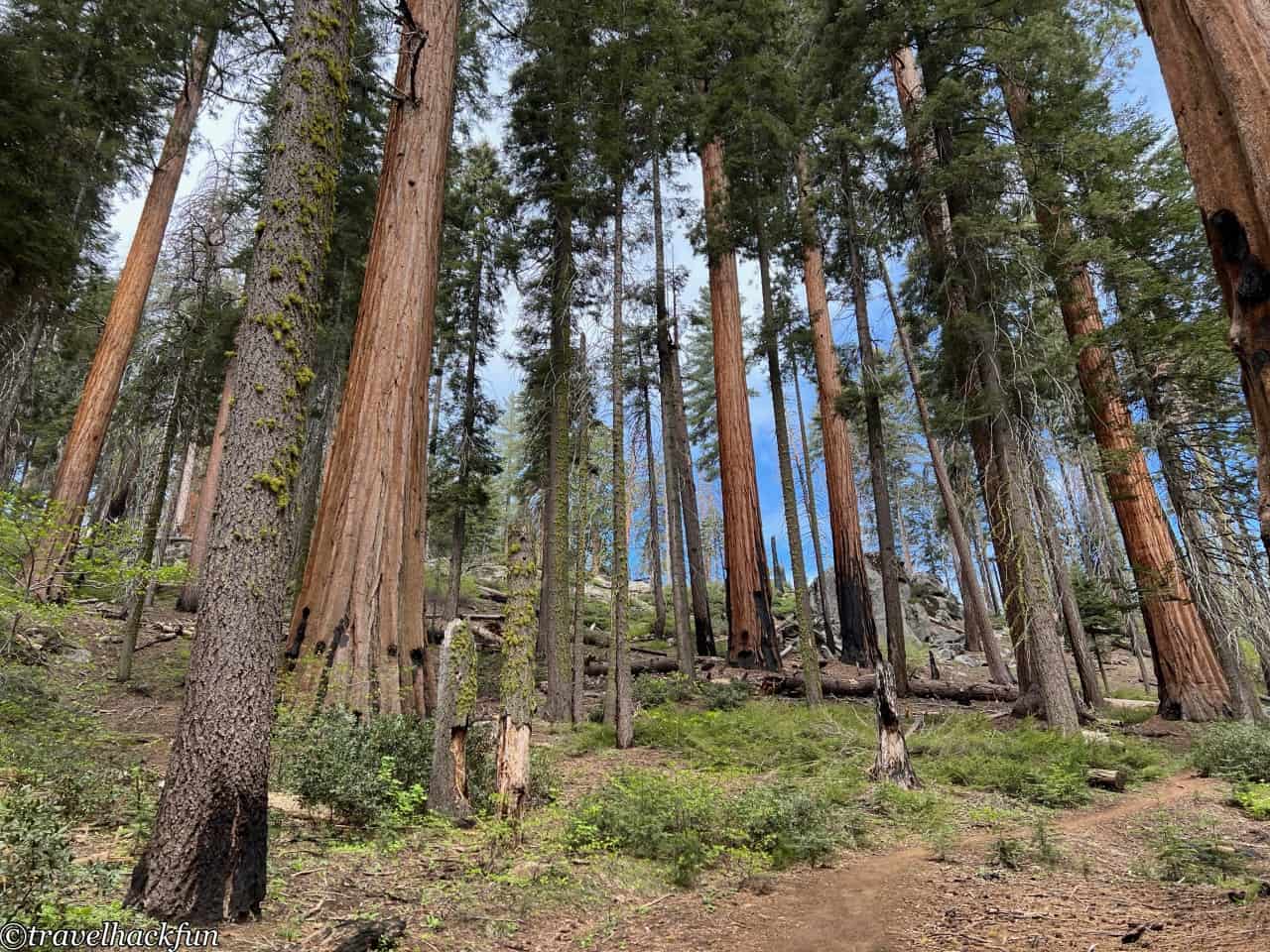
In the sequoia forests, you can often see burn marks on some of the trees. I really admire their exuberant vitality. Since the sequoia bark is not flammable, you will often see the bottom of the tree burned into a hollow, but the exterior is still intact.
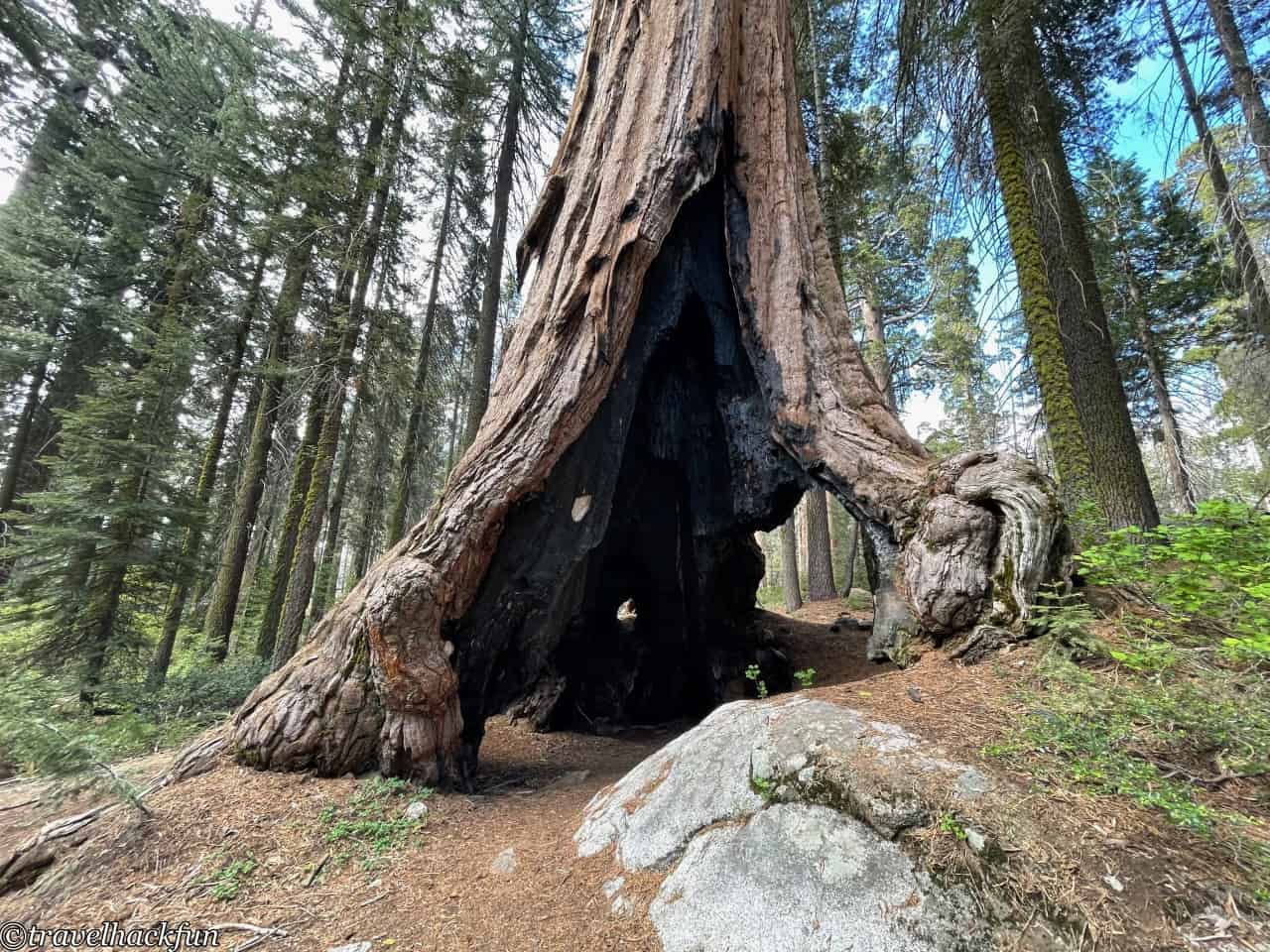

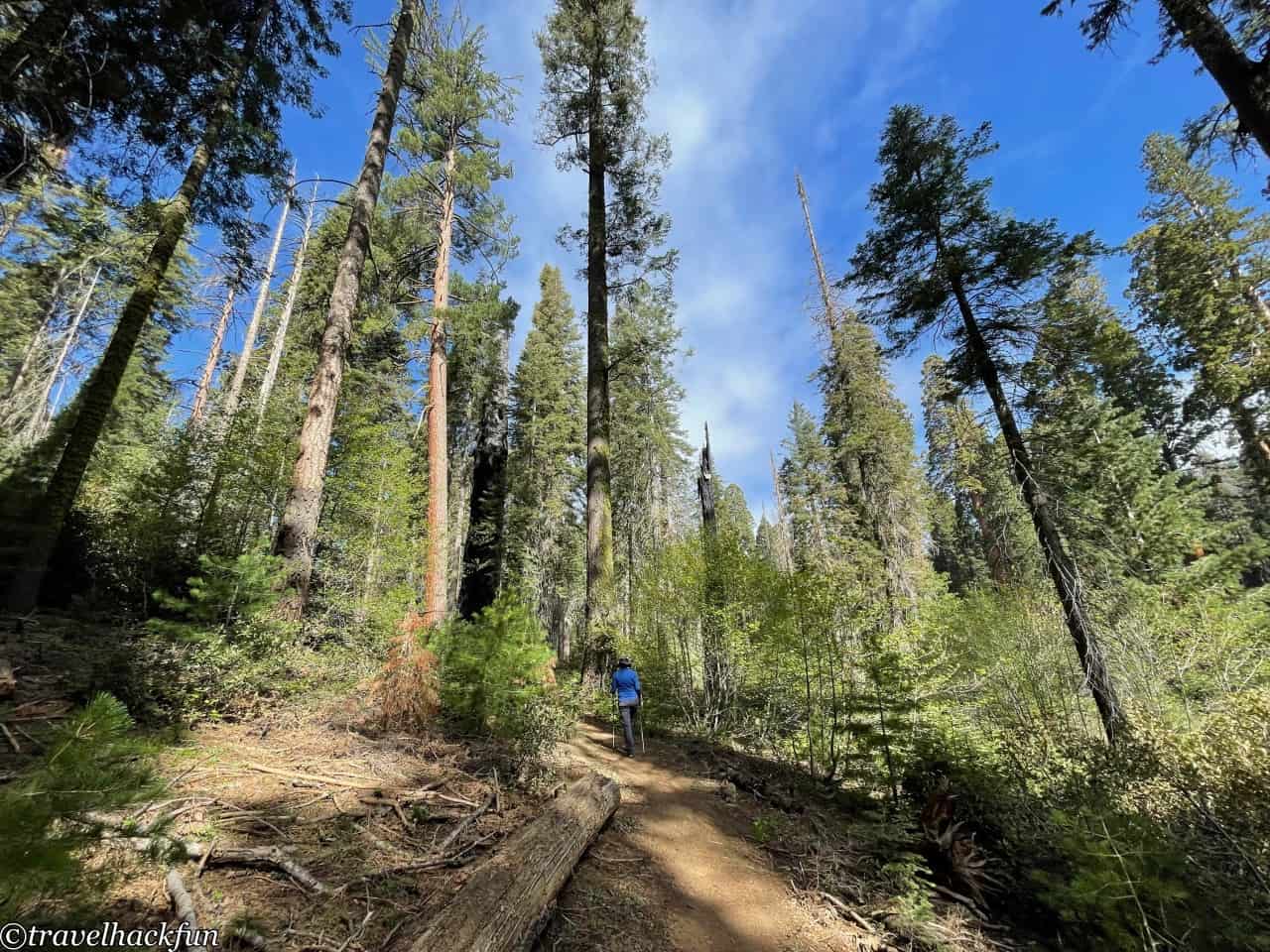
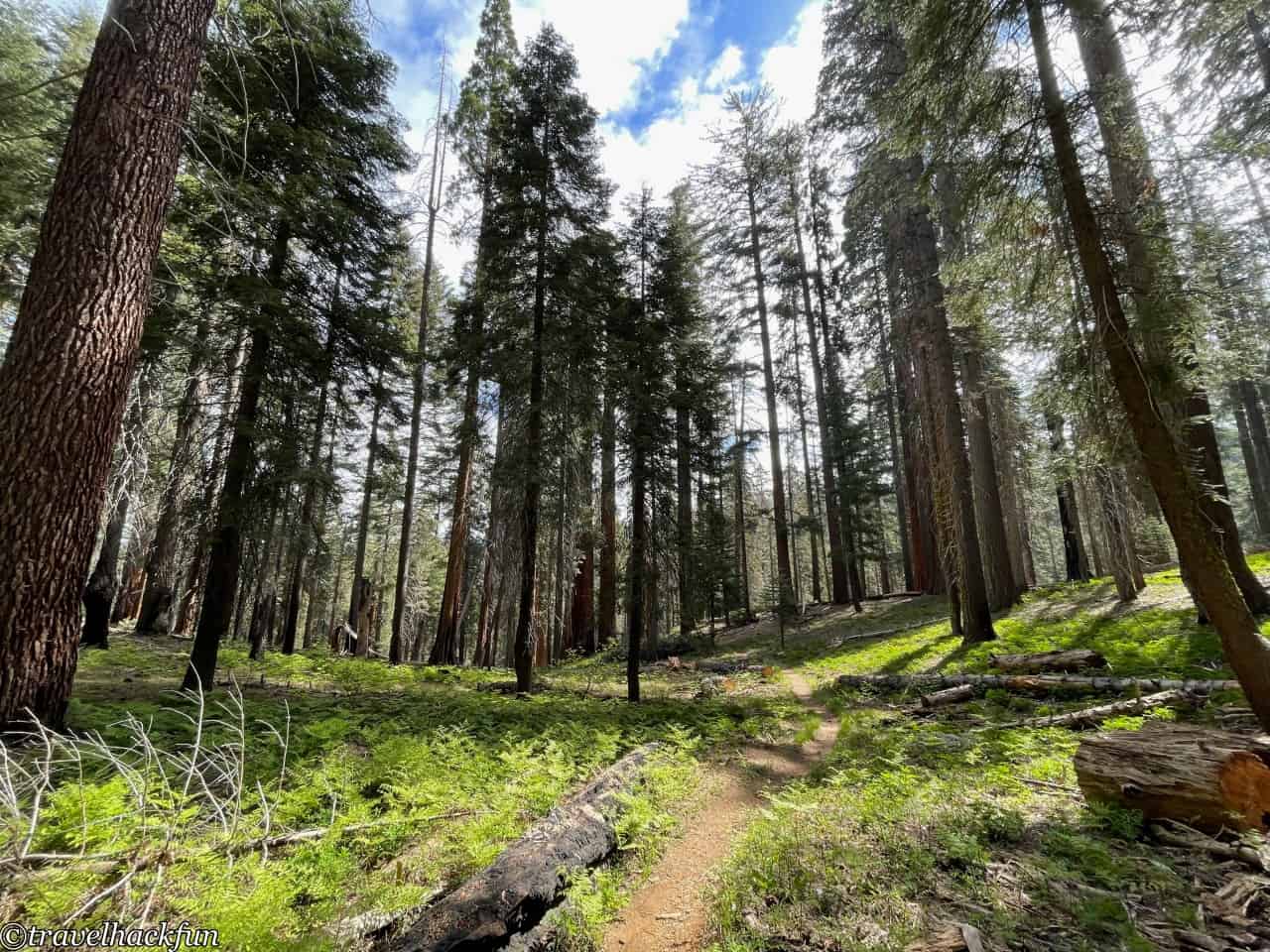
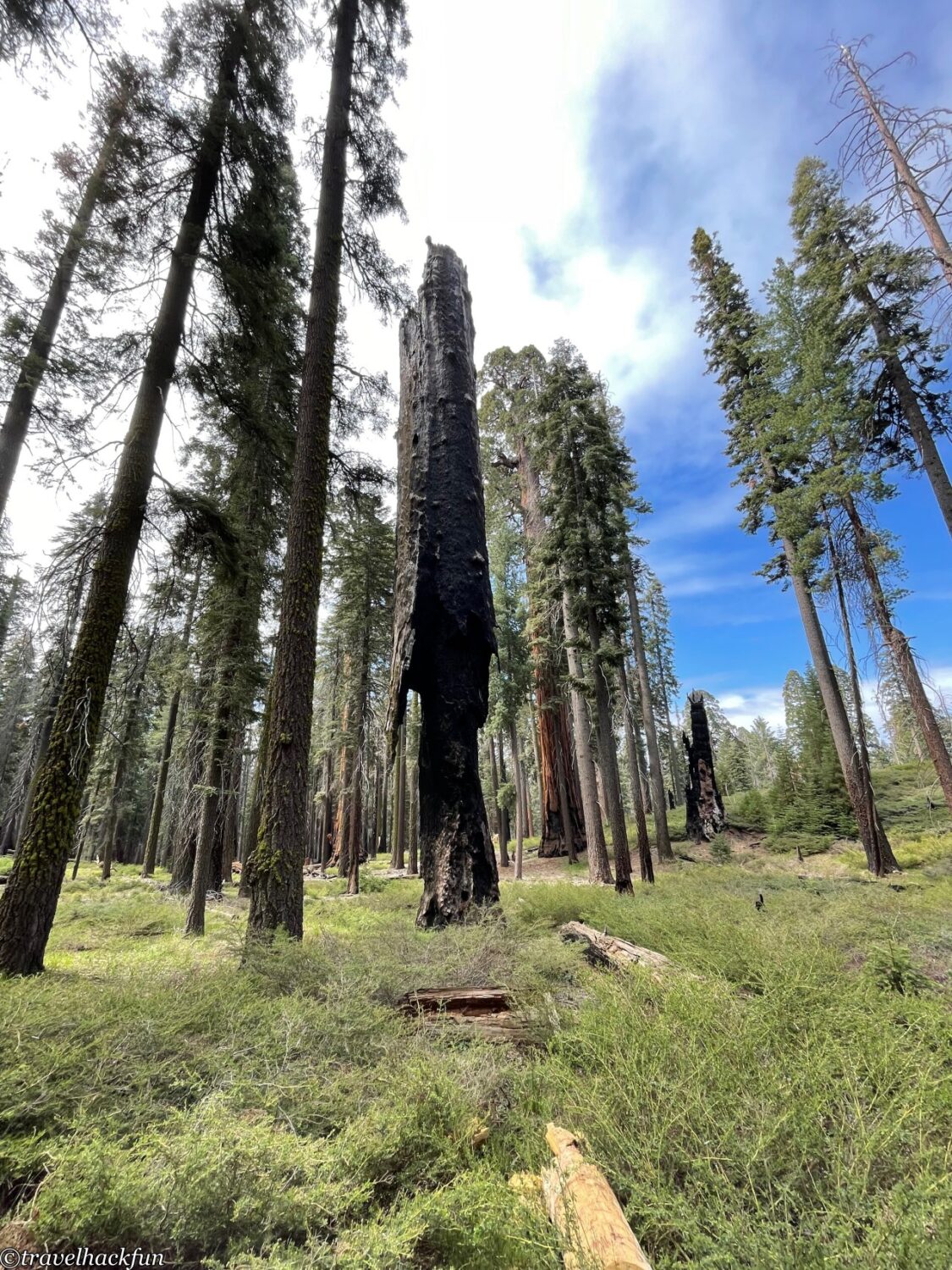
Further reading
Thank you for visiting our website.
All the content on this site is original and shared with the purpose of providing valuable information. We sustain the operation of this site through a small amount of advertising and sponsored links. If you click on links to third-party merchants on our site and make purchases, we may receive a portion of the sales as a commission. If you click on links to third-party merchants on our site and make purchases, we may receive a portion of the sales as a commission.
Find more posts on a map Here.
First time going camping?
Check out Camping 101 | A Simple Gear List for Beginners
My recommended resources for hotel bookings.
Recommended travel credit card for US-based travelers
Travel with just a backpack!
Buy me a coffee and support my contents!
If you are interested in quoting this article or using any part of its content and images on your website or publication, please contact us via email to request permission.
